UNESCO World Heritage Sites
Food to Try
Drinking in Spain
Best Time to Visit
Weather & Climate
Top Destinations
Getting Around Spain
One-Week Itinerary
Top Things to Do
Top Attractions in Each City
Best Beaches
Events and Festivals

The 10 Best Traditional Festivals to Experience in Spain
corradobarattaphotos/Getty Images
Spain's colorful, lively and passionate culture draws millions of visitors every year, all of whom are eager to experience this fun and vibrant country for themselves. Without a doubt, there's no better time to experience local culture at its best than during one of the myriad traditional festivals in Spain throughout the year. Each festival has a completely unique vibe, with unforgettable traditions and customs that make it unlike any other celebration in the world. Be sure to try and experience one of these unforgettable traditional festivals in Spain on your next trip.
Semana Santa
You may have heard of Semana Santa —Holy Week—but you've probably never seen it celebrated on the Spanish level before. Throughout many parts of Spain, elaborate processions take to the streets every day throughout the week leading up to Easter as members of local parishes and religious brotherhoods parade ornate floats depicting Jesus Christ and the Virgin Mary throughout the city.
These processions have been taking place throughout Spain for centuries, and look much the same as they did hundreds of years ago. The elaborate floats, traditional costumes, and somber music played by live bands make for an Easter celebration unlike any other.
You can catch Semana Santa processions in many cities throughout Spain, but Seville and Malaga are home to some of the most famous. Don't underestimate the celebrations in Castilla y León, either—the cities of Valladolid and León also host incredible processions.
San Fermin (Pamplona Bull Run)
A controversial yet popular festival that draws hundreds of foolhardy souls and hundreds more eager spectators, Pamplona's Bull Run might just be the most action-packed traditional festival in Spain.
The bull runs are actually part of a larger local festival known as San Fermín, taking place in the northern city of Pamplona for a week in early July. Each morning throughout the duration of the festival, participants and bulls take to the streets in a nail-biting race to the bull ring, where a bullfight will take place later in the day.
The first official documented celebration of San Fermín took place in 1591, and was supposedly a much more low-key affair compared to the raucous celebration we know it as today. Although the rest of the festival is full of unique local traditions, the bull run itself is dangerous and considered by many to be unethical.
TripSavvy does not recommend running with the bulls and trusts its readers to make their own decisions on the ethics of the bull run event and bullfighting as an attraction.
Tomatina Tomato Fight
Not everyone can say they've taken part in the world's biggest food fight. Except for the thousands of people who take to the streets of the tiny town of Buñol, near Valencia, to do so every year. The food of choice at La Tomatina is, unsurprisingly, tomatoes. Messy? Yes. Unforgettably fun? Also yes.
Sources vary when it comes to the origins of the Tomatina, but the festival's official website claims it all started in 1945, when a disruption during a parade resulted in spectators and participants throwing tomatoes from a nearby fruit stand at each other. The tradition caught on, and now every year on the last Wednesday in August, Buñol transforms from a sleepy village into party central.
Participants must purchase a ticket , which includes travel to Buñol from one of several larger cities, in order to participate.
If you've celebrated Guy Fawkes Night or attended a Homecoming party, you might think you've seen a big bonfire. The truth is, unless you've been to Las Fallas in Valencia, you haven't seen anything yet.
Throughout several nights in mid-March, the streets of Valencia come alive with giant paper sculptures, painstakingly handcrafted in ornate detail. Then, on the last night, most of the sculptures, or fallas , are burned in epic bonfires throughout the city. A select few are saved from the blazes every year and end up in Valencia's Fallas Museum.
The first documented Las Fallas celebration took place in 1784, and each year it's grown bigger and better than ever. It takes place every year in March, featuring more than 700 incredible fallas .
Feria de Sevilla
Seville 's most iconic celebration, the annual April Fair, is a colorful extravaganza of flamenco, horses, and sherry. Think of it as everything Andalusia is famous for packed into one epic week.
Though it began as a humble livestock fair, the Feria is now a place to see and be seen, with lavishly costumed men and women riding in horse-drawn carriages among the casetas , or tents. Many casetas are private, but several public tents are available, so anyone can enjoy the party.
During the day, Feria is a wholesome family affair, with children enjoying the fair rides and families sitting down for long, leisurely meals inside their casetas as traditional music fills the air. At night, however, the event turns practically hedonistic, with free-flowing alcohol and parties raging long after the sun has gone down.
Before the somber solemnity of Lent and Holy Week, most cities throughout Spain erupt into vibrant, happening celebrations not unlike Mardi Gras in New Orleans . No matter where you find yourself in the country, you'll be able to find a Carnival celebration nearby. While each city's celebration retains its own distinct vibe, in general, expect extravagant costumes, exciting parades, and plenty of music and alcohol.
Keep in mind, however, that not all Carnival celebrations are created equal. Sure, you'll have a good time no matter where you end up, but a few select destinations really go above and beyond. Island paradise Tenerife is home to Spain's most famous Carnival, with easygoing Cádiz and gay-friendly Sitges not far behind.
Due to the changing date of Easter, Carnival's date varies by year.
Christmas & New Year
They say that Christmas is the most wonderful time of the year, and nowhere does that refrain hold true more than in Spain.
What makes Christmas in Spain so special? First, you've got the undeniable European wintertime magic. Think charming Christmas markets and holiday lights twinkling throughout the streets. However, Spain's pleasant Mediterranean climate and plentiful sunshine make it a much milder alternative to chillier destinations around the same time of year.
Spanish families typically get together for a long, hearty dinner on Christmas Eve, with plenty of after-dinner drinks and conversation prolonging the affair for hours. Christmas Day itself is more low-key, with Santa Claus taking a backseat to the Three Kings who appear a few weeks later, but is still a meaningful day shared among loved ones.
Cristianos y Moros
Skim any Spanish history textbook and you'll learn pretty quickly that Spain was dominated by two clashing cultures throughout much of the last century: the Moors and the Christians. Today, the battles between the two cultures come to life once more at the Moors & Christians Festivals that take place in multiple cities throughout Spain over the course of the year.
The celebrations condense 700 years of history into one evening full of mock battles taking place at a giant papier-mâché castle. And, of course, there's plenty of partying going on throughout the rest of the night as well.
Without a doubt, the most popular Moors & Christians celebrations take place in Alicante . However, other cities like Granada also host noteworthy "battles" to mark the occasion.
Semana Grande, Bilbao
Semana Grande, Great Week, Aste Nagusia (that's Basque, by the way)—whatever you call it, it's one of the most important traditional festivals in northern Spain. A legendary celebration unique to the Basque Country , this massive festival takes place every August in one of the region's largest cities, Bilbao.
What can you see at Semana Grande? A little bit of everything! Two main attractions are the giant puppets parade and the unrivaled number of concerts, with performances ranging from rock and pop to classical and jazz.
For visitors looking for a bit of friendly competition, there are plenty of contests taking place throughout the week as well, from an international fireworks competition to a strongman showdown and even an "ugly contest."
Tamborrada, San Sebastian
While on the subject of the Basque Country, let's swing over to San Sebastian for a bit. It's no surprise that in a Catholic country like Spain, each city celebrates its patron saint in style. In San Sebastian (whose patron saint is—wait for it—St. Sebastian), that means a massive drum parade known as the Tamborrada .
The fun starts at midnight every year on January 20 with the ceremonial raising of the flag in Plaza de la Constitución. From there, it's 24 hours of music, as dozens of drum lines make their way through the streets of San Sebastian throughout the day. At the end of the celebration, the flag gets taken down, signaling the end of the music until the next year. It's loud, colorful, and the only traditional festival of its kind in Spain.
Plan the Perfect Trip to Spain
August in Spain: Weather, What to Pack, and What to See
Top 15 Events in Spain in August
Spain's Events and Festivals in September
The Best Time to Visit Spain
Famous Bull Runs in Spain
The Very Best of Spain's Cities, Regions, Food, and Drinks
The Running of the Bulls in Pamplona, Spain
Where to Go in July in Spain
April in Spain: Weather, What to Pack, and What to See
Pamplona Running of the Bulls Schedule 2018
Festivals, Events, and Things to Do in Spain in October
March in Spain: Weather, What to Pack, and What to See
September in Spain: Weather, What to Pack, and What to See
Spanish Carnival Guide: Customs, Cities, and Dates
The Best Time to Visit Seville

9 Famous Festivals in Spain Not to Miss
By: Author Hannah Cooper
Posted on Last updated: August 17, 2023

Attending one of the world-famous festivals in Spain is an unforgettable way to immerse yourself in Spanish culture.
This feria range from religious and traditional festivals to a particularly unique festival akin to a giant food fight (stay with us – we’ll get there). Read on for the best festivals in Spain and how you can get involved.
Traditional Festivals and Celebrations in Spain
Most towns and cities in Spain host an annual feria in honor of its patron saint. These dates vary although they often fall in June. Wherever you’re planning on traveling in Spain, it’s worth having a quick Google to see if your itinerary overlaps with a smaller festival.
While these aren’t the most famous festivals in Spain per se, they do provide an insightful perspective on regional and local customs beyond the major cities.
9 Famous Festivals in Spain
Beyond the patron feasts, these are the biggest traditional festivals in Spain that you can experience as a tourist.
The different monuments that are made for Fallas are always almost too beautiful to burn.
1. Las Fallas – Valencia
Las Fallas is one of the largest annual celebrations in Spain. This is held in Valencia every March in honor of the patron saint, San José (Saint Joseph). The name refers to sculptural monuments – fallas – painstakingly crafted out of wood and papier-mâché. Displayed all over the city, these depict happenings from current affairs and are often satirical.
On the final evening of Las Fallas, these effigies are burned in a sequence of public bonfires. As the festival also celebrates the arrival of spring, the burning has its roots in a tradition where Spanish families would burn old furniture to welcome the close of winter. The sheer uniqueness of this epic festival has seen it declared an Intangible Cultural Heritage of Humanity by UNESCO.
In general, Las Fallas events start on the last Sunday in February and a countdown begins on 1 March when mascletàs are fired daily in the City Hall Square. This is a loud explosion of gunpowder that without prior notice might give you a bit of a shock!
The planting of fallas figures generally starts around 15 March and concludes on 19 March when the festival ends with ceremonial cremà (burning). With tons of street partying, firework displays, and out-of-this-world energy, Las Fallas is one of the best festivals in Spain to plan a vacation around.
Be sure to explore all of the different sites in Seville while you’re visiting for the festival, it’s one of my favorite cities in all of Spain!
2. Feria de Abril – Seville
There’s already a ridiculously long supply of cool and cultural things to do in Seville but if you visit during April you can add one more item to the list.
What was once a humble cattle fair, the Fiera de Abril (April Fair of Seville) is a week-long celebration of everything we know and love about Andalucia.
Therefore, the city erupts with flamenco displays, free-flowing sherry, and horse-drawn carriages carting merry Sevillians around the city. This is also a wonderful time to spot people donning traditional costumes.
Much of the activity takes place at the designated Real de la Feria where pop-up casetas (dining tents) are laid out. The Feria de Día is more mellow while the Feria de Noche is a riot where galleons of rebujito sherry cocktails are sunk. However, the Fiera de Abril counts as one of the most family-friendly Spain festivals with kids often present until the early hours.
Now, most of the casetas are privately booked and strictly invite-only. It’s not uncommon for a traveler or expat to gain an invitation but it really depends on luck. However, there are usually a couple of public casetas. Formal dress is an absolute must and you might even want to rent a traje de gitana ensemble.
Even if you don’t wrangle an invite to one of the most exclusive celebrations in Spain, the atmosphere in Seville is a wonder to experience. The dates of the Fiera de Abril change but it usually occurs roughly two weeks after Semana Santa (Easter).
3. Fiesta de San Isidro – Madrid
The Fiesta de San Isidro is one of the big religious festivals in Spain held in honor of a city’s patron saint. In the case of San Isidro Labrador, we’re talking about Madrid: this makes it one of the most important Spain festivals.
San Isidro, a farm laborer, was believed to work miracles during the 12th century, particularly where water is concerned. In fact, his namesake park on the left bank of the River Manzanares contains a fountain and pond in memory of his deeds. In fact, visiting San Isidro Park is one of the best things to do in Madrid with a longer itinerary.
Madrid continues to observe the holy element of the festival while celebrating the city in general. Madrileños don traditional costumes and dance the chotis to folk music while street food stalls flood throughout the city center. Open-air concerts transform Plaza Mayor while residents flock to the park to pay their respects
Held annually, the Feast Day of San Isidro falls on 15 May. As the city is very busy during the week leading up to the grand finale, you’ll need to plan your Madrid itinerary carefully and pre-book accommodation. If your trip doesn’t fall during the festival, you can still learn all about it at the Saint Isidore Museum.
Madrid is full of fun parties and activities throughout the year, but San Isidro is the biggest.
4. La Tomatina – Buñol
Now for one of the craziest celebrations in Spain. La Tomatina is an annual festival that takes place in Buñol, a small town near Valencia you’d be forgiven for not knowing anything about.
The origins of the festival date to late August 1945 although the specifics are unknown. It’s thought that a fight broke out during the Procession of Giants and Big Heads. Supposedly, something went down and the participants and attendees grabbed fruits and vegetables from a market stall to pelt at each other. Tomatoes were the favored choice of arms.
The food fight repeated itself the following year as a planned battle. Thus, La Tomatina was born. Although banned in the 1950s, this didn’t stop the townspeople of Buñol who fought to have the festivities made an annual event. Nowadays, it’s a full-fledged festival where tomatoes are literally trucked in especially.
It’s extremely popular and ticketing measures have been integrated to ensure the attendee numbers are capped at 20,000. In addition, there are a couple of ground rules now in place to keep La Tomatina safe, friendly, and unforgettable.
Situated 24 miles (38 km) west of the City of Arts and Sciences, you can visit Buñol as a day trip from Valencia. It takes place every year on the final Wednesday of August. This is one of the most tourist-friendly famous festivals in Spain. Just make sure you have a change of clothes for the bus ride back east.
Book your tickets online for La Tomatina and make a note of the rules.
If you only go to one carnival in Spain, it should be at Sitges.
5. Sitges Carnival – Sitges
Sitges is a laid-back coastal town on the Catalan coast. Visit this lovely town on a day trip from Barcelona and you’ll enjoy beaches, seafood, and art. Head there during February and you’ll encounter one of the best festivals in Spain for carnival parades, dazzling costumes, and unbridled fun.
Sitges Carnival – along with other similar events nationwide – marks the beginning of Lent in Spain. Kicking off with the fabulously flamboyant “Arrival of the King” parade, the carnival lasts a week. The events share the same theme of letting loose ahead of the Lent period. It concludes with the Burial of the King where a farewell procession is followed by beach bonfires and late-night partying.
Sitges Carnival is one of the most famous festivals in Spain for an LGBTQIA+ atmosphere. It’s an inclusive and energetic affair with appeal to all types of travelers – including children during the day.
Note that due to the popularity of the carnival, accommodation books out in town super fast.
6. Fiesta de la Mercè – Barcelona
While Madrileños celebrate San Isidro, the Barcelonians honor Our Lady of Mercy – the Virgin of Grace. Therefore, the Fiesta de la Mercè is another of the largest religious festivals in Spain.
The Virgin of Grace was deemed responsible for helping rid Barcelona of a locust plague during the 17th century. Ever since the festival has been held every year. While religion is the root, the Fiesta de la Mercè is another of the famous festivals in Spain where traditional and modern culture is celebrated.
In fact, the activity is a wider celebration of the Catalan region. Incredible street parades see puppetry processions alongside gravity-defying Castellers (towers of humans).
The Fiesta de la Mercè is basically one huge display of visual and circus arts, music, and theater. Events occur all over the city although Plaza Cataluña is a nucleus of happenings. It’s impossible to avoid the action if your Barcelona itinerary coincides with the festival.
Best of all, most of the activities don’t cost a dime. Therefore, this is one of the best free things to do in Barcelona .
Barcelona celebrates the Feast Day of Our Lady of Mercy on 24 September. As with other grand-scale celebrations in Spain, the build-up starts around a week in advance.
You can’t miss out on exploring some of the big sites while visiting Barcelona for this famous festival in Spain.
7. Semana Santa – Nationwide
As a predominantly Roman Catholic country, Easter is one of the most important religious festivals in Spain. Celebrated as the Semana Santa (Holy Week), this springtime festival takes over the entire country. However, every region, city, and town marks the event with its own special customs.
Wherever you are in the country, you can expect to find a mixture of street processions and church masses. The parades are made up of nazarenos (penitents) bearing candles, wooden crosses, and floats. As an example of how cities personalize Semana Santa, flamenco costumes and singing are woven into the Seville celebration of Easter.
All in all, Semana Santa is one of the traditional festivals in Spain shared with family. However, travelers can get in on the action via typical Easter Time food. Lots of sweet treats and cakes crop up in bakeries and restaurants around Holy Week.
One of the tastiest traditional breakfast foods in Spain , torrijas (fried sweet bread), makes an appearance during Semana Santa. This dish is made of slightly stale bread fried in a mix of milk, eggs and oil before being sprinkled in cinnamon sugar and slathered in honey.
Semana Santa is held in conjunction with Easter in other Christian countries. Officially, that winds up being the first Sunday after the first full moon following the spring equinox. Easter Sunday marks the end of the religious festival.
Views over Barcelona on a calm morning after the chaos.
8. La Tamborrada de Donostia – San Sebastián
While it might not be one of the most famous festivals in Spain, La Tamborrada de Donostia (Donostiako Danborrada in the Basque language) is the noisiest.
This 24-hour festival takes place between 19 and 20 January in San Sebastián. At the stroke of midnight, the mayor raises the city flag in the Plaza de la Constitución (Konstituzio Plaza). Participants take to the streets with marching drums until the flag is lowered at midnight the following evening.
What makes this festival particularly interesting is that many of the participants dress as cooks and soldiers.
This festival is thought to have originated following the Napoleonic Wars. During the French occupation, soldiers would march the streets beating their drums as the townswomen went to collect water from the fountains. In order to get one up on them, Donostiarras took to banging various kitchen utensils to wind up the soldiers.
Following the end of the wars, drumming then became a staple of Donastia’s patron saint day celebrations. As a result, the modern festival is a symbol of camaraderie and residence. This fleeting yet thrilling showcase of music is free to attend and all are welcome.
The running of the bulls is not for the faint-hearted.
9. Sanfermines – Pamplona
Perhaps you know this famous festival by a different name, the Running of the Bulls.
Sanfermines is one of the most famous festivals in Spain. Held in Pamplona, the Festival of San Fermín is held in honor of the patron, Saint Fermin. It starts at noon on 6 July with a special firework exhibition called chupinazo . After this, a sequence of street events take place lasting a total of nine days ending at midnight on 14 July.
These activities include Riau-Riau dancing, street parades, musical performances, rejoneo and other bullfights , and the most famous part of the festival, the “Running of the Bulls” races.
Sanfermines draws to a close with the Pobre de Mi (Poor Me) ceremony. Crowds bearing candles gather in Plaza Consistorial to chant “Pobre de Mi” in recognition of the end of another San Fermin Festival.
DJ Zemenick
Thursday 17th of August 2023
I love Spain and so happy I found The Spain Travel Guru. Looks like I have to go back again and take in some of these great events.

15 Festivals In Spain you Shouldn’t Miss
Spain is famous for its amazing festivals, each one full of life and color.
I’ve been lucky enough to have expereinced two of the best: Las Fallas, where huge statues are set ablaze amidst fireworks, and La Tomatina, where everyone throws tomatoes in a massive, fun-filled battle.
One day I want to visit Semana Santa, known for its impressive religious processions.
In this guide to 15 Festivals in Spain, we’ll look at these and other incredible Spanish festivals, each with its own unique flavor and excitement.

Popular Festivals in Spain At A Glance
1. semana santa (holy week).
Location: Celebrated nationwide, with notable processions in beautiful cities in Spain like Seville, Malaga, and Granada. Dates: The week leading up to Easter Sunday, typically in March or April, with dates varying annually based on the Christian calendar.

Brief History
Semana Santa, or Holy Week, is a significant religious observance in Spain, rooted in Christian traditions.
It commemorates the Passion of Christ and has been observed since the Middle Ages.
Each region and city adds its unique customs and practices, making Semana Santa a deeply ingrained cultural and religious event.
Key Events and Activities
- Processions: Elaborate and solemn processions are the hallmark of Semana Santa. Confraternities and brotherhoods parade through the streets with religious statues, often accompanied by marching bands.
- Pasos: These are ornate floats or platforms that carry statues depicting scenes from the Gospels related to the Passion of Christ.
- Traditional Attire: Participants often wear distinctive robes and hoods, known as capirotes .
- Vigils and Masses: Special church services and vigils are held throughout the week.
Semana Santa is a profound expression of Spain’s religious heritage. It’s a time for reflection, penance, and celebration of faith and culture.
The processions are religious rituals and works of art, showcasing Spain’s rich history and craftsmanship.
There are festive processions in cities like Malaga, Seville, Jerez de la Frontera, and Granada. In contrast, Zamora, León, and Valladolid host more somber and solemn processions.
Ticket Information
Most events during Semana Santa are open to the public and do not require tickets.
However, in some cities, you can purchase seats to have a comfortable view of the processions.

Travel and Accommodation Tips
Accommodations and travel should be booked well in advance, as this is a busy time in Spain, especially in cities famous for their celebrations.
Public transport is often a convenient way to get around but be prepared for altered routes and schedules due to processions.
What to Expect
Expect large crowds and a solemn, respectful atmosphere. The processions are slow-moving and can last for several hours. The scent of incense and the sound of marching bands add to the ambience.
Safety and Accessibility Information
While the events are generally safe, the large crowds can be overwhelming. Attendees are advised to be aware of their belongings and surroundings.
Accessibility can be a challenge in crowded areas, but most cities offer designated viewing areas for individuals with disabilities.

During Holy Week, many locals indulge in traditional Lenten foods like torrijas (a type of sweet bread), potaje de garbanzos (chickpea stew), and various fish dishes.
Useful Links
- For specific city information, it’s best to check local tourism websites or the official tourism site of Spain: Spain’s Official Tourism Website
2. Las Fallas De Valencia (Festival Of Fire)
Location: Valencia, a vibrant city on the east coast of Spain. Dates: Primarily celebrated from March 15 to March 19, with some events occurring earlier from March 1.

Las Fallas , meaning “the fires” in Valencian, originates in an ancient carpenter’s tradition. It’s one of the most popular festivals in Spain. Initially, it involved burning useless wooden items to welcome spring. Over the centuries, it evolved into a grand celebration featuring elaborate sculptures or fallas , which are eventually set ablaze.
This festival is a unique blend of art, satire, and tradition, and it has been recognized as a UNESCO Intangible Cultural Heritage of Humanity.
- Creation and Display of Fallas: Artists and local communities spend months crafting these intricate and often humorous sculptures that depict social and political commentary.
- La Plantà: On March 15th, the Fallas are erected throughout the city, transforming Valencia into an open-air art gallery.
- Fireworks and Pyrotechnics: Spectacular fireworks displays, including the renowned Nit del Foc , light up the Valencia sky.
- La Cremà: The climax of the festival on March 19th, where all the fallas are set on fire amidst a carnival-like atmosphere.
Las Fallas is a deep-rooted tradition in Valencia, reflecting the community’s spirit and creativity.
It serves as a cathartic expression, allowing Valencians to burn away the old and welcome the new. The festival is a grand celebration of art, fire, and renewal.
No tickets are required to view the Fallas and participate in most of the street events. However, tickets might be necessary for certain special events or seating areas for fireworks.

Valencia becomes very crowded during Las Fallas. It’s advisable to book accommodations well in advance.
The city has an efficient public transportation system, which is a convenient way to get around during the festival.
Expect large crowds and a festive atmosphere throughout Valencia. The city is filled with music, traditional dances, and street food stalls.
The burning of the Fallas is a dramatic and unforgettable sight.
Safety is a priority with large crowds and fireworks. Visitors should be aware of their surroundings, especially during La Cremà.
The festival is generally accessible, but the crowded areas can be challenging for those with mobility issues.

Valencia is the birthplace of paella, so trying authentic Valencian paella is a must. Other local specialities of Valencian food include horchata, buñuelos, and a variety of seafood dishes.
Contact Information and Useful Links:
- Website of Organizing Committee: Las Fallas Website
- Phone Number: 963 521 730
🤩 Book Fallas Festival Walking Tour with Entry 🤩
3. San Fermin Festival
Location: Pamplona, the capital of the Navarre region in northern Spain. Dates: The festival runs annually from July 6th to July 14th.

The San Fermin Festival, also known as the Running of the Bulls, has ancient roots but gained international fame in the 20th century. It honours Saint Fermin, the patron saint of Pamplona.
The festival includes religious events, music, dance, and the iconic encierro , where daring participants run ahead of a group of charging bulls through the city’s narrow streets.
- Encierro (Running of the Bulls) : Held daily at 8 AM, this thrilling event involves participants dashing through the streets of Pamplona in front of a group of bulls, leading them to the bullring.
- Chupinazo : The festival kicks off with the Chupinazo , a lively opening ceremony where a rocket is launched, marking the beginning of the celebrations.
- Traditional Processions : Religious processions honouring San Fermin take place throughout the festival, featuring locals in traditional attire and musicians.
- Music and Dance : The streets come alive with music and dance, including traditional Basque folk performances and modern music concerts.
- Fireworks : Spectacular fireworks displays light up the night sky, adding to the festive atmosphere.
The San Fermin Festival is a unique blend of religious reverence, traditional customs, and thrilling events that attract visitors from around the world to experience its excitement.
Most events during the festival are free to attend, including the encierro and religious processions. However, tickets are required for certain activities, such as bullfights and concerts.

Pamplona becomes crowded during the festival, so it’s advisable to book accommodation well in advance.
The city is well-connected by public transport, and walking is a convenient way to navigate the festival’s activities.
Anticipate an energetic and lively atmosphere, with participants and spectators alike embracing the spirit of the festival.
Vibrant traditional clothing, street parties, and the adrenaline of the encierro create an unforgettable experience.
While the encierro involves an element of risk, safety measures are in place. Participants should follow guidelines to ensure their well-being.
The festival is accessible, but the crowded streets may pose challenges for those with mobility issues.

Indulge in Basque cuisine, including pintxos (small snacks), chorizo , and local cheeses. Pair these with regional wines or the famous kalimotxo , a mix of red wine and cola.
- Official Tourist Website: Visit Navarra Website
4. Feria De Abril (April Fair of Seville)
Location: Seville, the capital of Andalusia, in southern Spain. Dates: Usually begins two weeks after Semana Santa (Holy Week) and lasts for about a week. The dates vary each year but typically fall in April.

The Feria de Abril, also known as the April Fair of Seville, was first held in 1846 as a livestock fair but quickly evolved into a much larger celebration of Andalusian culture.
It’s now one of Spain’s most colourful and vibrant festivals, showcasing the region’s traditions, music, and dance.
- Casetas : Private tents set up by families, groups, and associations where people gather to eat, drink, and socialize.
- Flamenco Dancing: The fair is famous for spontaneous flamenco dancing, both in the casetas and on the streets.
- Traditional Dress: Women often wear elaborate flamenco dresses called trajes de flamenca , while men wear traditional suits.
- Horse and Carriage Parades: Beautifully adorned horses and carriages parade around the fairground, especially in the afternoon.
- Bullfights: During the fair, some of Spain’s most important ones occur at the Plaza de Toros de la Maestranza .
The Feria de Abril is a celebration of Andalusian identity and heritage. It’s an opportunity for Sevillanos and visitors alike to immerse themselves in the traditions, music, and dance that are central to the region’s culture.
Access to the fairground is free, but many casetas are private and require an invitation. There are also public casetas open to everyone.
Tickets for bullfights and other special events can be purchased in advance.

Seville is a popular destination during the fair, so booking accommodation well in advance is advisable.
The city has an efficient public transport system is the best way to reach the fairgrounds due to heavy traffic and limited parking.
Expect a lively and festive atmosphere, with music, dancing, and singing throughout the day and night.
The fair is a feast for the senses, with colourful decorations, traditional attire, and the aroma of Andalusian cuisine.
The Feria de Abril is generally safe and well-organized. Given the large crowds, it’s advisable to take standard safety precautions.
The fairground is accessible, but it can be crowded, which might pose challenges for those with mobility issues.

The fair is a great place to enjoy Andalusian cuisine. Specialities include pescaíto frito (fried fish), jamon iberico (Iberian ham), and various tapas. Don’t forget to try rebujito , a refreshing sherry-based drink.
- Official Seville Tourism Website: Seville Tourism
- Tourist Information: Visit Andalusia
5. La Tomatina (Tomato Fight Festival)
Location: Buñol, a small town located in the province of Valencia, Spain. Dates: Held annually on the last Wednesday of August.

La Tomatina originated in 1945, although its exact origins are a bit murky. It is said to start when a participant’s Big-head fell off, leading to a tomato-throwing frenzy.
The next year, a pre-planned tomato fight by young participants marked the beginning of the annual tradition, eventually attracting thousands of participants.
The highlight of La Tomatina is the massive tomato fight, where thousands of participants throw over-ripe tomatoes at each other.
It starts at 12 PM and lasts for about an hour. The streets of Buñol turn red with tomato pulp, creating a unique and lively atmosphere.
While it started as a small local event, La Tomatina has become an important fixture on Spain’s cultural calendar.
It symbolizes the joy and exuberance of Spanish festivals and has become a bucket-list event for people around the world.
The festival is a testament to Spain’s love for vibrant, community-driven celebrations.
Due to its immense popularity and the small size of Buñol, La Tomatina now requires tickets for participation.
Tickets can be purchased online through the official La Tomatina website or authorized dealers. Early booking is recommended as tickets sell out quickly.

Buñol is located about 40 kilometres west of Valencia. Visitors can travel to Buñol by train or bus from Valencia.
Accommodations in Buñol are limited, so many participants choose to stay in Valencia, where there are more options ranging from hostels to luxury hotels.
You can also enjoy other things to do in Valencia while waiting for the event.
Expect a friendly but wild atmosphere. The streets get crowded, and the air is filled with excitement and anticipation.
Wear old clothes and goggles to protect your eyes. It’s a messy but exhilarating experience.
Backpacks, cameras, bags, or any other object that may cause damage are allowed in the event.
Safety is a priority at La Tomatina. Emergency services are always on hand, and the event is well-organized to ensure participant safety. The event might not be suitable for those with limited mobility due to the large crowds and slippery conditions post-tomato fight.

After the tomato fight, indulge in local Spanish cuisine. Buñol and the surrounding regions offer delicious options like paella, tapas, and local wines.
Contact Information and Useful Links
- Official Website: La Tomatina Official Website
- Phone Number: +34 653 672 174
- E-mail Address: [email protected]
6. Carnival Celebrations Across Spain
Location: Celebrated nationwide, with notable festivities in Cádiz, Sitges, Madrid, Barcelona, and Santa Cruz de Tenerife. Dates: Typically held in February or March, leading up to Lent. The exact dates vary annually, depending on the Christian calendar.

Carnival in Spain has a rich history, with roots tracing back to medieval times. It’s traditionally a period of festivity and indulgence before the sombre season of Lent.
Each region in Spain adds its unique flavour to the celebrations, making Carnival a diverse and vibrant experience across the country.
You should not miss one of these festivals in Spain to complete your cultural experience.
- Cádiz: Known for its satirical music groups, or chirigotas , and extravagant parades. The city transforms into a hub of music, dance, and comedy.
- Sitges: Famous for its LGBT-friendly Carnival, one of the biggest in the world, featuring flamboyant parades and costume balls.
- Madrid : Offers a blend of traditional and modern celebrations, including street parties, masquerade balls, and cultural events. It ends with the Entierro de la sardina (Burial of the Sardine).
- Barcelona: Celebrates with parades, traditional comparsas (dance groups), and a festive atmosphere in the streets.
- Santa Cruz de Tenerife : Hosts one of the largest and most spectacular Carnival celebrations in the world, second only to Rio de Janeiro, with lavish costumes, parades, and music.
Carnival in Spain is not just a celebration; it’s a cultural event that encapsulates the spirit of joy, creativity, and freedom.
Each region’s distinct celebration reflects its cultural heritage, local humour, and artistic expression.
Most Carnival events and street parades are free and open to the public. However, tickets may be required for certain shows, masquerade balls, or specific events within the festivities.

As Carnival is a popular event in Spain, it’s advisable to book accommodations and travel arrangements well in advance.
Public transportation is typically available, but schedules may be adjusted for the celebrations.
Expect lively and colourful celebrations, with people of all ages participating in parades, wearing costumes, and enjoying the festive atmosphere.
Each location offers a unique experience, from the comedic performances in Cádiz to the glamorous parades in Tenerife.

Carnival is a great time to enjoy local delicacies and street food. Each region has its special treats, from Andalusian ‘pescaíto frito’ to Catalan ‘xurros’ (churros).
- For specific city events, check local tourism websites or the official tourism site of Spain: Spain’s Official Tourism Website
7. The Semana Grande ( Aste Nagusia )
Location: Celebrated in the cities of Bilbao and San Sebastián, located in the Basque Country region of northern Spain. Dates: Nine days starting the first Saturday after 15 August

The Semana Grande, known as Aste Nagusia in Basque started in 1978.
It was created to enhance the cultural life of the Basque Country and quickly became one of the region’s most significant and eagerly awaited events.
The festival is a celebration of Basque culture, combining traditional elements with modern entertainment.
- Street Entertainment: Both Bilbao and San Sebastián are filled with performers, including musicians, dancers, and street artists.
- Concerts: The festival features a wide range of musical performances, from local Basque artists to international acts.
- Fireworks Competition: A highlight in both cities is the international fireworks competition, drawing teams from around the world.
- Traditional Sports: Demonstrations of Basque rural sports, such as stone lifting and wood chopping, are popular attractions.
- Parades and Giants: Colorful parades, including the traditional “giants and bigheads” ( gigantes y cabezudos ), are a delight for all ages.
The Semana Grande is a celebration of Basque identity and culture. It showcases the region’s rich traditions, language, and arts while also embracing modern entertainment and inclusivity.
Most of the street events, parades, and performances during Semana Grande are free and open to the public. Some concerts and special events may require tickets, which can be purchased in advance or on-site.

Both Bilbao and San Sebastián are popular tourist destinations, especially during the festival. Booking accommodations well in advance is recommended.
Both cities have efficient public transportation systems, which are convenient for getting around during the festival.
Visitors can expect a festive atmosphere with a blend of traditional and contemporary entertainment. The cities come alive with music, dance, and a spirit of celebration.

Local Culinary Delights
The Basque Country is renowned for its cuisine. Visitors can enjoy local specialities like pintxos (small snacks), Basque cider, and txakoli (a regional sparkling wine) during the festival.
- Bilbao Tourism: Visit Bilbao
- San Sebastián Tourism: San Sebastián Tourism
9. Feria Del Caballo (Horse Fair)
Location: Jerez de la Frontera, a city in the Andalusia region of southern Spain, is known for its wines and equestrian tradition. Dates: Typically held in May, with the dates varying yearly.

La Feria del Caballo, or Feria del Caballo, dates back to medieval times, originated as a livestock trade fair, especially for horses.
Over the years, it has evolved into a spectacular celebration of Spanish equestrian culture, attracting visitors and horse enthusiasts from around the world.
The fair proudly displays Andalusia’s deep connection with horses, showcasing the region’s heritage and traditions.
Key Events and Activities:
- Equestrian Displays: The fair features impressive horse parades, dressage, and equestrian performances.
- Casetas : These are individually decorated marquee tents where people gather to socialize, eat, and dance. Many casetas are open to the public.
- Flamenco Dancing: True to Andalusian culture, the fair is filled with flamenco music and dancing.
- Horse Competitions: Various competitions and exhibitions, including carriage driving and dressage, highlight the skills of both horses and riders.
La Feria del Caballo is a vibrant embodiment of Andalusian culture, particularly its equestrian traditions.
It’s a celebration that honours the historical and cultural significance of horses in the region and is a testament to the skill and passion of Spanish horsemen and horsewomen.
Entrance to the fairground and most casetas is free of charge. However, some events and competitions within the fair may require tickets, which can be purchased on-site or in advance.

Jerez de la Frontera can be reached by road, rail, or air (Jerez Airport). Public transportation and taxis are good options for getting to the fairgrounds.
The city offers a range of accommodation options, but early booking is recommended due to the popularity of the fair.
Visitors can expect a festive atmosphere with beautifully decorated horses, colourful attire, and the rhythmic sounds of flamenco.
The fair is both a lively social event and a showcase of equestrian excellence.

The fair offers a chance to enjoy local Andalusian cuisine, including tapas, sherry wines from Jerez, and traditional dishes like rabo de toro (bull’s tail stew).
- Official Jerez Tourism Website: Feria del Caballo
- Tourist Information: Andalusia Tourism
10. Saint John’s Eve
Location: Celebrated nationwide in Spain, with particularly notable festivities on the beaches of coastal cities and towns. Dates: Occurs annually on the evening of June 23rd, leading into the feast day of Saint John the Baptist on June 24th.

Saint John’s Eve, known in Spanish as La Noche de San Juan , has ancient origins, blending Christian traditions with older pagan customs celebrating the summer solstice.
This midsummer party is a night filled with magic, fire, and water rituals, marking the beginning of summer. The celebration is synonymous with purification and renewal.
- Bonfires: The most iconic element of the celebration. Large bonfires are lit on beaches, public squares, and neighbourhoods.
- Beach Parties: Coastal areas, in particular, come alive with parties on the beach, music, and dancing.
- Fireworks: Many cities and towns have spectacular fireworks displays.
- Rituals: Traditions include walking on live coals (Soria, Castille and Leon), and swimming in the sea at midnight for good luck and purification.
- Community Gatherings: Friends and family gather for barbecues, picnics, and communal meals.
Saint John’s Eve is a celebration of life, joy, and the longest day of the year.
It’s a time for communities to come together, celebrate the warmth of summer, and engage in age-old rituals symbolizing the shedding of the old and welcoming the new.
Most events on Saint John’s Eve are open to the public and free to attend. Beach parties and public bonfires do not typically require tickets.

For those travelling to coastal cities to experience the beach celebrations, it’s advisable to book accommodations early as these areas can get crowded. Public transportation may run longer into the night to accommodate revellers.
Expect a festive and lively atmosphere, especially on the beaches and in city centres. The night is filled with the glow of bonfires, the sound of music, and a sense of communal celebration.

Street vendors and local eateries often offer special Saint John’s Eve delicacies, including grilled foods, seasonal fruits, and traditional sweets.
- For specific event details, consult local tourism boards or city council websites.
- Official Tourism Site of Spain: Spain’s Official Tourism Website
11. Feria De Agosto (August Fair in Malaga)
Location: Málaga, a vibrant city located in the Costa del Sol region of southern Spain. Dates: Held annually in August, usually beginning the second week of the month and lasting for about a week.

The Feria de Agosto or Feria de Málaga , also known as the August Fair in Malaga, originated to commemorate the city’s reconquest by the Catholic Monarchs on August 18, 1487.
It has since evolved into one of Spain’s biggest and most lively street fairs. The festival is a celebration of Málaga’s culture, history, and traditions, combining religious, historical, and festive events.
- Day Fair ( Feria de Día ): The city centre comes alive with music, traditional Flamenco dancing, and people dressed in colourful Andalusian costumes. The streets are filled with food stalls and casetas (tents) serving local food and drinks.
- Night Fair ( Feria de Noche ): At night, the fair moves to the Cortijo de Torres fairground, where there are more casetas , live music, dance performances, and amusement rides.
- Historical Reenactments: Parades and performances that depict the city’s historical events.
- Bullfights: Traditional bullfights are held at La Malagueta bullring during the fair.
The Feria de Málaga is a vibrant display of Andalusian culture and traditions.
It’s a time for locals and visitors alike to celebrate in a festive atmosphere, showcasing the region’s passion for music, dance, and communal celebration.
Entry to the day fair in the city centre and the night fair at Cortijo de Torres is generally free. Tickets may be required for certain events like bullfights or concerts held at specific venues.

Málaga is a popular destination, especially during the Feria. It is advisable to book accommodations and travel arrangements well in advance.
The city has an excellent public transportation system, making it easy to navigate between the fair sites and other attractions.
Visitors can expect a lively and joyous atmosphere filled with music, dance, and a sense of communal festivity. The fair offers a mix of traditional and modern entertainment suitable for all ages.

The fair is an excellent opportunity to sample local Andalusian cuisine, including dishes like espetos (sardine skewers), gazpacho (cold soup), and various tapas. Don’t miss trying the local sweet wine, Moscatel .
- Official Website: Málaga Tourism
- Tourist Information: Visit Costa del Sol
12. Sónar Barcelona
Location: Barcelona, the cosmopolitan capital of Spain’s Catalonia region. Dates: Typically held in June, with specific dates varying each year.

Sónar Barcelona, inaugurated in 1994, has established itself as one of the world’s most innovative and forward-thinking music festivals. It’s renowned for its unique fusion of music, creativity, and technology, drawing artists, professionals, and enthusiasts from various fields. Sónar is not just a music festival but a global reference point for cutting-edge cultural movements.
- Music Performances: The festival features a diverse electronic and experimental music lineup, including live acts and DJs.
- Sónar+D: A parallel conference focused on creativity, technology, and business, featuring workshops, talks, and exhibitions.
- Art Installations: Interactive art and multimedia installations are a significant aspect, blending technology with creative expression.
- Networking Opportunities: The festival provides a platform for professionals from music, tech, and creative industries to connect and collaborate.
Sónar Barcelona is more than a celebration of music; it’s a convergence point for creative minds exploring the intersection of art, technology, and society.
It showcases how music and technology can drive cultural innovation and is a trendsetter in the global music and digital arts scene.
Tickets can be purchased online, with various options available, including day passes, full festival passes, and combined tickets that offer access to both the music festival and Sónar+D conference.
Early booking is recommended.
Barcelona is well-connected by air, road, and rail. The city offers a wide range of accommodation options, from hostels to luxury hotels.
Given the popularity of the festival, booking accommodation well in advance is advisable.

Attendees can expect a dynamic and stimulating environment with an eclectic mix of music and immersive experiences. The festival attracts a diverse, international crowd, creating a vibrant and inclusive atmosphere.
Barcelona’s rich culinary scene offers a range of options, from traditional Catalan dishes to international cuisine. The festival itself typically features a variety of food vendors.
- Official Website: Sónar Barcelona
- Tourist Information: Visit Barcelona
13. San Sebastián International Film Festival
Location : San Sebastian, a coastal city in the Basque Country of Spain. Dates : The San Sebastian Film Festival typically takes place in late September, about 9 days.

Established in 1953, the San Sebastian Film Festival is one of the most prestigious film festivals in the world. It has gained recognition for showcasing a diverse range of international films and promoting cultural exchange in the realm of cinema.
- Film Screenings : The festival presents a rich selection of films, including premieres of international and Spanish productions and competitions for various categories, such as the Golden Shell for the best film.
- Red Carpet Events : Glamorous red carpet premieres attract film stars, directors, and industry professionals from around the globe, creating an atmosphere of excitement and anticipation.
- Awards Ceremony : The festival concludes with an awards ceremony, where outstanding films and filmmakers receive recognition and prestigious awards.
- Zinemaldia Startup Challenge : In line with the festival’s commitment to innovation, this competition encourages emerging talent in the field of technology and audiovisual content.
- Culinary Cinema : San Sebastian, known for its culinary excellence, incorporates a unique Culinary Cinema section, where films exploring the relationship between cinema and gastronomy are showcased.
The San Sebastian Film Festival is not only a platform for cinematic excellence but also a celebration of cultural diversity and artistic innovation.
Tickets can be purchased for individual screenings, and festival passes are available for those looking to attend multiple events. Prices may vary depending on the type of screening or event.
Given the festival’s international prominence, securing accommodation in advance is advisable. San Sebastian is well-connected by public transport, and walking is a convenient way to explore the festival venues.

Attendees can expect an immersive cinematic experience, from thought-provoking films to star-studded premieres. The city transforms into a hub of artistic appreciation, with film enthusiasts mingling with industry professionals.
The festival venues are generally accessible, but attendees with specific needs should check with the organizers for accommodation. San Sebastian is known for its safety, and standard precautions should be followed.
San Sebastian is a culinary haven, and attendees can savour Basque cuisine in the city’s renowned pintxos bars. From seafood delights to local cheeses, the gastronomic experience is an integral part of the festival.
- Official Website: San Sebastian Film Festival
14. Benidorm Pride
Location: Benidorm , a coastal town in the province of Alicante, Valencia, is known for its vibrant nightlife and beautiful beaches. Dates: Typically held in August, with exact dates varying each year.

Benidorm Pride, often celebrated as the ‘biggest community-led gay event of the year,’ has grown significantly since its inception.
It started as a small gathering to celebrate and support the LGBTQ+ community and has evolved into a large-scale festival attracting visitors from all over the world.
The event celebrates diversity, freedom, and equality, showcasing the inclusive spirit of Benidorm and Spain.
- Pride Parade: The highlight is the colourful and lively Pride Parade, which features floats, music, and participants in vibrant costumes.
- Concerts and Performances: Various stages around the town host live music, drag shows, and dance performances.
- Parties and Club Nights: Renowned for its nightlife, Benidorm offers a range of parties in bars, clubs, and beaches during Pride.
- Cultural Events: Art exhibitions, film screenings, and talks focusing on LGBTQ+ issues and history.
Benidorm Pride is a testament to the progress and acceptance of LGBTQ+ rights in Spain. It’s a celebration and an important event for raising awareness and promoting inclusivity and equality.
Most of the outdoor events and the parade are free to attend. However, some club parties and special events may require tickets or cover charges, which can be purchased from the respective venues or event organizers.
As one of Spain’s popular tourist destinations, Benidorm has a wide range of accommodation options. Booking in advance is recommended due to the popularity of the Pride event.
Benidorm is accessible by road, and the nearest airport is in Alicante.

Expect a festive and welcoming atmosphere, with thousands of visitors coming together to celebrate diversity. The town becomes a hub of activity with decorations, music, and events catering to a wide range of interests.
Benidorm Pride is generally a safe event with a visible police presence. Accessibility options are available, but it’s advisable to check with individual venues regarding their specific facilities.
Benidorm’s culinary scene offers a mix of traditional Spanish dishes and international cuisine. Seafood is a local speciality, and there are numerous tapas, bars and restaurants to explore.
- Official Website: Benidorm Pride
- Tourist Information: Visit Benidorm
15. Benicassim Festival
Location: Benicassim, a town located in the province of Castellón, on the east coast of Spain, near Valencia. Dates: Typically held in mid-July, although specific dates can vary each year.

The Benicassim Festival, also known as Festival Internacional de Benicassim (FIB), was established in 1995.
It quickly gained a reputation as one of Europe’s premier music festivals, renowned for its eclectic line-up that spans various genres, including rock, pop, indie, and electronic music.
The festival is also known for its unique combination of music, art, and beach culture.
- Music Performances: The festival features international and Spanish artists across multiple stages.
- Art and Cultural Activities: Apart from music, the festival offers art exhibitions, short film screenings, and fashion shows.
- Beach Parties: Given its proximity to the coast, beach parties and activities are integral to the festival experience.
- Camping: The festival provides camping facilities, allowing attendees to stay close to the event and enjoy a community atmosphere.
The Benicassim Festival is more than just a music event; it’s a cultural experience that brings together art, entertainment, and beach lifestyle.
It’s a platform for showcasing new talents alongside established artists, reflecting contemporary music and art’s dynamic and diverse nature.
Tickets for the festival are available for purchase online, including various options like single-day tickets, multi-day passes, and VIP packages. Early purchase is advised as tickets often sell out in advance.
Benicassim is accessible by train, bus, and car. The nearest airport is in Valencia. In addition to on-site camping, there are various hotels, hostels, and vacation rentals in and around Benicassim.
Booking accommodation early is highly recommended due to the festival’s popularity.

Expect a vibrant and energetic atmosphere with music fans from around the world. The festival runs day and night, offering non-stop entertainment. The hot and sunny climate is ideal for enjoying the coastal setting.
The festival area and the town of Benicassim offer a variety of food options, from local Spanish cuisine to international dishes. Seafood, paella, and tapas are local favourites.
- Official Website: Festival Internacional de Benicassim
- Tourist Information: Benicassim Tourism

Leave a Reply Cancel reply
Your email address will not be published. Required fields are marked *
Save my name, email, and website in this browser for the next time I comment.
Travel Safe
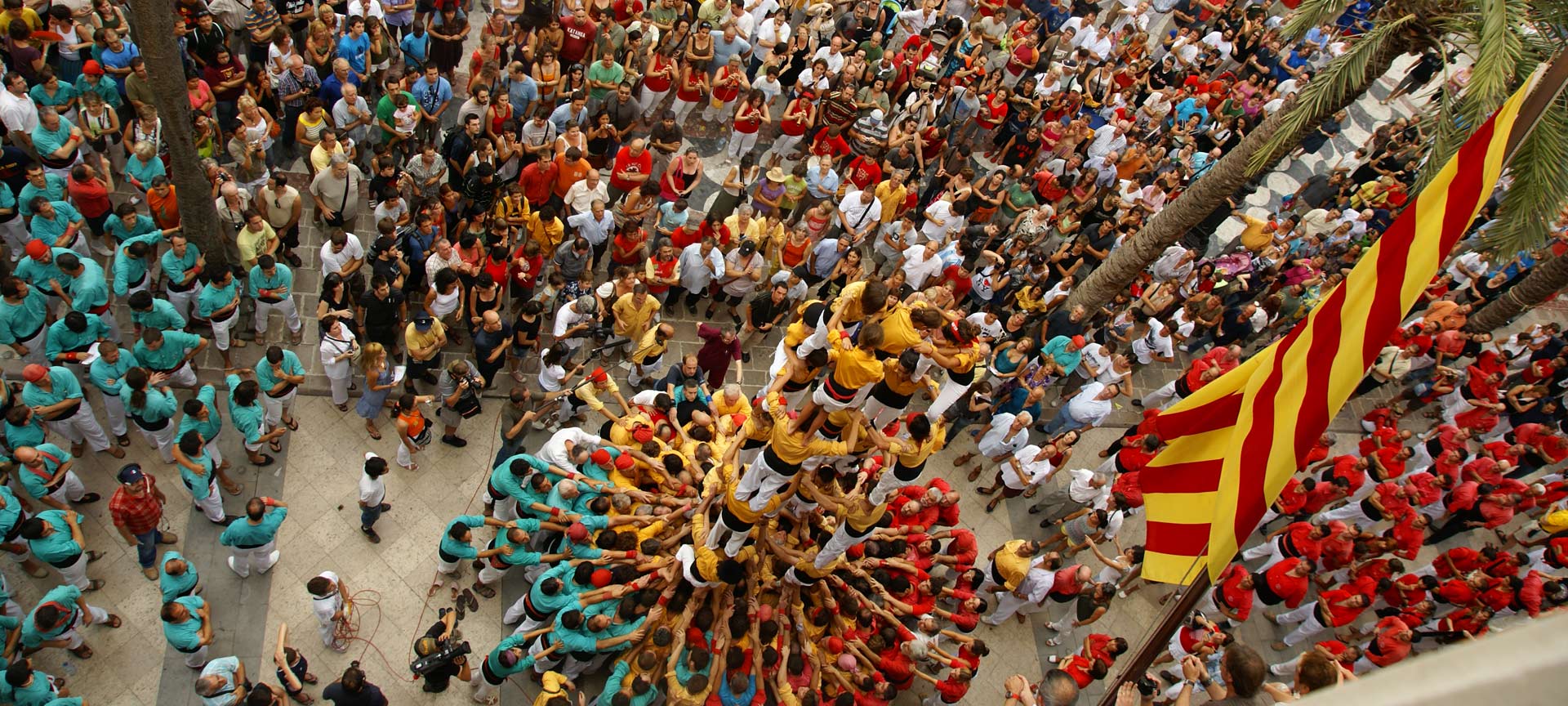
A journey through the festivals and traditions designated as Intangible Cultural Heritage by UNESCO

Human towers or “Castells”
In Catalonia, all year. Literally towers formed by people, which can reach as high as 10 tiers. The tradition of creating these towers or castells , as they are known in Catalan, is at least 200 years old, and they usually form part of village fiestas in the region. People of all ages take part. The base is usually the strongest men, with women and older boys forming the intermediate levels, and smaller boys and girls climbing to the top of these ephemeral structures. They are always created in crowded festivals, with the public lending support, and accompanied by traditional music. More information
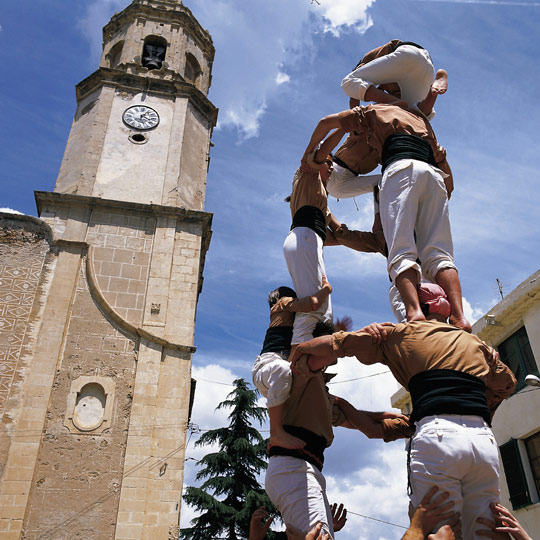
Las Fallas festival, Valencia
In the city of Valencia, around 19 March. Humour, satire and fire form the core of this fiesta, with most of the Valencians taking part, filling the whole city with fun and excitement for several days. The largest squares and streets display large groups of satirical papier-mâché sculptures – the Fallas – as noisy parades and spectacular fireworks welcome the spring. Everything culminates on the night of 19 March, the cremá , when all the Fallas are burnt except for the ninot, the best sculpture of the year, which will take its place in the Museum of the Fallas in Valencia . More information

Las tamboradas
In many traditional fiestas, especially at Easter . Thousands of drums beat in unison for hours and hours, day and night. At first deafening, the sound soon becomes fascinating and the trancelike state of the drummers seems to spread to those around. This tradition forms part of many popular fiestas, often relating to Easter and its rituals. This is the case for the tamboradas of Hellín (Albacete, Castile-La Mancha), Calanda (Teruel, Aragon) and Mula (region of Murcia). The drum festival of Donostia-San Sebastián is also famous, held on 20 January to celebrate the city’s patron saint.
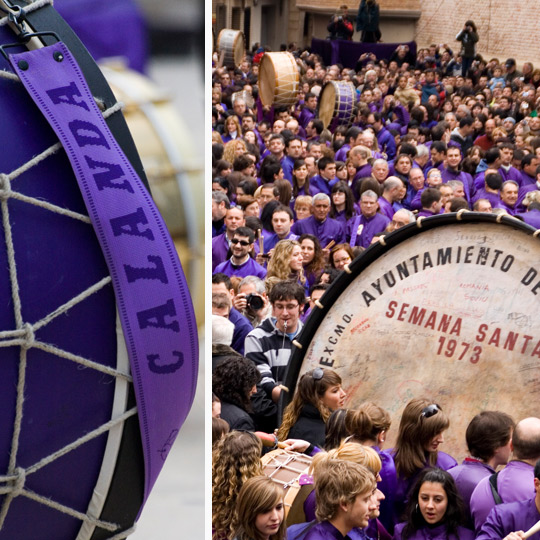
Festival of the Courtyards in Cordoba
In Cordoba (Andalusia) in May . Courtyards and squares are decorated with thousands of flowers, the scent of orange blossom and jasmine fills the air, and the streets echo to the sounds of flamenco. This is Cordoba’s Festival of the Courtyards , celebrating the traditional courtyard or patio, a space for family and social life. The residents decorate their courtyards with flowers and take part in a competition to find the prettiest one. Entertainment is held in the largest courtyards, mainly flamenco music and dance, filling the whole city with a festive air and welcoming the spring, at the start of a month of fiestas. More information
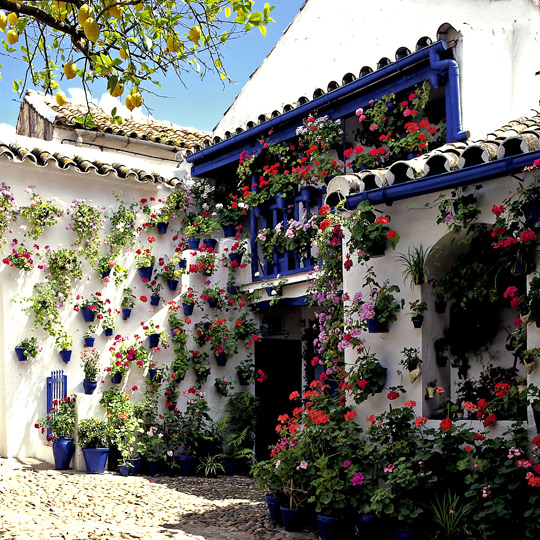
La Patum festival in Berga
In Berga (Barcelona), in May-June . Associated with the traditional feast day of Corpus Christi, this festival combines the sacred and profane in its origins, with parades and theatrical shows in the streets. The big event takes place in the main square, which is transformed into a fiery hell full of demons, angels, dragons, giants and dwarfs, dancing among the flames to the beat of the drums. The fiesta is especially lively after dark, and there is also a child-friendly version on one of the mornings. It has been held, almost continuously, since the 15th century. More information
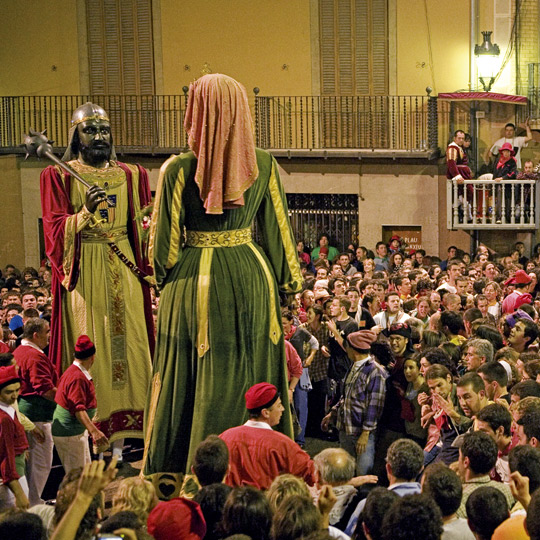
Summer solstice fire festivals in the Pyrenees
In villages of Aragon and Catalonia from June to July. Welcoming summer to the Pyrenees, this fiesta is celebrated in many villages in the Sobrarbe and Ribagorza areas of Huesca, Aragon , and the Alta Ribagorza, Berguedá, Pallars Jussà and Val d’Aran areas of Lleida, Catalonia . It is a cultural event which has survived over the years, typically involving a festive banquet and folk songs and dances, with practically all of the population joining in. Everything centres on fire, and the most common tradition is for the participants to descend from the highest point of the village with lit torches while they dance and make shapes with the fire. Finally, they light a large bonfire in the centre of the village to welcome the summer, and the merry-making continues. More information
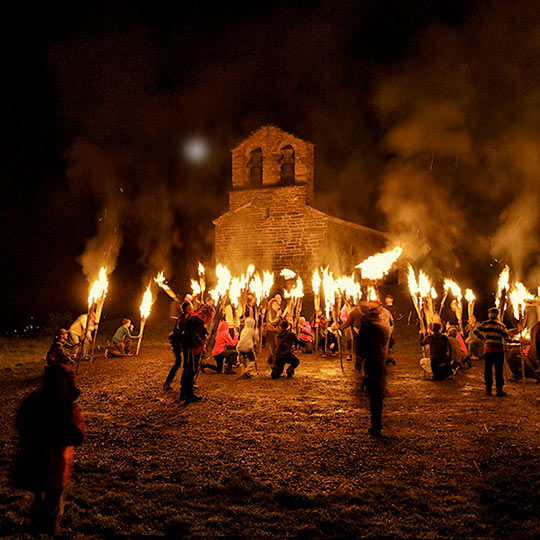
La Mare de Déu de la Salut Festival
Algemesí (Valencia), 7 - 8 September. For the main fiesta of Algemesí, a small town in Valencia province, the streets are filled with theatre, dance and concerts. UNESCO’s recognition emphasises the high level of participation by the locals, who take part enthusiastically in the fiesta, which dates back to Medieval times. The parades attract thousands of people to the four historic districts of Algemesí: Valencia, La Muntanya, Santa Bárbara and La Capella. More information
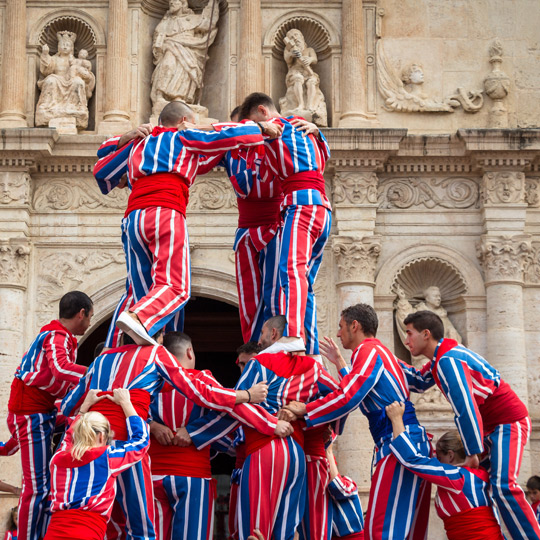
Misterio de Elche
In Elche (Alicante), every year from 11 to 15 August, plus on even-numbered years, from late October to 1 November. A unique opportunity to see one of the earliest forms of musical theatre, with a religious play depicting the death, assumption and coronation of the Virgin, which has been held continuously since the 15th century. It is staged in the Basilica of Santa María, with the performers singing the texts, in Valencian and Latin. The work is divided into two acts, each one representing a day. On the days leading up to the performance, there are rehearsals which are also open to the public. In all cases, you will have to buy tickets, and we recommend getting them well in advance. More information
Song of the Sibyl
All the churches in Mallorca celebrate this festival the night of 24 December. An example of medieval religious folklore which has come down to us practically unchanged, and takes place in almost every municipality on the island of Mallorca . The chant is sung by a boy or girl accompanied by the playing of an organ. At least two younger children take part in the ceremony, as well as people of different ages, ensuring the tradition is passed on through the generations. More information
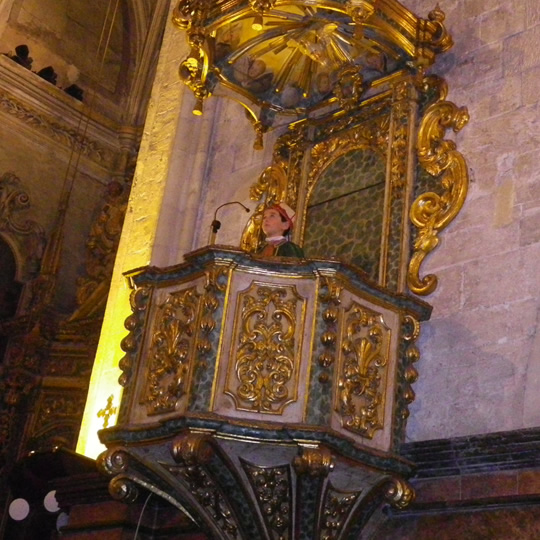
Los Caballos del Vino
In Caravaca de la Cruz (Murcia), 1-3 May. Thousands of visitors come to Caravaca every year to celebrate the Festivals of the Santísima and Vera Cruz, which include two unique shows in the world: the Festival of Moors and Christians and the Wine Horses . This last event has been declared Intangible Cultural Heritage. On 2 May, Caravaca lives its most intense day with the mythical Wine Horses race, a competition in which more than 60 associations evoke a legend according to which a group of Christian knights managed to break an enemy siege. This festival stands out not only for the sound of galloping horses, but also for the delicate embroidered cloaks they wear, the music and the thousands of people dressed in white and red that transform the city. More information.
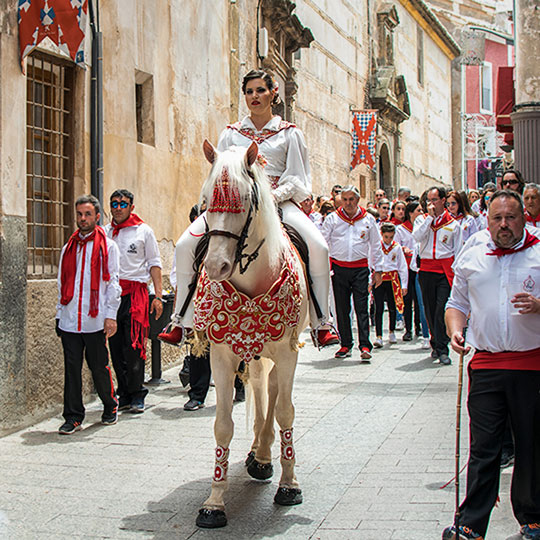
Other popular traditions and customs which are now Intangible Cultural Heritage
The most popular is perhaps the Mediterranean diet . This is a healthy diet based on olive oil, vegetables and fresh seasonal food, but just as importantly, meals in the Mediterranean culture are a time for family and friends to gather. Much less famous, but very peculiar, is silbo Gomero . This is a language in the form of whistling, used in La Gomera (one of the Canary Islands) to communicate over a distance, and currently used by over 20,000 people. falconry , in which birds of prey are tamed and trained for hunting; the art of dry stone walling (constructing walls without mortar), the irrigation tribunals of the Spanish Mediterranean (more specifically, the assemblies held in towns in Murcia and Valencia), the artisan production of Talaverano-style ceramics in Talavera de la Reina and the El Puente del Arzobispo, the ringing of bells by hand , timber rafting , the glass blowing technique and transhumance complete the list of Spain’s UNESCO Intangible Cultural Heritage.
Travel plans for inspiring you

Easter Week in Spain: destinations to live it intensely
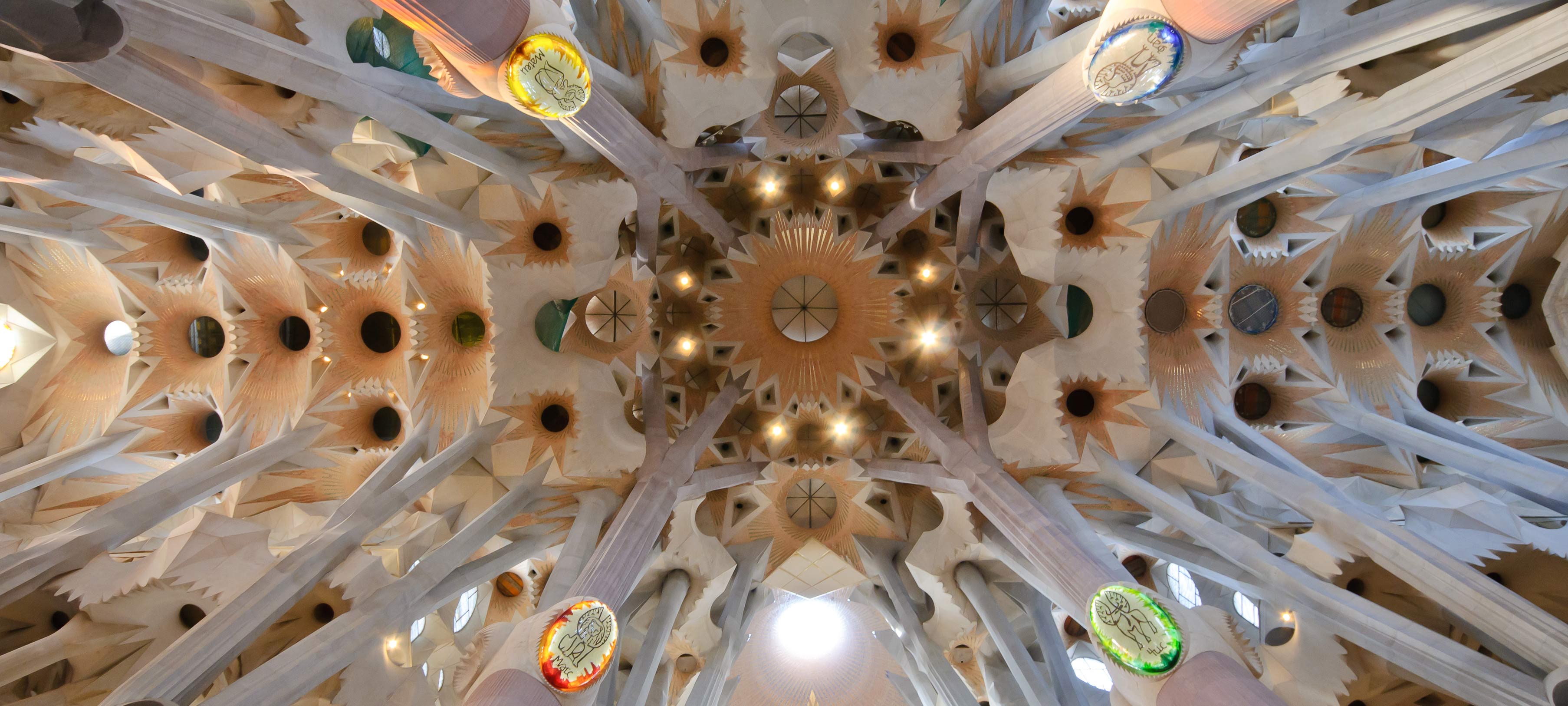
How much do you know about Spanish monuments? #SpainQuiz
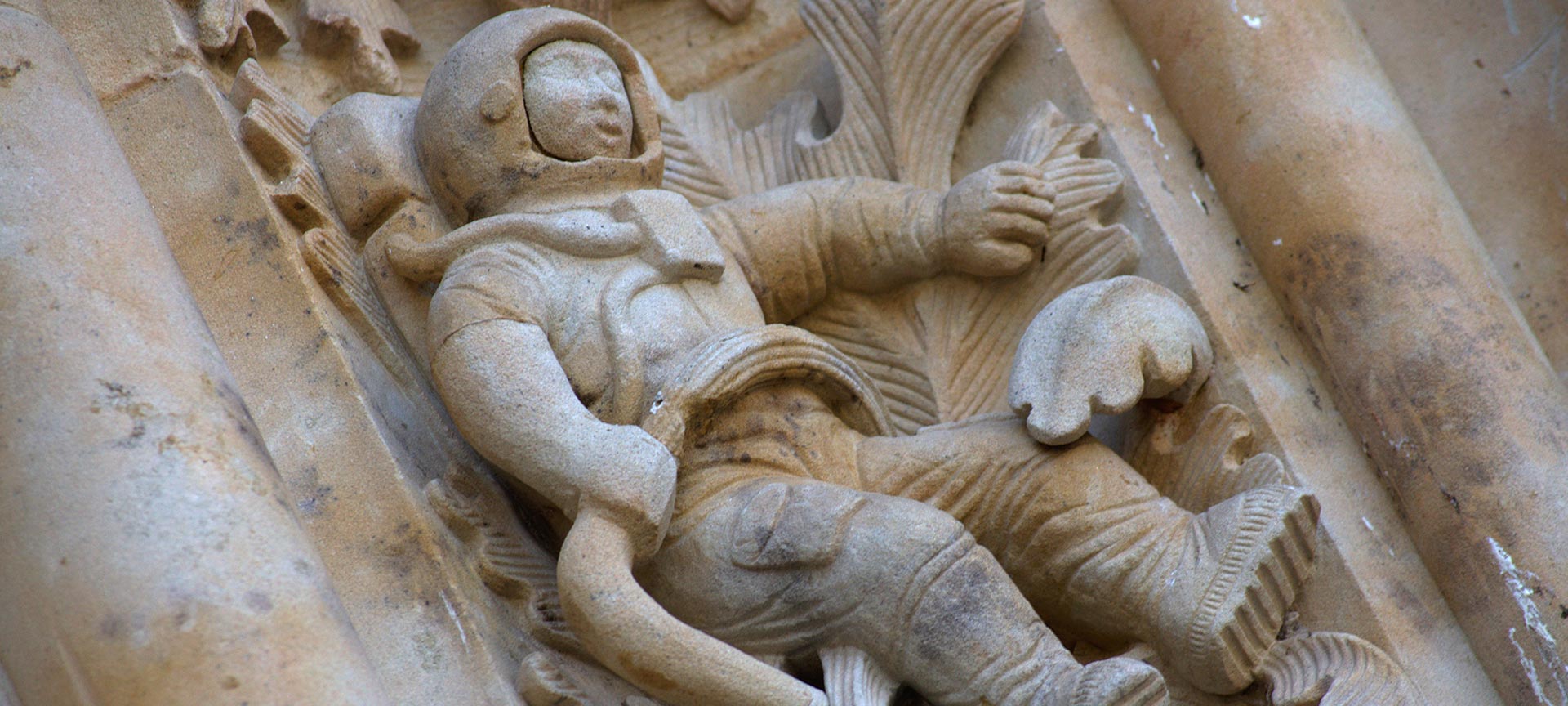
Mythology, legends and fun facts about monuments in Spain. Do you want to play? #SpainQuiz

Choose between thousands of activities to live your best life on holiday.
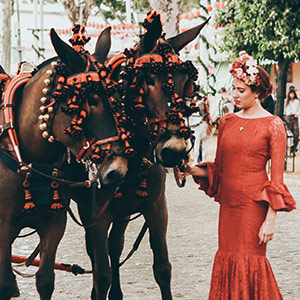

37 Must-Have Experiences in Spain (2024)
By: Author Milijana
Posted on Published: January 18, 2022 - Last updated: January 2, 2024
Categories SPAIN
Sharing is caring!
Traveling to Spain? Interested in the best things to do in Spain and the most memorable experiences in Spain? If so, here are the most unique Spain experiences for your ultimate Spain bucket list
THE MOST MEMORABLE EXPERIENCES IN SPAIN: 37 BEST THINGS TO DO IN SPAIN
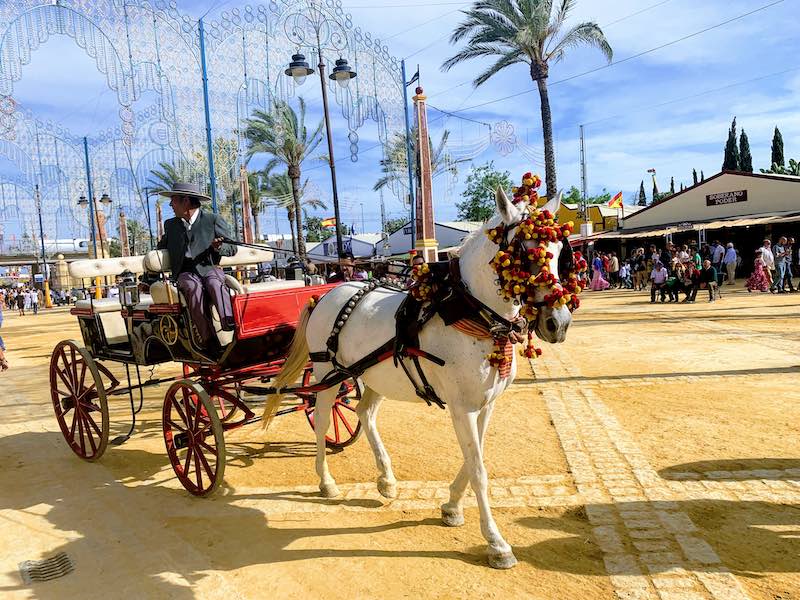
THIS POST MAY CONTAIN COMPENSATED LINKS. PLEASE READ MY DISCLAIMER FOR MORE INFO.
Best experiences in Spain
1. VISIT ALHAMBRA PALACE IN GRANADA
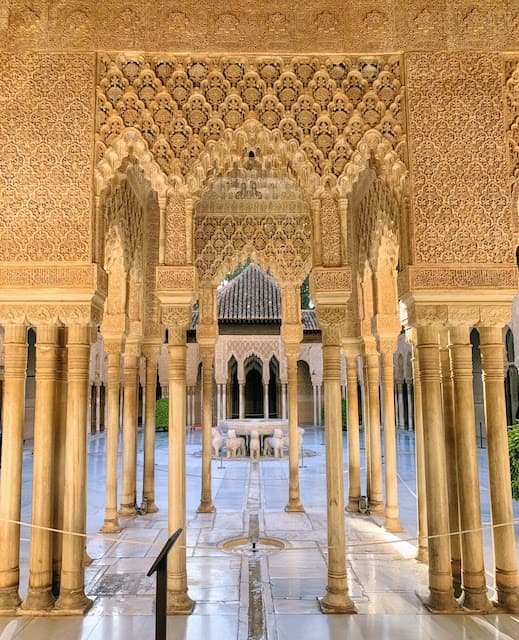
Alhambra is one of the most famous landmarks in Spain and one of the most famous tourist attractions in the world.
Alhambra Palace in Granada is the most visited site in Spain. More than 2 million people visit Alhambra a year.
Alhambra is a masterpiece of Moorish architecture, even though Romans founded the Alhambra and Catholic Monarchs Ferdinand and Isabella have done some Renessaince makeovers.
Alhambra in Granada is a UNESCO World Heritage Site of Spain and a top must-see site in Spain. Visiting Alhambra is one of the most memorable experiences in Spain to go for.
Keep in mind, that the number of people who can visit Alhambra Palace in a day is limited. So, buying tickets for Alhambra in advance is highly recommended.
Check out the Alhambra Tour with Nasrid Palaces , and read my first-hand tips for visiting Alhambra .
2. TOUR SAGRADA FAMILIA
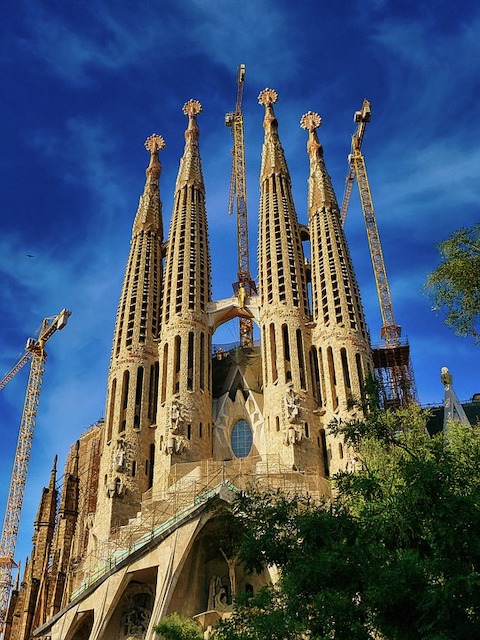
Sagrada Familia Basílica, or Basilica of Holy Family, in Barcelona, is a masterpiece of Antonio Gaudi, one of the greatest architects in the world.
The cathedral is built in a unique mix of various styles: Spanish Gothic, Gothic Revival, Noucentisme, Art Nouveau, and Modernism style.
It’s a UNESCO World Heritage Site in Spain and one of the most visited buildings in the world overall.
I’d strongly advise booking Sagrada Familia tickets online to avoid the queues.
Check out: Sagrada Familia Fast-Track Access Ticket
3. TAKE A ROAD TRIP IN ANDALUCIA
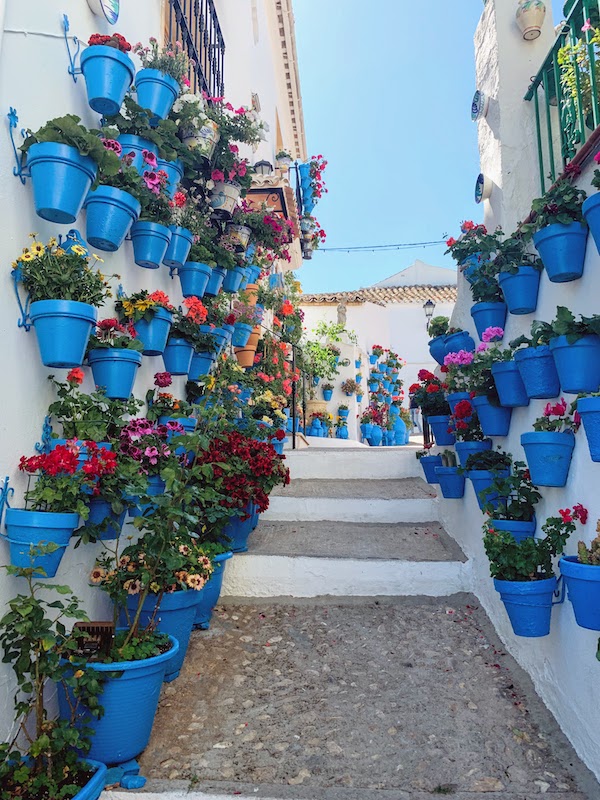
A road trip in Andalucia is a must in a lifetime.
Andalucia is one of the most beautiful and interesting destinations in the world for its history, architecture, art, sandy beaches, joyful fiestas, passionate flamenco, shocking bullfighting, and tasty tapas .
Take a road trip in Andalucia and visit the most spectacular cities like Seville , Granada, Cordoba , Cadiz, Jerez de la Frontera (the heart of Andalusia), authentic Andalusian ‘pueblos blancos’ (Iznajar, Arcos de la Frontera, Ubrique), famous Ronda and Malaga (the capital of Costa del Sol).
Road-tripping in Andalusia is one of the best Spain experiences to treat yourself to in Spain.
Read here about my recommended Andalusia road trip .
4. VISIT MEZQUITA OF CORDOBA
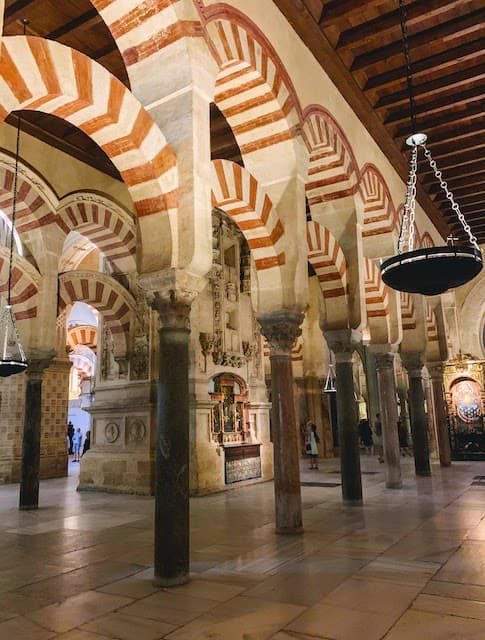
The Mosque-Cathedral of Córdoba is one of the most unique buildings in the world.
In the 8th century, Cordoba was the capital of Moorish Al Andalus when the Great Mosque of Cordoba was built on the site where the Visigothic Christian church of Saint Vincent had stood. In the 13th century after the Christian conquest of Al Andalus and recapture of the area, the Great Mosque was turned into a Christian Cathedral.
The Mezquita covers 24,000 square meters and it displays 856 columns made of fine materials like granite, marble, and jasper. It holds elements of Egyptian, Greek-Roman, Visigothic, Moorish, Spanish-Flamish, Renaissance, and Baroque styles.
Mezquita in Cordoba is one of the most impressive sites in Spain. It’s a World Heritage Site.
Visiting the Mezquita is one of the best things to do in Cordoba and one of the most special experiences in Spain.
Check out: Skip-the-Ticket-Line Mosque-Cathedral Guided Tour
5. HIKE CAMINO DE SANTIAGO
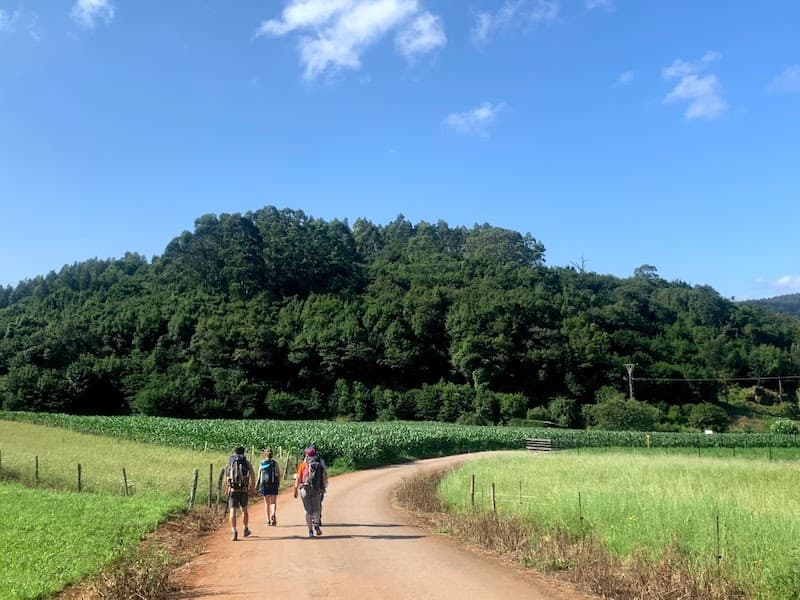
Camino de Santiago is one of the most popular hiking pilgrimage routes in the world.
The Camino de Santiago (Way of St James) covers several routes leading to the tomb of St James the Apostle in the Cathedral of Santiago in Spain.
The most popular route is Camino Frances (the French Way) from St Jean Pied de Port to Santiago. The route is about 500 mi (800 km) long.
But the most beautiful routes are Camino del Norte (following the coast of northern Spain) and Camino Primitivo (the Original Way that starts in Oviedo and goes through the hills). Camino Inglese (the English Way) is the shortest route (only 118 km) which starts in Ferrol and the longest route (about 1000 km) is Via de La Plata which starts in Seville. Camino Portuguese (The Portuguese Way) starts in Lisbon and is also one of the most well-liked routes of Camino de Santiago.
Hiking Camino de Santiago is one of the most memorable experiences in Spain. I hiked 828 km of Camino del Norte in the summer of 2021. In June 2022 I hiked 310 mi (500 km)-long Camino de la Plata from Salamanca to Santiago. From Santiago, I continued to ‘the End of the World’ and hiked 55 mi (90 km) of the Camino de Santiago a Finisterre .
Read about the things I carried during my Camino hike and find out my Camino de Santiago packing list .
6. SEE THE FESTIVAL OF COURTYARDS IN CORDOBA
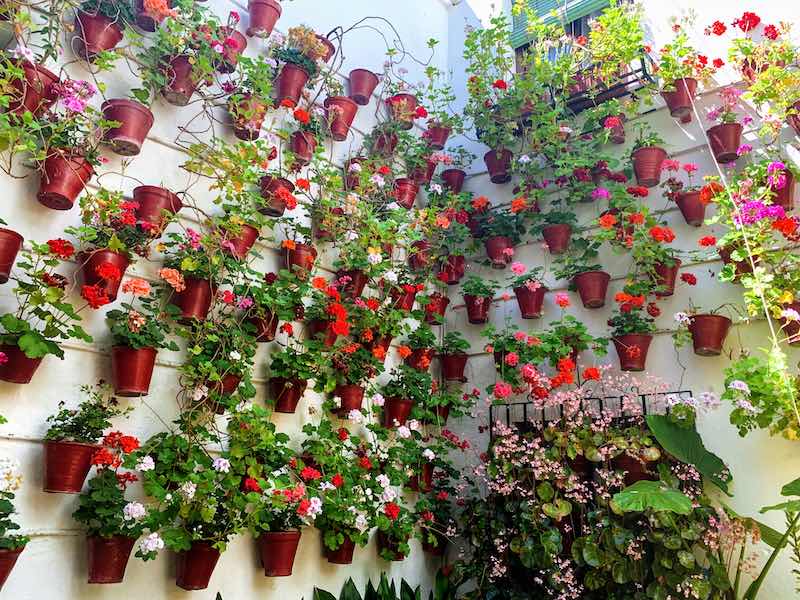
Fiesta del Patios is one of the most unique events in Spain, and probably the most beautiful event in Spain.
The colorful Festival of Courtyards is held in the historic center of Cordoba in Andalusia at the beginning of May every year.
During the event which lasts for 12 days, the courtyards (called patios) are decorated with an abundance of flowers. Typically, Cordoba patios are hidden private treasures. But, the house owners open their courtyards to the public during the festival. The flowerful patios become stages for outstanding performances of traditional songs and dances, along with flamenco guitar plays.
UNESCO declared the Fiesta of the Patios in Cordoba Intangible Cultural Heritage of Humanity.
Visiting the Fiesta del Patios in Cordoba is one of the most beautiful experiences in Spain to look forward to.
The next Festival of the Courtyards in Cordoba will be held from May 2-12 2024.
7. WALK CAMINITO DEL REY
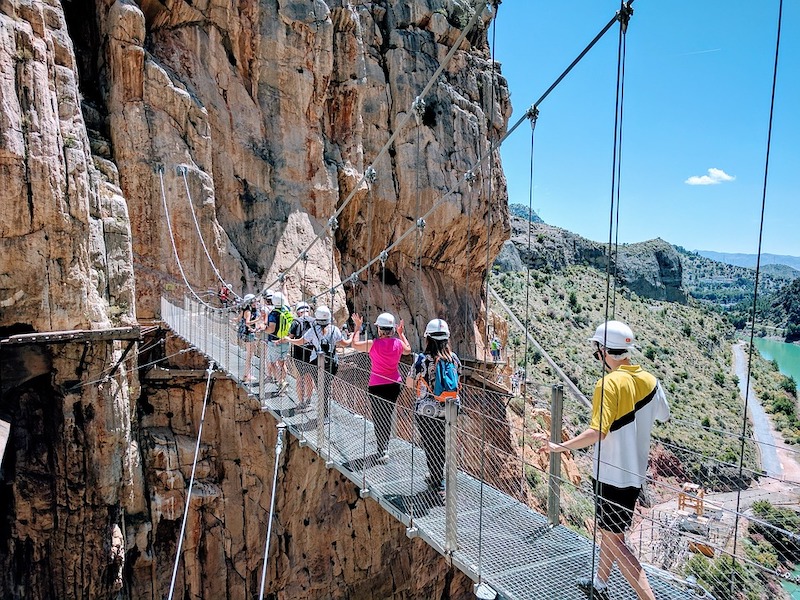
El Caminito del Rey (the Little Pathway of the King) is a spectacular path over the magnificent canyon of the Guadalorce River.
The amazing canyon displays cliffs 700 m high, while the Caminito del Rey path hangs 100 m above the river.
Walking Caminito del Rey is one of the most unique experiences in Spain.
Caminito del Rey is easily visited from Malaga and Costa del Sol.
From Costa del Sol or Malaga: Caminito del Rey with Tapas
8. ATTEND FERIA DE JEREZ
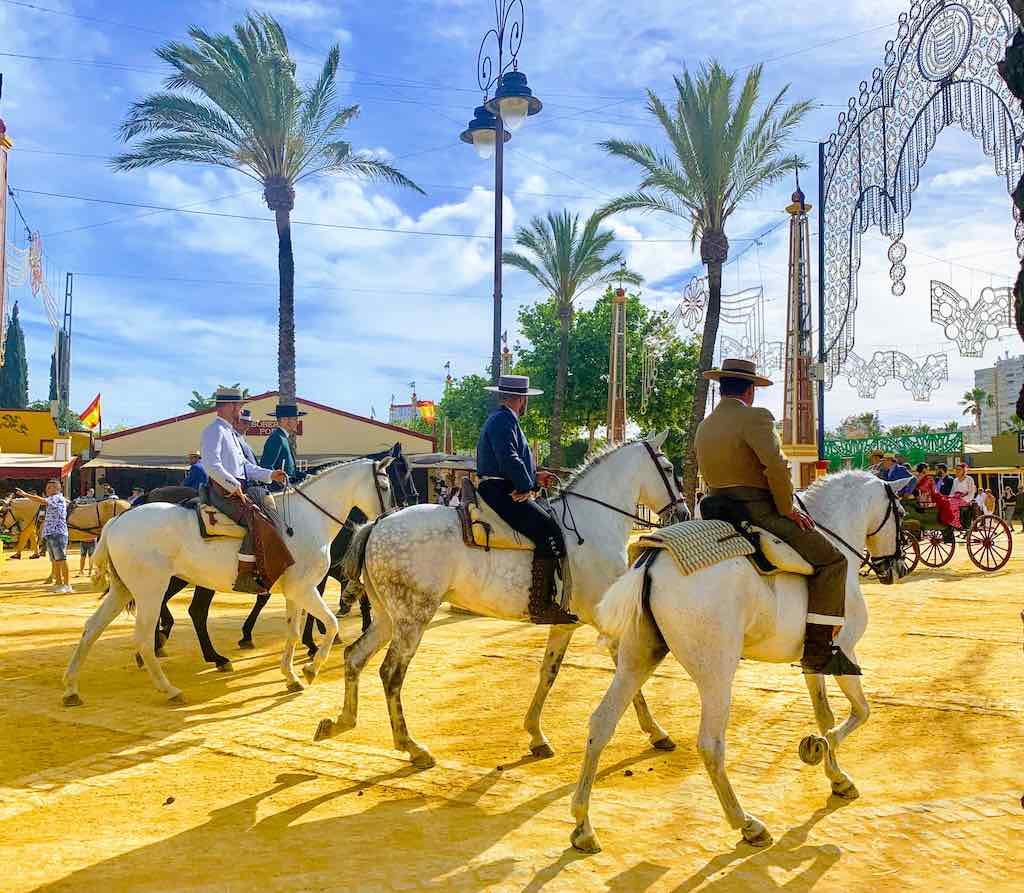
Feria de Jerez is one of the most joyful events in Spain.
It is originally called Feria de Caballo (the Horse Fair), but since it’s held in Jerez de la Frontera, it’s popularly called Feria de Jerez (the Fair of Jerez).
Feria de Jerez has often been voted the best feria in Andalusia.
The event traces back to the medieval ages when Andalusian farmers gathered in Jerez to sell their beautiful Andalusian horses. During the fair, a small village with public restaurants and bars ( casetas ) was made where people celebrated the deals with flamenco songs and dance, and plenty of food and drinks (most notably, sherry from Jerez) …
Since then, Feria de Jerez has been the celebration of Andalusian horses, flamenco, and Sherry wine.
Attending Feria de Jerez is one of the most authentic experiences in Spain to go for.
It is traditionally held in the González Hontoria Park in Jerez. The next Horse Fair will be held in Jerez de la Frontera from May 4-11, 2024.
9. WITNESS HOLY WEEK IN SPAIN
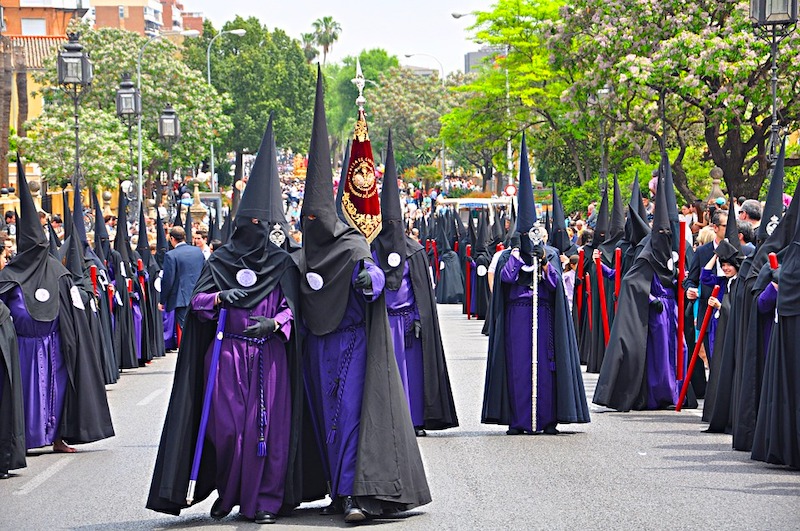
Witnessing Spanish Holy Week processions is one of the best things to do in Spain.
Holy Week, or Semana Santa, is celebrated the week before Easter.
Sorrowful and dignified processions of brotherhoods or fraternities are held in cities of Spain to honor the Passion of Jesus Christ. During the processions, barefooted ‘ nazarenos ‘ dressed in robes with distinctive hoods carry floats with scenes portraying the Passion of Jesus Christ, or the Sorrows of the Virgin Mary.
This unique tradition of Semana Santa traces back to the Middle Ages.
Semana Santa processions are held throughout Spain, but the most famous processions are in Granada, Seville, Cordoba, Malaga, Toledo, Salamanca, and Zamora.
The next Semana Santa is from March 24-31, 2024.
Make sure to celebrate the upcoming Holy Week and Easter in Spain for lifelong memories!
Head to Seville and book 3-Hour Holy Week History and Church Tour in Seville .
10. VISIT PARK GUELL, CASA MILA AND CASA BATILO
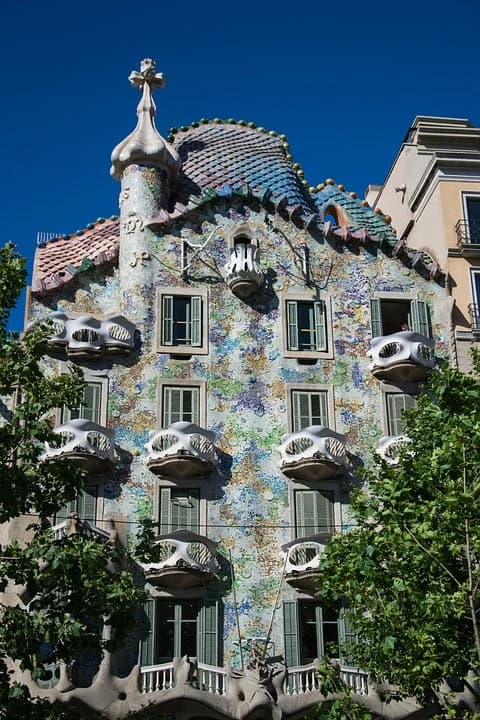
Park Guell, Casa Mila, and Casa Batllo, along with above mentioned Sagrada Familia Basilica, are the most famous works of Antonio Gaudi, the most famous Catalan architect in history.
UNESCO declared them a World Heritage Site.
Antonio Gaudi was inspired by nature and used natural shapes in his works a lot. Some of the finest examples of his work are Park Guell, Casa Mila, and Casa Batllo.
Park Guell is an iconic park in Barcelona and the most visited park in the world. It covers 12 ha of surreal architecture (fantastic buildings, sculptures, and tile work), serene nature, and outstanding views of Barcelona.
The unconventional Casa Mila is a spectacular and one-of-a-kind residential building in the world.
Casa Batllo is another sensational building by Antonio Gaudi. The façade of Casa Batlló is made of colorful ceramic tiles but the building shockingly appears to be built from skulls and bones. That’s why it is popularly called the House of Bones. But the interior of the house is as much surprising as the exterior.
Casa Mila and Casa Batllo are some of the most intersting buildings in the world.
Check out: Park Güell Admission Ticket ,
Casa Batlló Entry with Self-Audioguide Tour ,
Casa Milà-La Pedrera Fast-Track Audio Tour ,
Gaudi Tour: Sagrada Família, Park Güell, and Casa Batlló
11. ATTEND LA TOMATINA
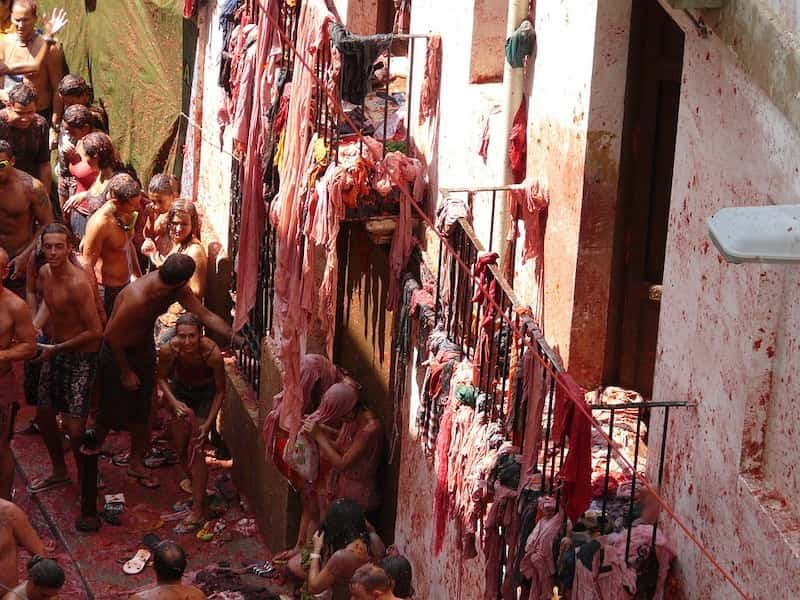
La Tomatina is an iconic festival of the fight with tomatoes.
During the festival, participants fight with tomatoes in the streets of the small town of Bunol.
The town of Bunol is 40 km away from Valencia.
About 22.000 participants on average attend the festival, and about 120 tons of red tomatoes are thrown during the festival.
The festival traditionally happens on the last Wednesday of August every year. It begins with a bang at noon when trucks loaded with tomatoes as ammunition pass through the fight area and when the first tomatoes are thrown from the trucks at the festival-goers. With the first thrown tomatoes, the tomato fight among the festival participants starts.
Attending the Tomatina festival in Bunol is one of the most fun things to do in Spain.
Next Tomatina is happening on August 24, 2024.
Make sure to be in Bunol on August 24 for the craziest event in Spain.
12. WATCH AN AUTHENTIC FLAMENCO SHOW
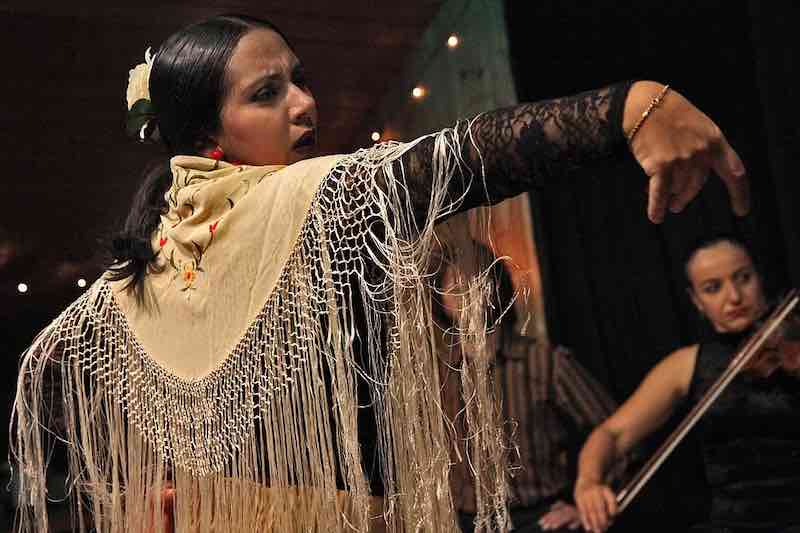
Spanish flamenco is a unique artistic expression originating from Andalusia.
It’s a musical fusion of song (cante), musicianship (toque – the art of guitar playing), and dance (baile).
UNESCO inscribed flamenco on the list of Cultural and Intangible Heritage of Humanity.
Flamenco was born Jerez de la Frontera in Andalucia. The most authentic flamenco you can see there, but if you are visiting some other places in Spain, don’t miss out to see a flamenco show.
Watching traditional flamenco is one of the most authentic experiences in Spain.
Madrid: Live Flamenco Show with Food and Drinks Options Barcelona: Flamenco Show at Tablao Flamenco Cordobes
Seville: Flamenco Show with Optional Andalusian Dinner
Granada: Flamenco Show at Cuevas Los Tarantos Tickets in Sacromonte
Valencia: Flamenco Show with Dinner at La Bulería
13. VISIT ALCAZAR DE SEVILLE
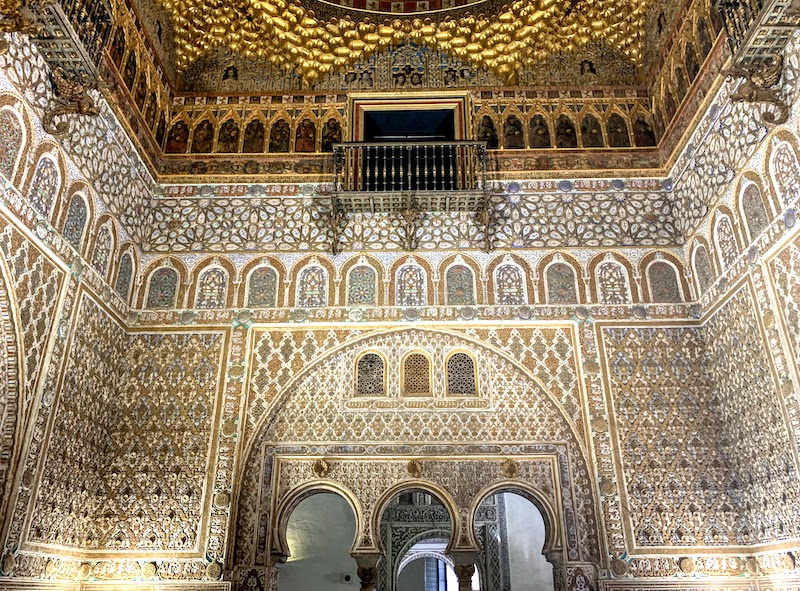
The Real Alcázar Palace in the heart of Seville is the oldest royal place still in use in the world. Spanish royal family still uses some parts of the palace when in Seville.
The palace is a top example of the Mudejar style with some elements of Romanesque, Gothic, and Renaissance styles. Arguably the most outstanding part of the Alcazar is the Palace of Peter I made in the Mujadar style in the 14th century. But some of the most beautiful parts of the Alcazar complex are 12 distinctive gardens designed in different styles from Moorish to Renaissance and modern styles.
The complex of the Real Alcazar, the Cathedral, and the General Archives of Indies is a World Heritage Site.
Visiting royal Alcazar is one of the best things to do in Seville and one of the top experiences in Spain.
Book: Alcázar Guided Tour with Priority Entrance
14. RUN IN FRONT OF BULLS AT SAN FERMIN FESTIVAL
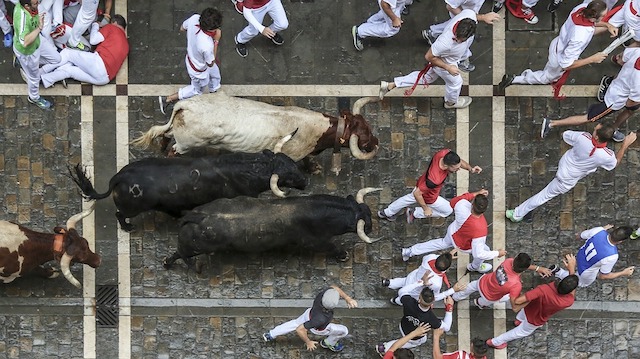
San Fermin is one of the most unique events in Spain.
Festival-goers run in front of a small group of bulls in the streets of Pamplona during the 9-day festival of Sanfermines.
Today it’s one of the most popular events in Spain that frequently attracts thousands of tourists each year.
The bull-running festival is held in Pamplona from the 6th to the 14th of July.
Attending the Sanfermines Festival is one of the most unique things to do in Spain.
Running in front of bulls during the San Fermin Festival in Pamplona is one of the most unique experiences in Spain.
15. ENJOY MALAGA, THE CAPITAL OF COSTA DEL SOL
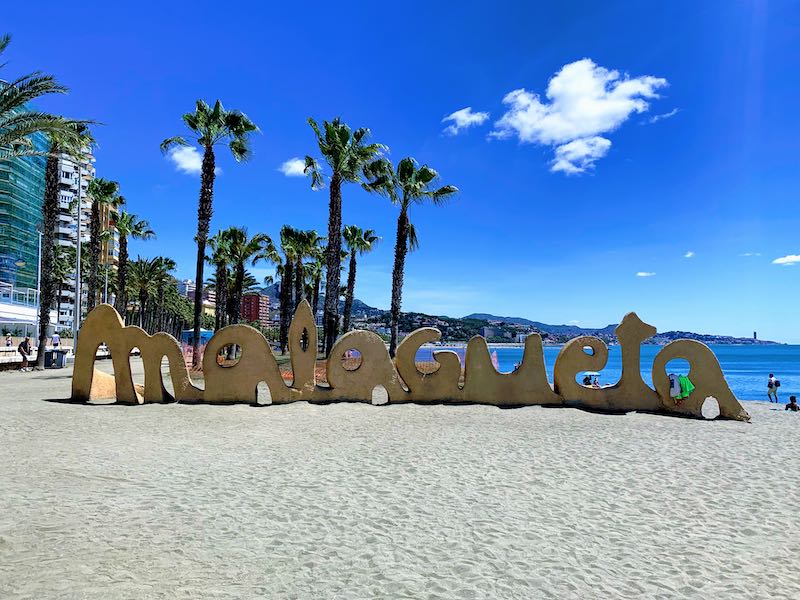
Costa del Sol is one of the sunniest places in Europe with the most amazing sandy beaches in Europe.
Costa del Sol is a synonym for sunshine, sandy beaches, and flavorsome Spanish food. And Malaga is the Capital of Costa del Sol.
Malaga is one of the best Spain vacation spots and one of the best cities in Spain for leisure and pleasure.
Enjoying the sandy beaches of sunny Malaga is one of the best things to do in Malaga and in Spain.
16. INDULGE IN SPANISH FOOD, TAPAS
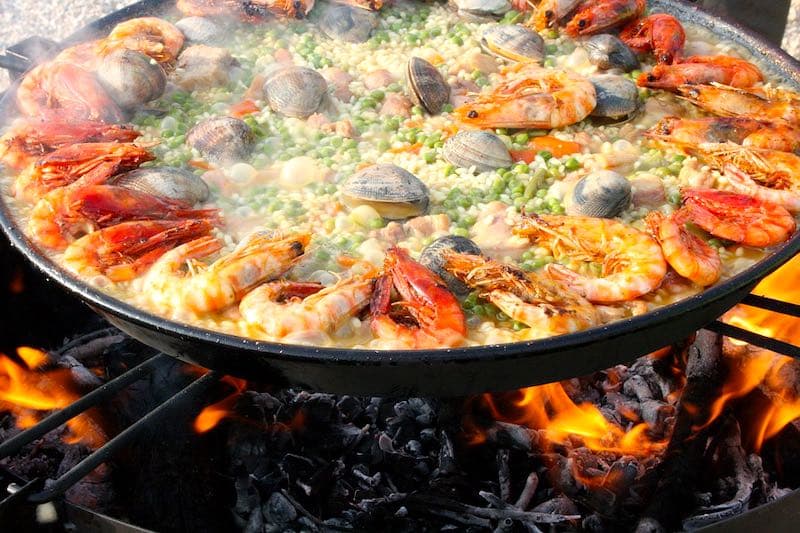
Spanish cuisine is one of the healthiest and tastiest cuisines in the world.
It is probably best known for various Spanish tapas (cold or hot Spanish appetizers or snacks). Some of the most famous Spanish foods are Jamon Iberico , paella, and gazpacho soup. Spanish tapas, gazpacho, and paella are among the must-try authentic Mediterranean food in a lifetime!
Foodies agree, that exploring traditional Spanish cuisine and sampling traditional Spanish dishes are some of the best things to do in Spain.
17. DISCOVER BASQUE PINTXOS
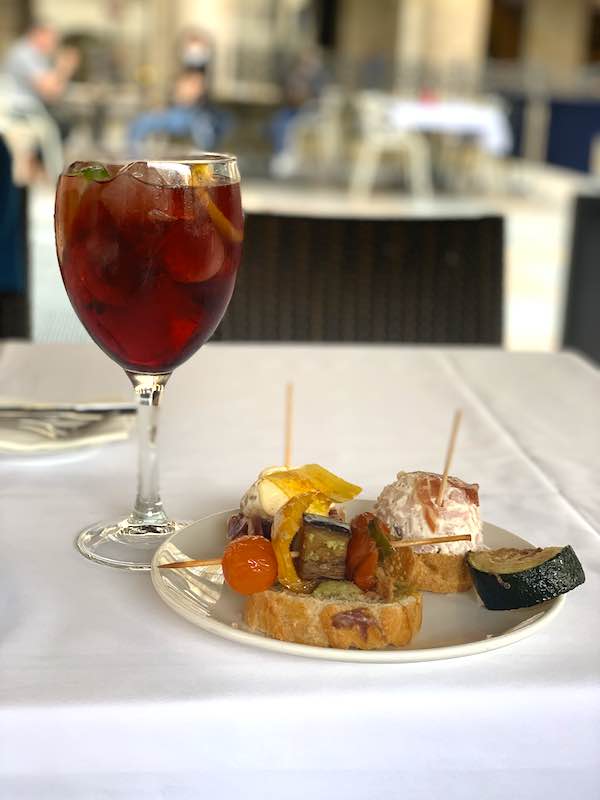
Pintxos are sensational Basque appetizers.
Pintxos are an essential part of Basque cuisine .
Pin txos in the Basque country is what tapas in the rest of Spain is. But, the Basque pintos are a pure art for all the senses.
Pinchos, or pintxos , are tasty snacks that will make you fall in love with the Basque country through the stomach.
Check out: San Sebastian: Gourmet Pintxo Tour , or From Bilbao: Basque Country Gastronomy Tour
18. EXPLORE SPANISH SEAFOOD DELICACIES
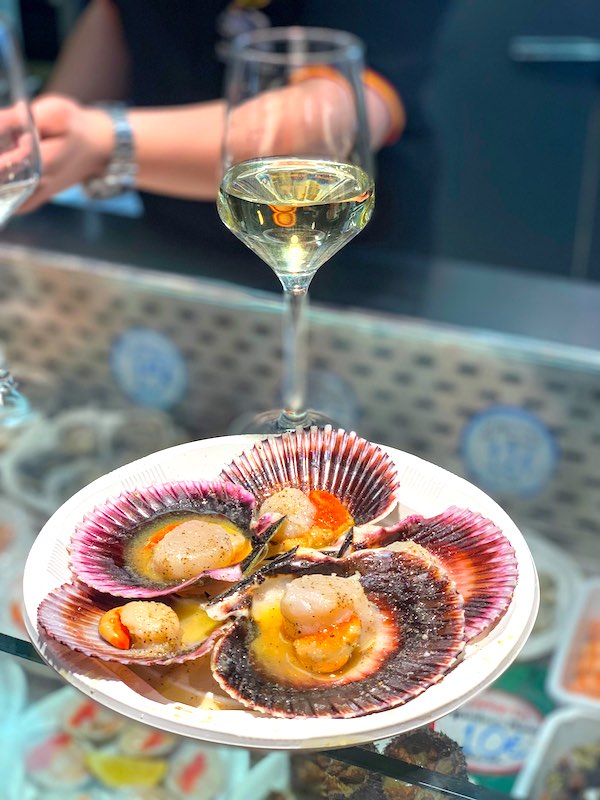
If you are after some mouthwatering seafood, Spain is a destination to go to.
The city of Vigo in Galicia is the largest European fresh fish port and the biggest fishing port in the World. Vigo is popularly called the seafood capital of Spain. The Vigo estuary is home to the best seafood in Spain: the finest fresh oysters, mussels, barnacles, crabs, shrimps, octopus, cuttlefish, sea bass, and more.
Some of the must-try Spanish seafood dishes are paella de marisco (seafood paella), pulpo alla Galega (the Galician-style octopus), bacalao al pil pil (the Basque-style codfish), and Mejillones Rellenos (the Spanish-style spicy stuffed mussels).
19. TOUR THE ROYAL PALACE OF MADRID
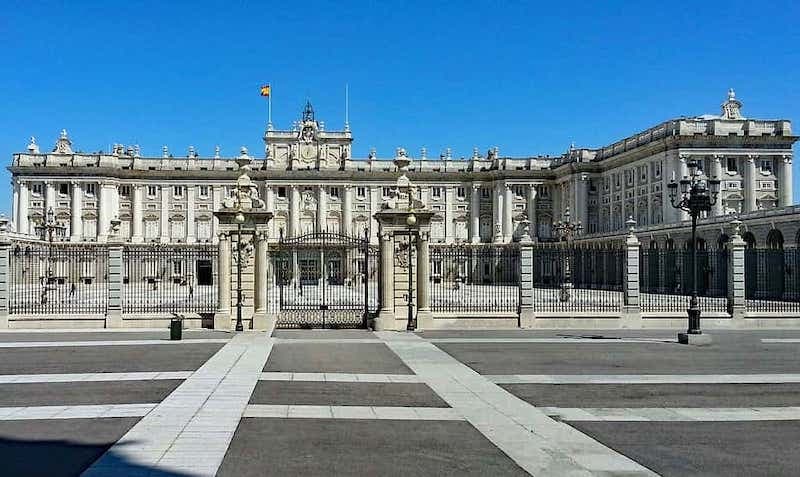
The Royal Palace in Madrid is the most important Baroque palace in Spain.
It’s also the largest royal place in Europe. The place is spread over 135,000 m2 (1,450,000 sq ft) and it has more than 3000 rooms.
The place is the official residence of the Spanish royal family but is no longer their home.
Some of the most remarkable rooms in the Royal Palace are The Royal Armoury and the Painting Gallery.
The Royal Armoury holds a huge collection of weapons and armors used by Spanish royals since the 13th century. It is regarded as one of the best in the world.
The Painting Gallery holds masterpieces like Caravaggio’s Salome with the Head of John the Baptist and many fantastic works by Goya, Velázquez, Sorolla, and Federico Madrazo.
The Royal Palace of Madrid is a cultural landmark of Madrid and one of the most visited sites in Spain. Every year over a million people visit the palace.
Visiting Madrid Place is one of the top things to do in Spain for cultural enthusiasts.
Check out: Royal Palace Skip-the-Line Guided Tour
20. TRY RIOJA WINE
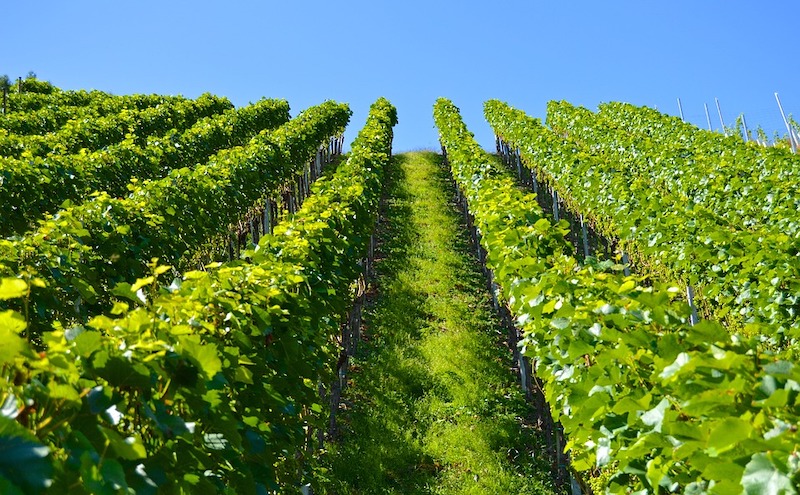
The Rioja wine is the most famous wine from Spain.
La Rioja is a famous wine region in north-central Spain and between the Basque Country, Navarre, and Castile-León. La Rioja region is only about an hour’s drive from Bilbao.
There are red (tinto), white (blanco), and pink (rosado) Rioja wines. Red Rioja wines are classified as some of the finest wines in the world.
Rioja wines are a blend of various grapes, like Tempranillo, Mazuelo, and Graciano for red Rioja wines and Malvasia and Macabeo for white Rioja wines.
Traditionally Rioja wines are aged in oak barrels in the cellars before bottling. Rioja wines pair well with aged cheese, chorizo, and roasted meat.
Check out: Winery Tour with Tastings and Traditional Lunch in La Rioja
21. HEAD TO SAN SEBASTIAN
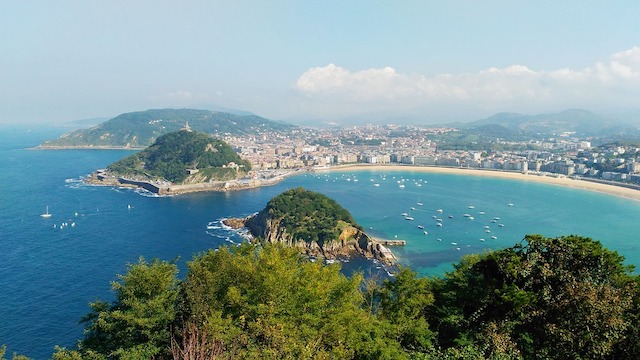
San Sebastian, or Donostia in the Basque language, is one of the most beautiful cities in the world.
Glamorous San Sebastian in the Biscay Bay is famed for the pristine white sand beaches, luxurious beachside mansions, and excellent Basque cuisine accompanied by innovative chefs.
It is a paradise for beach lovers, foodies, and architecture fans.
San Sebastian holds some of the best beaches in the world. San Sebastian’s La Concha beach is voted the most beautiful urban beach in Europe.
San Sebastian is one of the top culinary destinations in the world. It has the second-highest number of Michelin-starred restaurants per square meter in the world, following only Kyoto in Japan. The most famed Michelin-started restaurants in San Sebastian are Akelarre, Arzak, and Martín Berasategui.
Luxurious San Sebastian was a favorite holiday destination of Spanish and French aristocracy. Queen Maria Cristina set her royal summerhouse in San Sebastian during the Belle Époque era. Coco Chanel and Leon Trotsky enjoyed spending their holidays in San Sebastian too.
The nearest airports to San Sebastian are Biarritz Airport in France and Bilbao Airport in Spain .
Check out: 2-Hour Walking Tour with Pintxo and Drink in San Sebastian
22. SEE ALTAMIRA CAVES
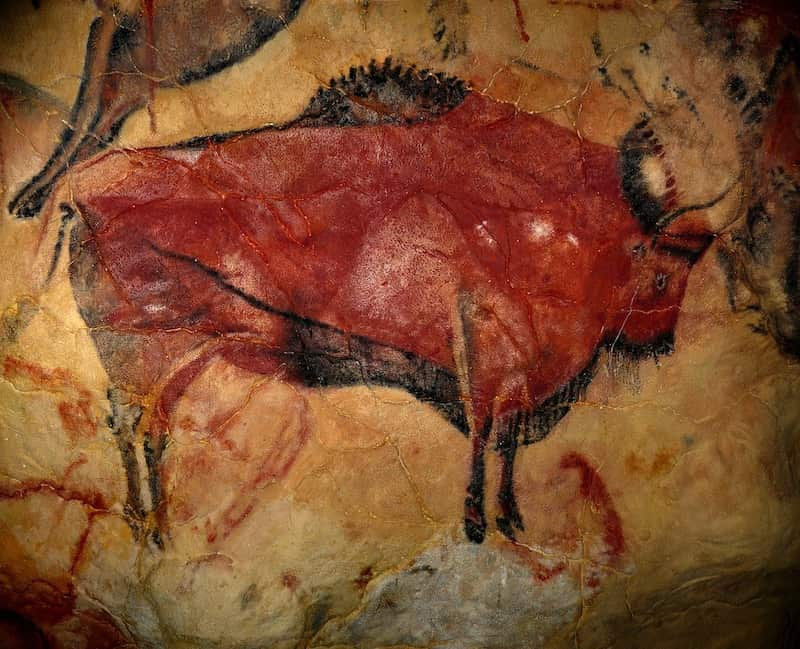
The 1,000 m (3,300 ft) long Cave of Altamira is famous for prehistoric charcoal drawings and polychrome paintings. The paintings are estimated to be 36.000 years old.
The cave holds the most significant Ice Age paintings in Europe.
UNESCO declared the Cave of Altamira and Paleolithic Cave Art of Northern Spain a World Heritage Site.
The cave is located near the beautiful town of Santillana del Mar in Cantabria in Northern Spain.
The original cave can’t be seen entered anymore for preservation reasons. However, the Museum of Altamira holds a replica od the cave.
Check out: Santillana del Mar & Altamira Museum Tour from Santander
23. WALK MEDIAEVAL WALLS OF AVILA
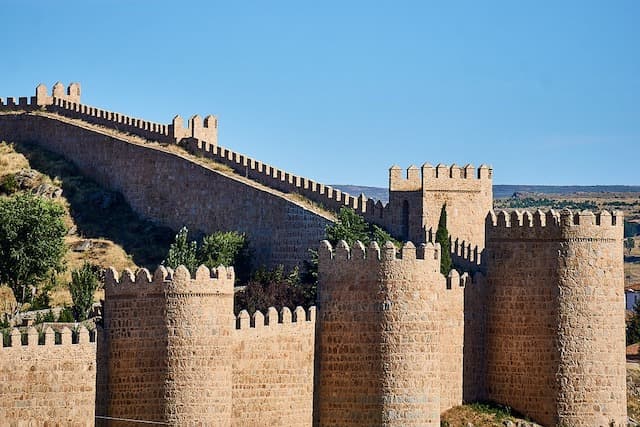
The Old City of Avila in Spain is a World Heritage Site.
The impressive 2.5 km long medieval walls of Avila are built for the protection of the medieval town between the 11th and the 14th century. The walls are 12 m tall and about 4 m wide, hold 80 towers, and 9 gates and encircle an area of 31 ha.
The walls of Avila are some of the best-preserved medieval walls in Europe. Walking Avila walls with superb views of Avilla is one of the coolest things to do in Spain.
Avila is called the ‘finest medieval remnant in Spain’, and it is nicknamed the Town of Stones and Saints.
Avila is about an hour and a half from Madrid and Salamanca.
Check out: Ávila with Walls & Segovia Full-Day Tour from Madrid
24. ENJOY SUNNY TENERIFE
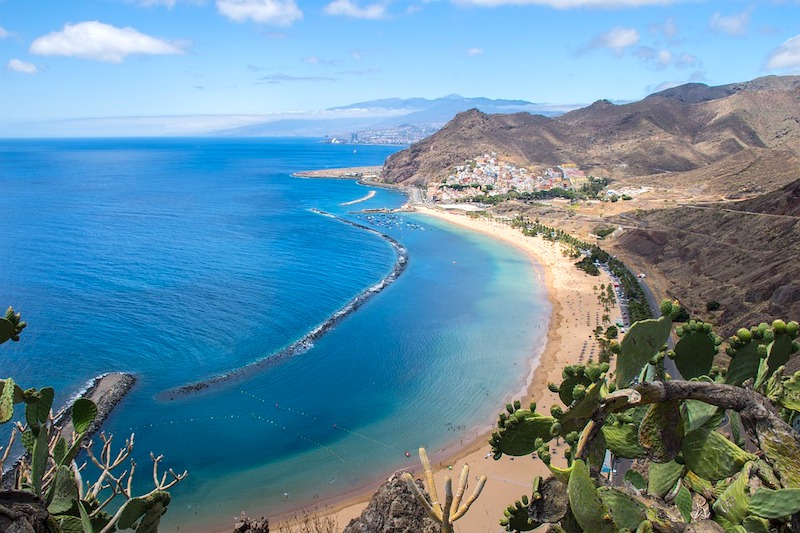
Famous Tenerife is a volcanic island in the Atlantic ocean. It’s the largest and the most popular island of the Canary Islands. Stunning Tenerife is a renowned holiday destination, best known for amazing beaches (sandy and volcanic), exotic nature, amazing resorts, and vibrant nightlife. Tenerife’s Teide National Park boasts impressive volcanoes, craters, lava flows of various shapes, and breathtaking colors. Mount Teide is an active volcano and with a height of 3178 m is the highest peak in Spain. Tenerife’s Teide National Park is a UNESCO World Heritage Site. It is the most visited European national park with over 4 million visitors a year. Beautiful Santa Cruz de Tenerife is the capital of Tenerife and the capital of the Canary Islands. The picture-perfect golden sand Playa de las Teresitas is one of the best beaches in Tenerife . Actually, Playa de las Teresitas is considered the most beautiful beach in Tenerife. Tenerife is a fantastic year-round destination for the abundance of sunshine all year long. If you crave some sun, you can’t get wrong with Tenerife.
25. VISIT GORGEOUS SALAMANCA
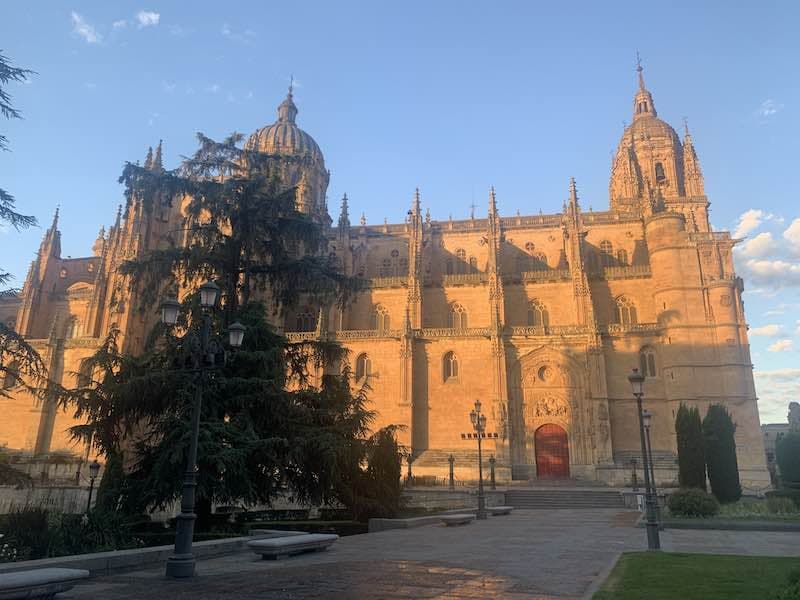
Gold-shimmering Salamanca is one of the most important historical and beautiful cities in Spain .
Salamanca is a vibrant city of rich historical and cultural heritage. It is a World Heritage City in Spain.
The City of Salamanca is nicknamed La Dorada (the Golden City) for its sandstone buildings that spectacularly shine in the sunlight.
Stunning Salamanca is a must-visit place in Spain for people who enjoy history, historical sites, and wonderful medieval architecture. READ MORE: The Ultimate Guide to Salamanca Spain
26. ADMIRE DALI THEATER MUSEUM IN FIGUERES
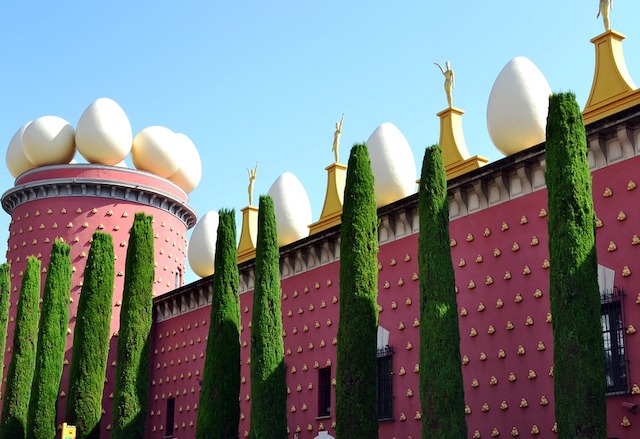
If you like Salvador Dali, you will enjoy his Theatre Museum in Figueres.
Nothing related to Salvador can be ordinary. Quite opposite. The same goes for the Dali Theater Museum.
Dalí’s Theatre-Museum in Figueres is a quirky museum that features bizarre eggs on the roof, a spectacular glass roof cupola, a dramatic central stage, and several unique exhibitions and showrooms.
It t is the largest surrealist building in the world. The museum holds a huge collection of Dali’s art paintings, sculptures, installations, jewels, and even the crypt of buried Dali.
Dali’s museum is a place where the visitors get shocked and amused at the same time.
Figueres is easily reachable on a day trip from Barcelona .
Visiting Dalí’s Theatre-Museum in Figueres is one of the best things to do in Spain.
Check out: Dalí Theater-Museum Guided Tour in Figueres , or
Salvador Dalí Small-Group Full-Day Tour from Barcelona
27. SEGOVIA AQUEDUCT
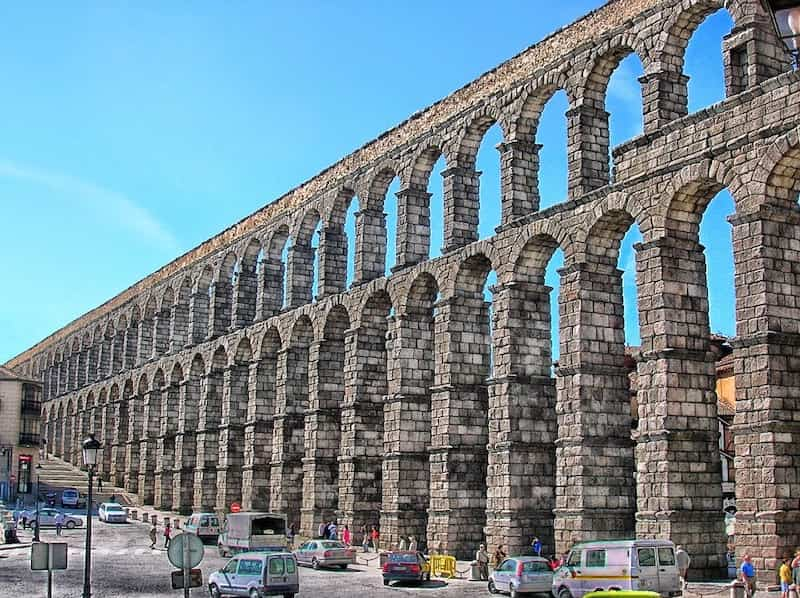
The aqueduct is a landmark of beautiful Segovia.
The Old Town of Segovia and the Aqueduct are World Heritage Sites in Spain.
Segovia aqueduct is one of the best-preserved ancient Roman buildings in the world. It’s 15.3 mi (19 km) long with more than 160 arches. Believe it or not, the aqueduct is still in use.
Segovia aqueduct can easily be visited on a day trip from Madrid.
Check out: Segovia Half-Day Trip with Guided Walking Tour from Madrid
28. HAVE A RIDE IN THE GONDOLA OF VIZCAYA BRIDGE
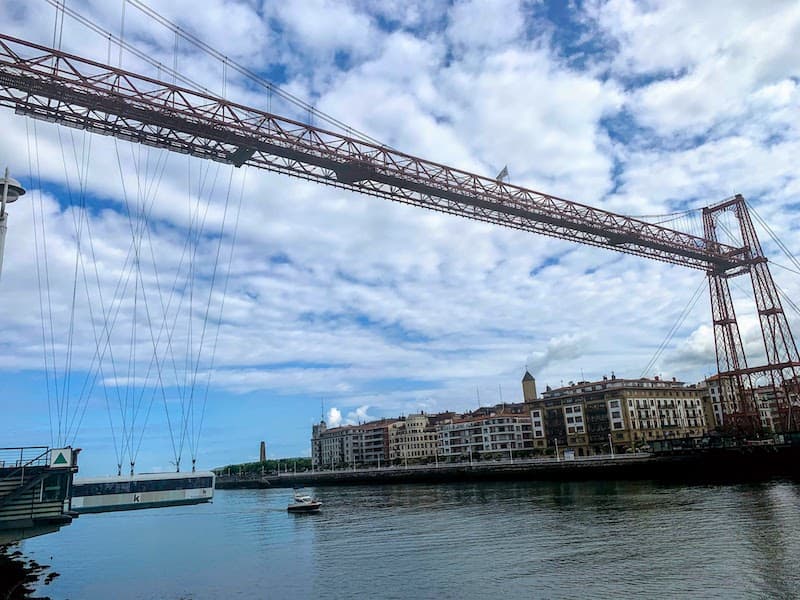
The hanging Vizcaya bridge in Biscay Bay is the oldest transporter bridge in the world.
The bridge connects the banks of the River Nervion and the towns of Portugalete and Getxo and it’s 164 m long and 45 m tall with 4 towers. The gondola of the bridge can transport 6 cars and about 100 passengers.
For the construction of the bridge, iron technology and new steel cables were used for the first time in history. Today the bridge is a symbol of the industrial era.
UNESCO declared the bridge a Word Heritage Site. It’s a landmark of the Basque Country.
Viyicaya bridge is easily reachable from Bilbao.
Check out: Biscay Bridge and Pintxos Private Tour from Bilbao
29. ADMIRE THE CITY OF ARTS AND SCIENCE OF VALENCIA
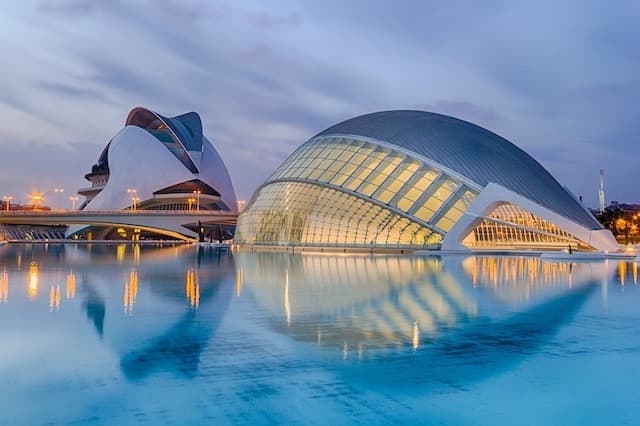
The incredible City of Arts and Sciences complex in Valencia is one of the 12 Treasures of Spain.
The complex includes several buildings: the Oceanogràfic,(Europe’s biggest aquarium), Hemisfèric (a digital 3D cinema), Umbracle (a garden), Science Museum (with interactive exhibitions related to science and technology), Palau de Les Arts (the Opera House), and Ágora ( an events’ venue).
In addition, Valencia is one of the most beautiful beach cities in Spain. Valencia is a must-visit for beachgoers and architecture enthusiasts.
Check out: City of Arts & Sciences Tour with Rooftop Wine & Tapas
30. VISIT GUGGENHEIN MUSEUM IN BILBAO
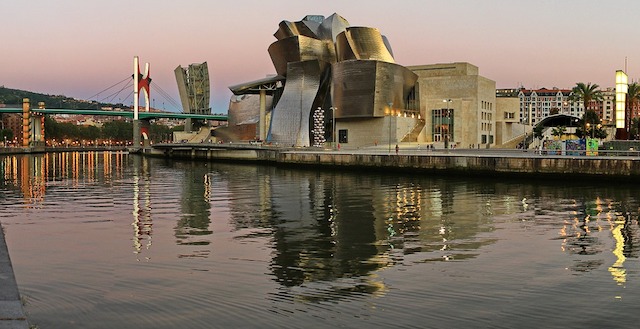
Guggenheim Museum in Bilbao belongs also to the 12 Treasures of Spain.
Guggenheim Museum is a landmark of Bilbao. Bilbao is nicknamed ‘the City of Guggenheim’ after the museum.
Even more, the Guggenheim Museum of modern and contemporary art in Bilbao is regarded as a monument to modernism. Famous architect Frank O. Gehry designed the museum in such a way that free-form titanium-sheathed mass formed a unique abstract sculpture.
The museum exhibits a huge collection of Minimalism, Pop Art, Conceptual Art, and Abstract Expressionism on 3 levels and 19 galleries.
Check out: Guggenheim Guided Tour with Skip-the-Line
31. SEE RONDA
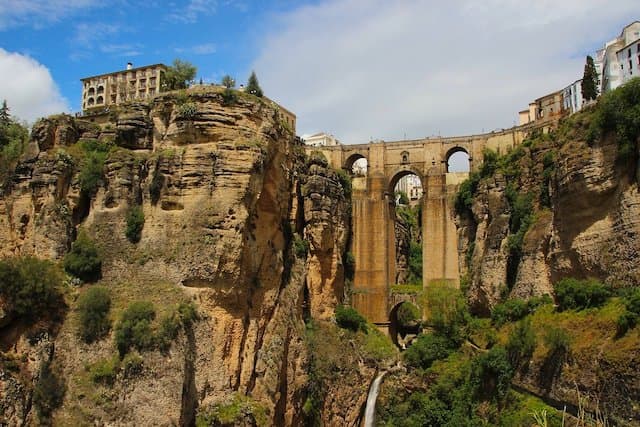
Ronda is the town with the most dramatic setting in Spain.
For the very same reason, it’s the most photographed town in Spain. This spectacular town sits on the cliff above El Tajo gorge in southern Spain .
Ronda is one of the most picturesque towns in Andalusia and one of those amazing must-see places in Spain.
Artistic souls especially love Ronda. Ernest Hemingway and Alexander Dumas were probably the best-known admirers of Ronda.
Besides that, Ronda is the place where bullfighting was born. Plaza de Toro in Ronda is the oldest bullring in Spain. The impressive Puente Nuevo bridge over the gorge and Banos Arabes, one of the best-preserved Arab Baths in Andalusia, are must-sees in Ronda.
Read more about the 10 best places to visit in southern Spain .
32. EAT IN THE OLDEST RESTAURANT IN THE WORLD – SOBRINO DE BOTIN

Sobrino de Botin in Madrid is officially the oldest restaurant in the world.
This iconic restaurant was founded in 1725. Botin’s signature dish is roasted sucking pig ( cochinillo asado ). The dish got famous thanks to Ernest Hemingway. The genius writer was a regular guest of the restaurant and even had his favorite table on the second floor. Ernest Hemingway mentioned Botin and roasted suckling pig in his The Sun Also Rises.
Madrid’s Sobrino de Botin is one of the top must-visit classic restaurants in the world.
33. TRY CHURROS CON CHOCOLATE
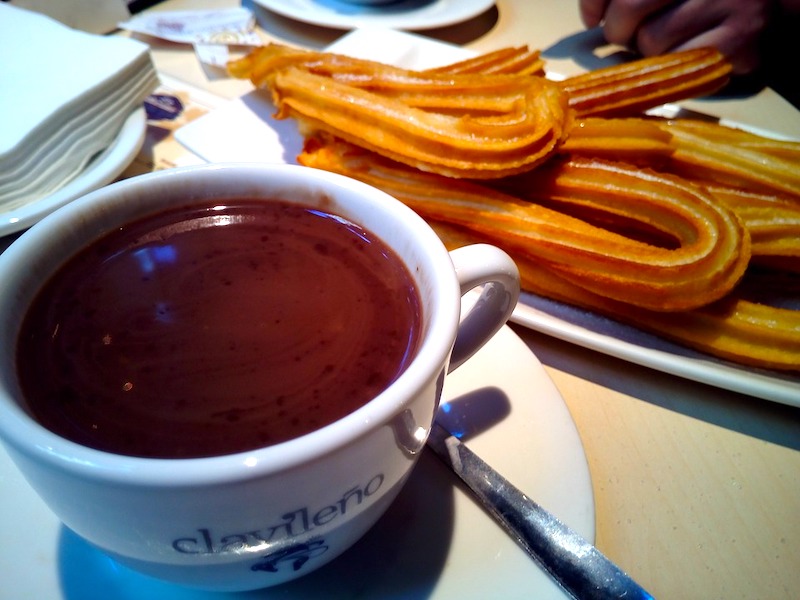
Churros con chocolate are some of the most popular Spanish desserts .
Yummy churros are long and fried Spanish doughnuts. They are typically sprinkled with sugar and sometimes even cinnamon.
Spaniards traditionally dip sweet churros in dark chocolate and enjoy them along with a cup of coffee.
Don’t forget to try Spanish churros with chocolate in Spain!
34. HAVE PAN CON TOMATE FOR BREAKFAST
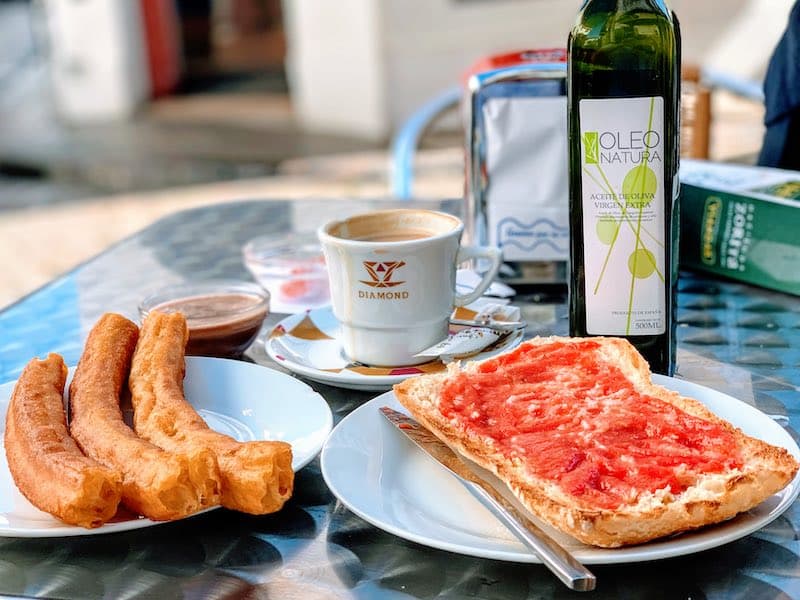
When in Spain, do like Spaniards do and have pan con tomate for breakfast in Spain!
Spanish toasted bread with tomatoes and olive oil is the most iconic breakfast food in Spain !
Spanish pan con tomate is equally loved among Spaniards and among tourists! If you love toasted bread, good-quality olive oil, and freshly grated tomatoes, you will love pan con tomate too!
35. GO TO ‘THE END OF THE WORLD’
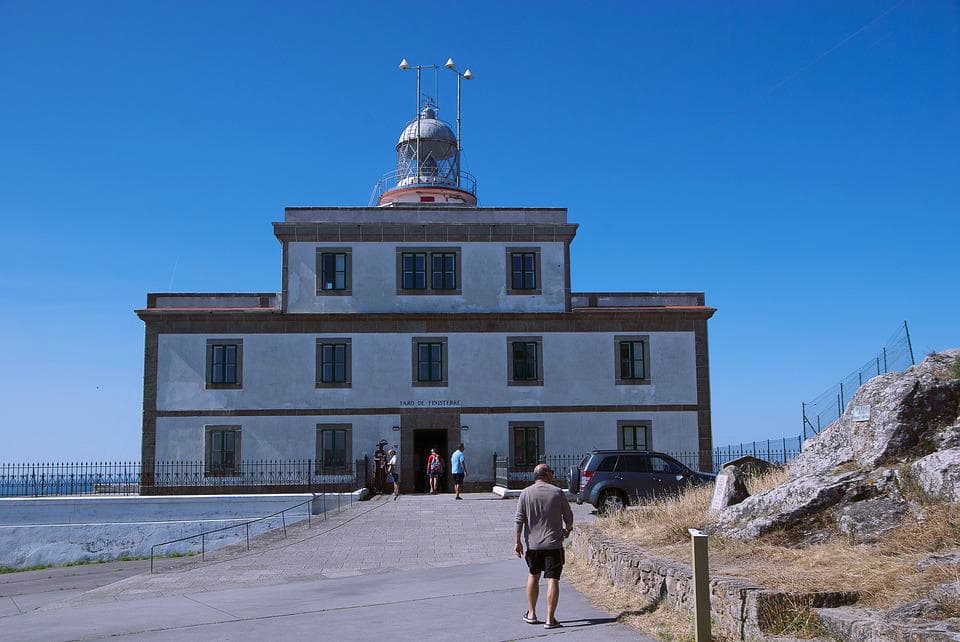
Finisterre in Spanish (or, Fisterra in the Galician dialect) is a small fishing port town on the Atlantic coast in Galicia, Spain.
Finisterre ( Fisterra ) was believed to be the ‘End of the World’ in Roman times. The name Finisterre literally comes from Latin Finis Terrae which means ‘ End of the Earth ‘. Finisterre was the most western point of the Roman empire and was believed to be the place where the world ended (before the discovery of the Americas). Medieval Camino de Santiago pilgrims continued their journey from Santiago to Finisterre to see the end of the world. Modern pilgrims continue the tradition and embark on the same journey. I did the same. Here you can read my guide to Camino de Santiago a Finisterre .
36. REFRESH YOURSELF WITH SANGRIA
What’s the most famous drink from Spain ? Sangria, of course!
Sweet, bubbly, refreshing, with lots of red wine and lots of fruits … what’s not to love about Sangria?! Sangria is one of the most popular Spanish drinks. Refresh yourself with authentic Sangria when in Spain!
37. TOUR CIDER HOUSES IN ASTURIAS AND THE BASQUE COUNTRY
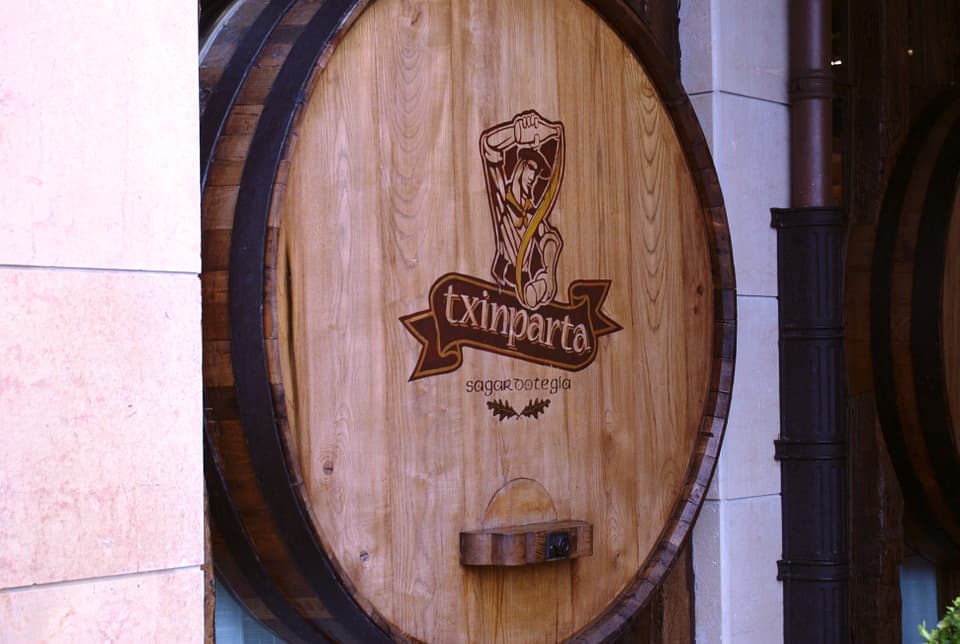
Cider is often referred to as the wine of northern Spain. Cider, made of fermented apples, has been produced in Asturias and the Basque Country in northern Spain for centuries. Today Asturias produces about 45 million liters of cider a year. And the Basque Country produces about 13 million liters of cider a year. Cider is called sidra in Asturias, and sagrado in the Basque Country. Traditional cider houses are called sidrerias in Asturias and sagardotegi in the Basque Country. The best-tasting ciders are poured straight from barrels, of course. If you want to experience some of the very best cider, head to traditional cider houses in Asturias and the Basque Country. The season of opening barrels with new cider goes from January to April. Touring traditional sidrerias in Asturias and sagardotegi in the Basque Country is among the most authentic things to do in Spain.
- Recent Posts
- Top 15 Best Things to Do in Rome, Italy - March 4, 2024
- 2 days in Rome itinerary: Top Things to Do in Rome in 2 Days - February 23, 2024
- Rome in a Day Itinerary: How To Spend One Day in Rome - February 12, 2024

11 Amazing Outdoor Experiences To Do in Spain
The timeless architectural wonders, lavish outdoor scenery, towering mountains, shimmering coastlines along with charming villages and bustling cities, there is enough to keep all ages and personalities entertained when visiting the top attractions in Spain .
While most people flock to Spain for the usual touristic activities, however, there are phenomenal outdoor experiences including Spain's Sierra Nevada, the Canary Islands, the Pyrenees to name but a few.
This article will unveil 11 of the most amazing outdoor experiences you can do in Spain and the best places to accompany these incredible, unforgettable adventures.
1. Walk the St James Trail (Camino de Santiago)

Embark on the pilgrimage of a lifetime! The revered Camino de Santiago, replete with a network of trails, is an ancient route that has carried pilgrims for thousands of years. You can choose from a range of hiking routes stretching across France, Portugal, England, and Spain.
There's the 835 km Camino del Norte, which winds through four regions in northern Spain. Get lost in your thoughts as you walk among jagged cliffs, countryside meadows, and pristine beaches. This long route begins in Irun in France before taking you through Spain.
Not into taking a super long route? We totally get it. The 321-km Camino Primitivo, which is dubbed as the Original Way, may suit your timeline a little better! Most walkers complete this section in 12-14 days.
The web of trails all lead to the same endpoint: Santiago de Compostela, where St. James was buried.
Get the lowdown on what to pack, details on the various routes, and other essential information to help inspire your epic long-distance walking journey via this extensive guide to Camino de Santiago !
2. Swimming in San Sebastian
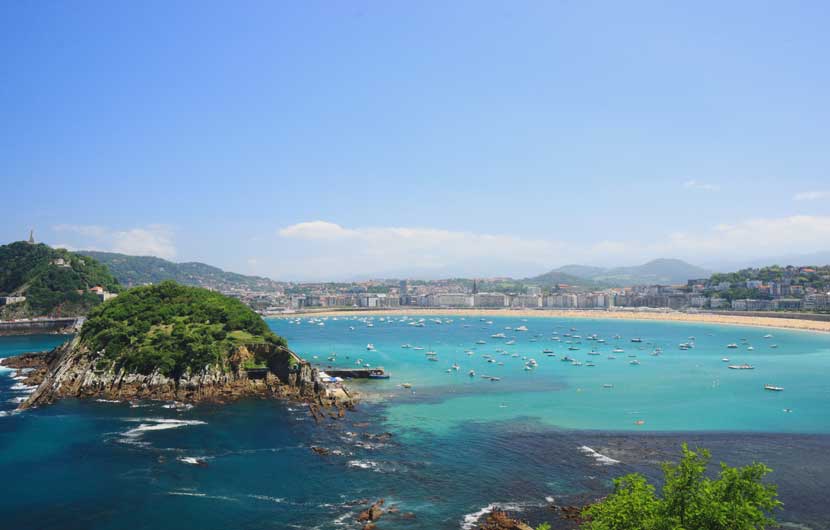
San Sebastian's seaside setting paints a picture of a timeless summer. It's the beach resort town where fragrant salty air intertwines with wafts of incredible culinary concoctions, and the glistening water flirts with the golden shoreline.
When you're here, it's impossible to skip out to the Playa de la Concha , the long beach that grants sun-soaked days and refreshing swims.
Meanwhile, surfers will find their groove at the nearby Playa de la Zurriola, where roaring waves provide a high-class thrill.
3. Multi-sport adventures in the Pyrenees
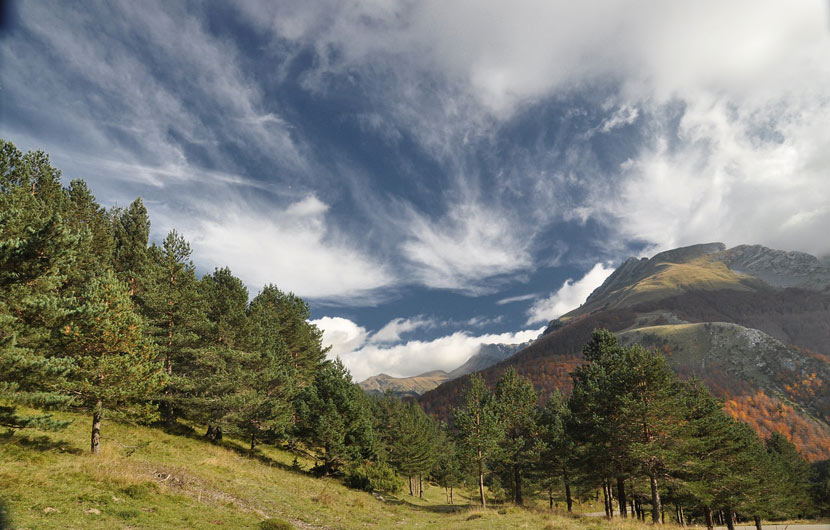
The intimidating Pyrenees divides Spain and France, and this powerful mountain range is the ultimate hub for adventures. You may not think it a worthy destination, considering the multitude of other outdoor experiences peppering Spain, but if you want a fusion of unlimited adventures, the Pyrenees is your spot.
When snow blankets the land, skiers and snowboards can head to the ski slopes of Spain , where world-class conditions and jagged peaks stretching across the horizon create one remarkable outdoorsy experience.
But that's not all! During the spring, when the snow melts and cascades from the mountain peaks, the river morphs into roaring waters, providing thrilling rafting experiences for those craving an unreal adrenaline rush.
And there's more.
Tucked into the rugged scenery, you'll find the Lanuza Reservoir , where gentle kayaking meanders await. Or, hike from Astún and cross the French side by foot. The Astún walking trail winds by postcard-painted lakes cradled by greenery and jagged peaks.
4. Scuba Diving in the Canary Islands

There's nothing like floating directly above vibrant coral reefs and watching marine life swim in and out of their natural habitat!
Scuba diving is truly a remarkable experience no matter where you go. Still, if you find yourself bored in Spain (yeah, right) or you're an avid scuba diver, you might as well rent some gear, get off land, and start exploring the shimmering waters flanking this remarkable country.
We suggest going to the Canary Islands , where bright and clear blue water offers a fantastic diving experience. The volcanic activity from the past has resulted in some jaw-dropping scenery.
You'll find remarkable rock formations dotting the seabed! Some even jet up to around 10-feet tall, making it extra cool to see the abundance of fish swimming in and out of the formations. Some of the species to be found in this area are Parrot Fish, Cow Breams, Barracuda, Sting Rays, and more.
Those who can't get enough of swimming with fish can find more striking underwater scenery on the Balearic Islands .
5. Hiking in Picos de Europa
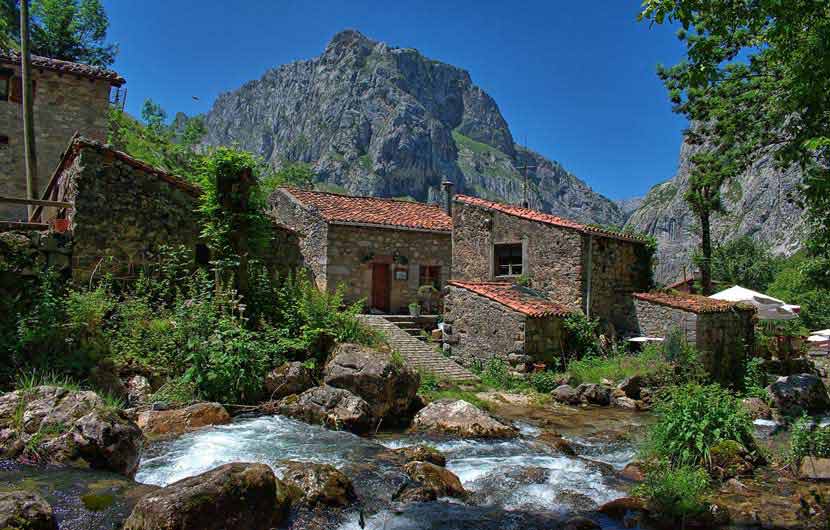
Lace-up your hiking boots and head to the iconic Picos de Europa. Suppose you want to immerse in nature after exploring the vibrant, famous cities and quaint villages peppered across Spain. In that case, Picos de Europa has your name written all over its carved-out trails, jagged peaks layered with verdancy, and lush green pastures.
The supernatural views etched across the 64,660-hectare area will keep you as entertained as the bustling villages and cities outside of this natural phenomenon.
Here are some hikes to consider in Picos de Europa:
- The 12-km Cares Route, where paths are laced with thick greenery.
- The Covadonga Lakes will have you feeling like you're starring in an old-time musical, thanks to the greenery fused with shimmering lakes fronting layers of peaks.
- The Ordiales Scenic Balcony Trail, winds to a viewpoint that offers a bird's eye view of mountains, cloaked in green, stretching across the horizon.
But Picos de Europa isn't the only destination with a network of hiking trails! You'll find a collection of trails snaking across the epic Sierra Nevada.
6. Hiking in the Sierra Nevada
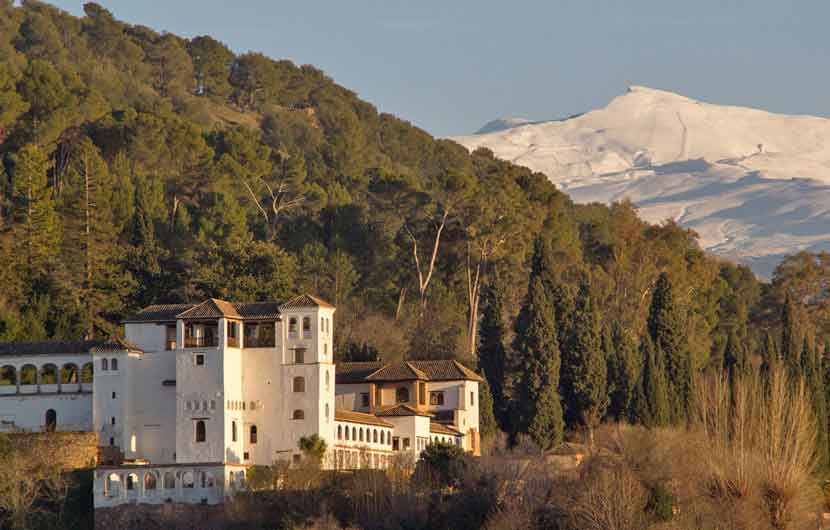
The dramatic Sierra Nevada mountains line the south of Spain. While this range provides a stunning backdrop from afar, there's nothing like exploring the surrounding scenery up close! And what better way to do this than to go hiking?
The Sierra Nevada offers a range of hikes tailored for all skill levels; you'll find a surplus of self-guided walks that range in distances, spread across the area.
Some must-do hiking tracks include the demanding The Vereda de Estrella , the intimidating Capileira-Mulhacén, and the slightly less challenging and intimidating Hoya de la Mora-Veleta.
7. Rock Climbing in Andalucía

Ever think of rock climbing in Spain ? We have a feeling that most of you answered "nope" to that question!
But the handful of you who want to climb vertical faces in the Andalucía region are in for a treat. You'll find a fantastic blend of single-pitch routes and multi-pitch climbs.
Just head to El Chorro, Cordoba, Granada, and Malaga for some unbelievably epic, scenic climbs!
8. Canyoning in Costa del Sol
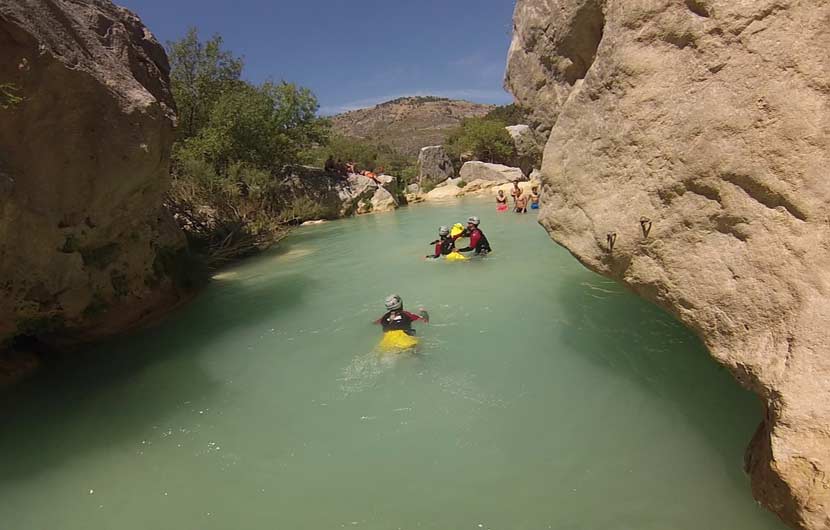
Experience something totally different in Spain—something you've likely never experienced: canyoning. Canyoning blends exciting adventure sports to form one great activity. Expect to experience a mixture of hiking, climbing, mountaineering, swimming, and caving as you navigate through moody caves and up cliffs!
You'll find unreal canyoning opportunities in Costa del Sol , which sits along the coast in the province of Málaga within the region of Andalucía. If you end up here, do yourself a favour and give canyoning a try—you won't be disappointed!
9. Cycling in Spain

Avid cyclists flock to all parts of Southern Spain between January and March to make the most of quality quiet roads under the blissful rays of winter sunshine.
The best part is that after you work up an appetite, you'll find a surplus of restaurants awaiting you.
For quieter roads, head to Costa Almeria, Murcia, Granada and the Costa de la Luz, where longer rides will keep you moving for a while.
For hardcore cyclists who appreciate the intense, higher-altitude climbs head to the Sierra Nevada mountain range in Granada .
Northern Spain also boasts of a smattering of cycling hotspots. The first one worth noting is Girona —some argue that it's the cycling capital of Europe. Several professional cyclists even call this place home. Girona is a great place to cycle for those seeking a fusion of culture and leisurely rides with the occasional burst of exertion.
Other towns worth adding to this list of great spots for cycling country bike tours in the north are Costa Dorada and San Sebastián .
10. Water sports in Tarifa

Don't want to leave the shimmering, summer-perfect water, but wouldn't mind getting your adrenaline pumping? Just head to Tarifa, located on the Southern shoreline of Andalucía, where kitesurfing, windsurfing, and paddleboarding will guarantee a worthwhile, unforgettable experience.
Tarifa is known as the wind capital of Spain and is fast becoming one of Europe's go-to places when it comes to wind and kite surfing .
11. Canoeing the Sella River
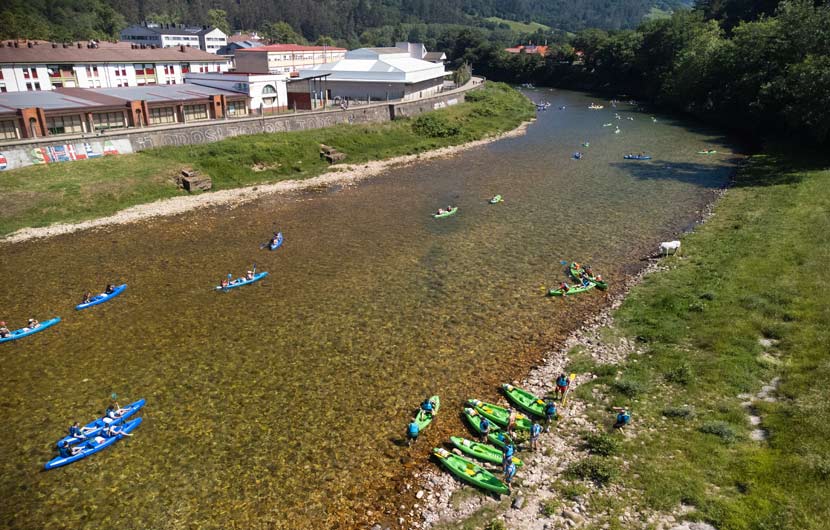
But it's not just any canoe trip, it's a race down the river, and it's a significant event, much like a yearly marathon. It's only a 20-km course, but thousands of canoeists flock to the river to try and come out on top.
However, it's not only the canoeists participating in this yearly event—spectators get a chance to create a party out of it, too. The spectators, adorned in fun costumes, travel with the canoeists.
When the canoers finish the race, everyone gets to dance, enjoy a picnic before turning into a full-on extravaganza when night falls.
Book Adventure Tours in Advance
- About Author
- Latest Posts

Enjoying the Spanish way of life, especially its culture and amazing gastronomy. Im constantly travelling around Spain enjoying new places, attractions and friendly travellers along my way.
Latest posts from Zak
- 26 Best Things To Do In Barcelona For 2024 - January 28, 2023
- The Most Beautiful Towns & Villages In Spain - January 22, 2023
- 21 Best Cities In Spain To Visit - December 24, 2022
Recent Posts

4 Days in Valencia – The Ultimate Bucket List Itinerary
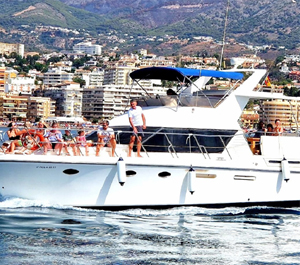
Luxury Spain Holidays – The Ultimate Bucket List Travel Guide
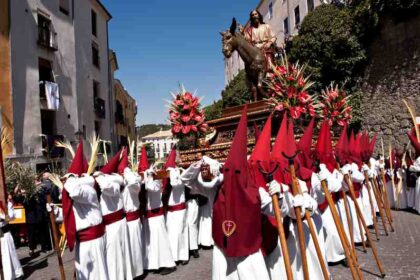
Easter in Spain – Semana Santa Holy Week Traditions

Barcelona Nightlife – Best Discos & Nightclubs Not To Be Missed

Making The Most Of Shore Sightseeing Excursions In Spain Whilst Cruising The Med
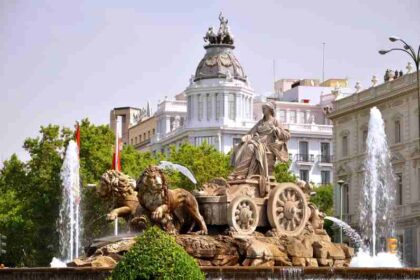
The Ultimate Spain Bucket List – 300+ Spanish Experiences

9 Great Cultural Sites to Visit in Madrid

16 Christmas Traditions in Spain You Should Know About
Leave a reply cancel reply.
Your email address will not be published. Required fields are marked *
This site uses Akismet to reduce spam. Learn how your comment data is processed .
Disclosure: Please note that some of the links included in the above content may be affiliate links. We may earn a commission if you make a purchase at no extra cost to you. Rest assured, we only recommend products and services that we personally use or have used and are happy to recommend. Any commission we earn helps toward the site's running costs.


Travel Smarter - Not Harder
Download free e-guides and travel tips.
Start your Journey today and get access to exclusive FREE content.
Username or Email Address
Remember Me
- WHY VISIT SPAIN?
- TRAVELLING TO SPAIN
- SPAIN ON A BUDGET
- TRAVEL REQUIREMENTS – ETIAS
- SPAIN ENTRY REQUIREMENTS
- SPANISH CUISINE
- SPANISH FOOD
- HOLIDAY IDEAS
- PUBLIC HOLIDAYS
- TOURISM BOARDS
- AIRPORT GUIDE
- DRIVING IN SPAIN
- WEATHER IN SPAIN
- FREE WEB CAMS
- BEST BEACHES SPAIN
- FESTIVALS & FIESTAS
- MUSEUMS IN SPAIN
- CAMPING IN SPAIN
- MARINAS IN SPAIN
- SKIING IN SPAIN
- WATER PARKS
- UNESCO WORLD HERITAGE SITES
- 80 BEST ATTRACTIONS
- 71 BEST PLACES TO VISIT
- REGIONS OF SPAIN
- COSTA DEL SOL
- CANARY ISLANDS
- SAN SEBASTIAN
- Complete List:
- SAGRADA FAMILIA BARCELONA
- BARCELONA FC STADIUM TOUR
- BARCELONA FLAMENCO SHOW
- SEVILLE FLAMENCO SHOW
- SEVILLE CATHEDRAL
- GAUDI`S CASA BATLLO
- THE ALHAMBRA GRANADA
- SANTIAGO CATHEDRAL
- CITY OF ARTS & SCIENCE VALENCIA
- MOSQUE-CATHEDRAL CORDOBA
- CAMINITO DEL REY
- PRADO MUSEUM MADRID
- REINA SOFIA ART MUSEUM
- SCUBA DIVING
- BEST TAPAS TOURS
- BEST WINE TASTING TOURS
- TOUR GUIDES
- HOTELS IN SPAIN
- LUXURY HOTELS
- LUXURY BEACH HOTELS
- HOLIDAY RENTALS
- PARADOR HOTELS
- CHEAP FLIGHTS
- TRAVEL INSURANCE
- FREE TRAVEL BROCHURES
- WIN FREE HOLIDAYS


Spain, a hub for music tourism

By Javier Picazo Feliu
Madrid, Mar 14 (EFE).- Music festivals are a huge attraction for international tourism in Spain, with more than 5 million foreign visitors coming to the country in 2023 to attend nearly 1,000 festivals and cultural events.
“Live music, attending festivals and concerts, is all about emotions and experiences. Spain is a world leader in tourism and is a powerhouse as a tourist destination for musical festivals,” Miguel Sanz Castedo, director general of the Spanish Tourism Institute (Turespaña), tells EFE.
A booming sector that brought in more 459 million euros (502.3 million US dollars) in 2022, 20% more than in 2020.
The sector is expected to generate 508 million euros by 2025, according to data from the live music promoters sector and the sectoral report of the PWC consulting firm.
“Spain is not only good weather and beaches, rich in artistic heritage, excellent gastronomy and sports. It is culture, quality, rich and extensive, and part of that is enjoying live music, festivals, artists and spectacular locations, all year round,” adds Sanz.
According to Turespaña, last year more than 5.3 million international tourists – who were mainly from France (13.1%), the United Kingdom (12.7%), Germany (9.6%), Italy (8.3%) and the United States (7.5%) – attended cultural events, including music festivals, in Spain.
INCREASINGLY INTERNATIONAL FESTIVALS
The Rio Babel festival in Madrid is one of those that has most changed its original conception as an event for locals to appeal to more international audiences.
“We have tried to make the festival grow without losing its essence. This year, 14% of the audience is expected to come from outside Spain, about 10% more than in the previous edition,” says Germán Quimasó, Director of the production company Sonde3, in charge of the Festival, in an interview with EFE.
To that end, Rio Babel has been divided into two for what will be its third edition: the one-day “Road to Rio Babel” event, with a strong international appeal – featuring bands such as Green Day, The Hives and The Interrupters – and the traditional three-day “Rio Babel” which mixes Latin American talent – such as Juanes, Andrés Calamaro and the rapper Trueno –, international artists such as The Cat Empire and the highlights of the local music scene.
In terms of tourism and being an urban festival in Madrid, the hook is the music: “if the line-up is attractive enough, they come to the festival and visit Madrid. We try to make it stylistically very eclectic,” he says.
At other events in more traditional hotspots such as Sónar and Primavera Sound in Barcelona or FIB in Benicassim, the festival’s attraction also comes from its location.
Although summer is still the key time for these festivals, with 80% of the events held in 2022 between June and September, the sector is already moving to try to offer off-season proposals and attract more visitors during the rest of the year.
“It’s a very positive impact. It generates wealth, hotels are sold out. In the end sustainability is constant, from an environmental, financial point of view. All the brands present at a festival have very important quality and sustainability standards. Right now, fortunately, the legislation itself has come a long way,” David Pejenaute, Vibra Mahou’s Content Manager, told EFE.
The music platform channels part of the experience of festivals, serves as a launching pad for local talent and promotes meetings around live music, a link that has as one of the main stages the Mad Cool festival in Madrid, which welcomes nearly 200,000 attendees in its four days of performances.
The event this year will feature a very international lineup and performances by artists such as The Killers, Dua Lipa, Maneskin and Pearl Jam, among others.
“It is a festival with internationally renowned artists who understand that this entails a high percentage of attendees from outside Spain,” which means offering “a higher quality experience for users and creating a kind of amusement park where you have a series of activities and content that allow you to enjoy more,” he says. EFE
Related Articles

Memphis Legend Butch Mudbone to Receive Bronze Note on Beale Street

Memphis Rock ‘n’ Soul Museum Moving to Former Hard Rock Cafe on Beale Street

Love Food Hate Waste Memphis: Event Seeks to Raise Awareness About Food Waste

The Methodist Launches a Program in Spanish for the Care of Chronic Diseases


- --> Add Event
- --> Login/Signup
Upcoming Tourism Events in Spain
- Event Category
- Event Country
- Conferences
- Exhibitions
- Agriculture & Forestry
- Animals & Pets
- Apparel & Clothing
- Arts & Crafts
- Auto, Boat & Air
- Automobile - Automotive Industry
- Baby, Kids & Maternity
- Banking & Finance
- Building & Construction
- Charity & Causes
- Chemistry - Energy - Materials
- Education - Training - Employment
- Electric & Electronics
- Entertainment & Media
- Environment & Waste
- Equipment & Service for Commerce and Industry
- Family & Education
- Film & Media
- Food & Drink
- Gems & Jewellery
- Home & Lifestyle
- HR, Jobs & Career
- Industrial Engineering
- IT & Technology
- Logistics & Transportation
- Medical & Pharma
- Miscellaneous
- Office Equipment & Service
- Optik & Brillen
- Packing & Packaging
- Performing & Visual Arts
- Power & Energy
- Quality & Security
- Real Estate
- School Activities
- Science & Tech
- Security & Defense
- Spirituality
- Sports & Fitness
- Telecommunication
- Toys & Games
- Travel & Outdoor
- Cayman Islands
- Cte d'Ivoire
- Deutschland
- Estados Unidos
- Myanmar (Burma)
- Netherlands
- New Zealand
- Philippines
- Puerto Rico
- Saudi Arabia
- South Africa
- South Korea
- Switzerland
- The Bahamas
- Turkmenistan
- United Arab Emirates
- United Kingdom
- United States
- Valencia, Spain

Global Congress on Advanced Satellite Communications 2023
Next-Generation Satellite Communications; Explore the advancements in satellite technology, including new constellations, high-throughput satellite...
Events are better when your friends are there too.
So, who's coming with you?
- Sign In
- Register

A verification code send to Your Email
- Publish Your Event for Free
- Find Upcoming Events Near By
- Grow Your B2B Network
- Fix B2B Meeting Online/Event
- Showcase Products to Right People
Embracing Tradition: Respecting Local Customs in Spain’s Vibrant Culture

We use affiliate links, and receive a small commission if you make purchases through them. Find out more here .

Unlock the Ultimate Guide to Airline Luggage Allowances
Don’t get caught off guard by unexpected baggage fees! With this comprehensive eBook, you’ll have all the information you need at your fingertips.
You have successfully joined our subscriber list.
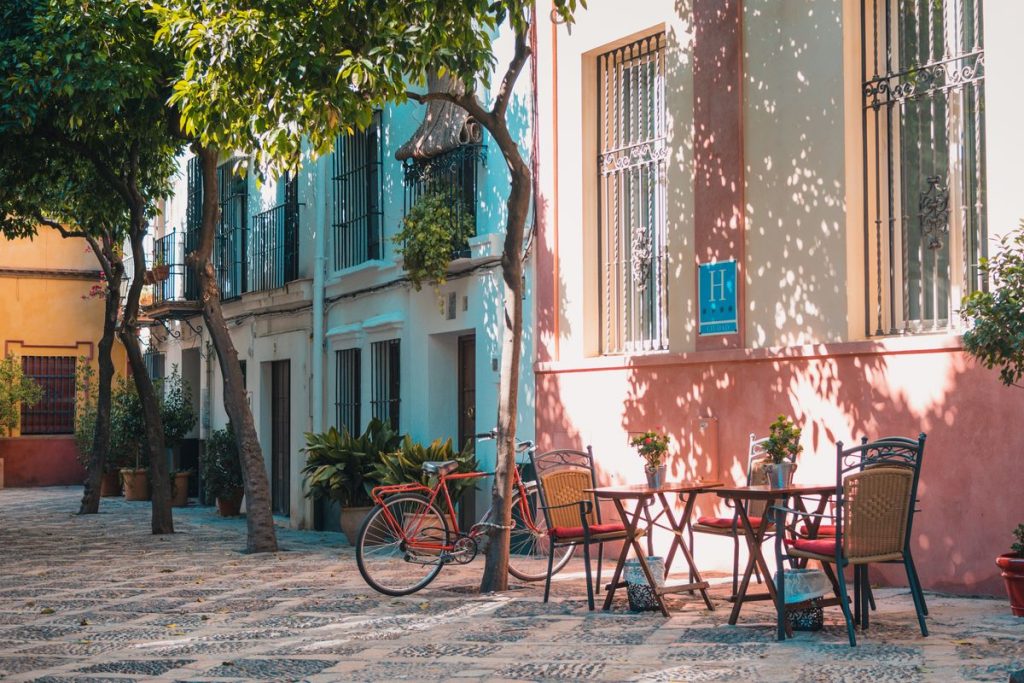
Golden beaches, flamenco dancers, and tantalizing tapas – Spain is a treasure trove of experiences waiting to be discovered. But as travelers, while we immerse ourselves in the beauty of Spain, it’s crucial to navigate its cultural nuances with respect and understanding.
So, how can you ensure your Spanish escapade is both enriching and respectful? Let’s embark on this journey together!
TL;DR: Key Takeaways
- Spain is the second most visited country globally, emphasizing the need for cultural sensitivity.
- The tradition of siesta is still alive, especially in smaller towns.
- Understanding local customs leads to a richer, more authentic travel experience.
- Insider tips to help you blend in and respect Spanish traditions.
- Spain’s diversity goes beyond flamenco and fiestas; it’s a blend of history, art, and passion.
The Allure of Spain: A Tourist Magnet
With over 82 million tourists in 2018, as reported by the World Tourism Organization , Spain’s allure is undeniable. From the architectural wonders of Barcelona to the historic charm of Toledo, Spain offers a diverse palette of experiences. But with great popularity comes great responsibility – the responsibility to travel responsibly and respect local customs.
Siesta: More Than Just a Nap
The siesta, a traditional afternoon rest, is a testament to Spain’s laid-back lifestyle. While the hustle and bustle of cities like Madrid might have reduced the prevalence of this custom, in many smaller towns, it’s still a cherished tradition. So, if you find shops closed in the afternoon, take it as an invitation to relax and rejuvenate, just like the locals.
Diving Deeper: Beyond the Surface
Rick Steves, a renowned travel writer, aptly said, “ When in Spain, do as the Spaniards do… ” Spain’s culture is a rich tapestry of history, art, and passion. Whether it’s participating in the local fiesta, savoring a paella in Valencia, or simply greeting locals with a cheerful “¡Hola!”, every gesture that shows your appreciation of Spanish customs makes your journey more memorable.
Regional Nuances: Spain’s Diverse Tapestry
Spain is a country of regions, each boasting its distinct customs, traditions, and even languages. From the Basque Country in the north, with its unique language and culinary traditions, to Andalusia in the south, the birthplace of flamenco, understanding these regional nuances is key to truly appreciating Spain. For instance , while you might be greeted with a passionate flamenco performance in Seville, in Barcelona, you could be serenaded by the melodies of a Catalan rumba.
La Familia: The Heartbeat of Spanish Life
Family is the cornerstone of Spanish society. Multi-generational households are common, and family gatherings, often over long, leisurely meals, are a cherished tradition. If you’re fortunate enough to be invited to a Spanish home, you’ll witness this firsthand. It’s not just about the delicious paella or the tantalizing tapas; it’s about the warmth, the laughter, and the stories shared across the table. Remember to bring a small gift as a token of appreciation, and be prepared for an evening filled with genuine hospitality and joy.
Festivals: Celebrating Life the Spanish Way
Spain is renowned for its festivals, each one a vibrant display of local culture and tradition. From the tomato-throwing festival of La Tomatina to the running of the bulls in Pamplona, these events are a window into the Spanish soul. However, while they’re incredibly fun and lively, it’s essential to approach them with respect. Understand the history and significance behind each festival, and always be considerate of local sentiments. After all , these aren’t just events; they’re a celebration of life, the Spanish way.
Insider Tips: Navigating Spain with Grace
When attending local festivals, dress modestly and be mindful of religious processions. Always wait for your host to start eating when invited for a meal. And remember, Spaniards are night owls ; don’t be surprised if dinner starts post 9 pm!
Spain, with its rhythmic flamenco beats and vibrant fiestas, promises an adventure of a lifetime. By understanding and respecting local customs, you’re not just a tourist but an ambassador of global unity and understanding. So, put on your dancing shoes , savor that churro, and let Spain’s magic envelop you.
Is tipping customary in Spain?
While tipping isn’t obligatory in Spain, it’s appreciated. A small tip in restaurants or cafes shows gratitude for good service.
How should I greet locals?
A handshake is common for formal introductions, while close friends and family often exchange two kisses, starting with the left cheek.
Is English widely spoken?
In major cities and tourist areas, English is commonly understood. However, learning a few basic Spanish phrases can enhance your travel experience.
What’s the best time to visit Spain?
Spring and fall offer pleasant weather and fewer crowds, making them ideal for exploring Spain’s diverse landscapes and cultures.
Are there any local customs I should be aware of when visiting religious sites?
Yes, when visiting churches or cathedrals, dress modestly, covering shoulders and knees. Silence and respect are expected inside religious sites.
- World Tourism Organization
- Rick Steves’ Europe
- Official Spain Tourism Website
This post is also available in: English
You Might Also Enjoy

One response to “Embracing Tradition: Respecting Local Customs in Spain’s Vibrant Culture”
Great read, Kevin Erickson! Your insights on urban gardening truly resonate with my own experiences. I remember starting with just a couple of peace lilies in my flat’s balcony, and now I have a mini jungle there. It’s mind-blowing how vertical gardens can be an answer to urbanization, isn’t it?
One thing that I’m curious about though, how do you manage pests in such a setup? Also, do you have any hacks for better sunlight in constricted spaces?
Adding on, vertical gardening also helps in maintaining the microclimate and can be used for growing your own veggies. Indeed, nothing better than home-grown, pesticide-free produce!
I believe a discussion on composting might add another layer to this conversation. What are your thoughts on that, folks?
Keep the green thumb growing, everyone! 🌱✌️
Leave a Reply Cancel reply
Your email address will not be published. Required fields are marked *
Save my name, email, and website in this browser for the next time I comment.
Featured in

GET CONNECTED
Follow Clever Journey on social media for travel tips, packing hacks, and latest updates!
SUB TO NEWSLETTER
Subscribe to our newsletter to get the latest travel tips, packing hacks, gear reviews, and bargain deals straight to your inbox. We hate spam, so we’ll send only the most important stuff.
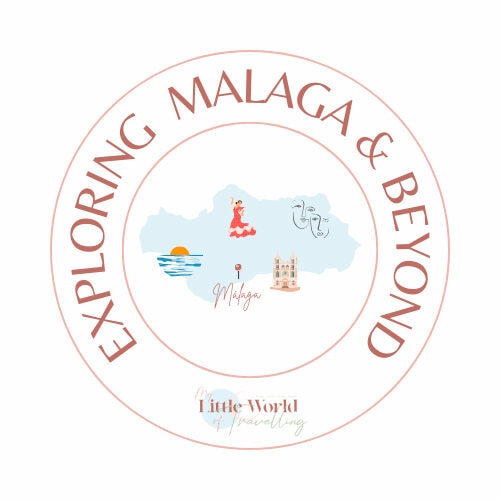
Spain Bucket List: 50 Amazing Experiences in Spain
Are you looking for the ultimate Spain bucket list?
As a Spaniard who has been travelling around Spain for a long time, I know there are many incredible activities to do, and if you don’t want to miss them, I’ve got you covered.
Spain is a diverse country in which you can enjoy a wide range of experiences – from visiting some of the most beautiful buildings in Europe, like Sagrada Familia and Alhambra, and eating delicious food to attending lively traditional festivals and fairs.
If you love this beautiful Mediterranean country and want to start a Spain bucket list, in this blog, you’ll discover some of the most amazing experiences in Spain from a local perspective.

This post contains affiliate links, and as an Amazon Associate, I earn from qualifying purchases. If you click through and purchase something, I receive a small commission on the price at no extra cost to you. This helps me keep the content up to date and make other improvements to the blog.
Table of Contents
Experiences in Northern Spain
1. visit a winery in la rioja.
Are you a wine lover? Then you really need to visit La Rioja region. This is one of the best places in Spain to go wine tasting.
La Rioja is home to wine museums, well-known wineries and incredible restaurants where you can enjoy some of the most delicious Spanish tapas.
It’s a wine and food paradise, and taking a wine tour is always a good option. Local guides will take you to the best wineries in the region, tell you the secrets behind good wine and tell you a bit more about this beautiful part of Spain.
You won’t leave La Rioja without trying a Rioja wine!
📌 Check out this fantastic private wine tour here
2. Go to Guggenheim Bilbao Museum

The Guggenheim Museum is the first thing that comes to mind when you think about Bilbao . It’s the most emblematic museum in Northern Spain.
This museum and art gallery are home to beautiful sculptures and pieces of art, and if you love the modernism period, you must add the Guggenheim Museum to your itinerary.
It’s a museum that you can’t rush seeing it. There are more than 2 floors and plenty of exhibition rooms to explore, and if you opt to listen to the audio guide, you’ll definitely spend a lot of time here.
In addition to this, don’t forget to see impressive sculptures such as the Giant Spider and the Puppy, the world’s largest flower sculpture, just outside the museum.
3. See the Magdalena Palace

Palacio de la Magdalena is a beautiful fairytale palace in the city of Santander in Northern Spain.
The palace is in the Magdalena Peninsula, surrounded by the sea and is a popular spot among locals and tourists.
Initially, the purpose of this palace was to provide a seasonal residence for the Spanish royal family, and although it served as a residence, it was declared a historical monument in 1982.
Not only can you visit Magdalena Palace and learn about the royal family, but you can enjoy the sea views from the cliffs, see a small open zoo with seals and penguins, and take a train tour.
Palacio de la Magdalena is definitely one of the top things to do in Santander .
4. Eat pintxos in San Sebastian
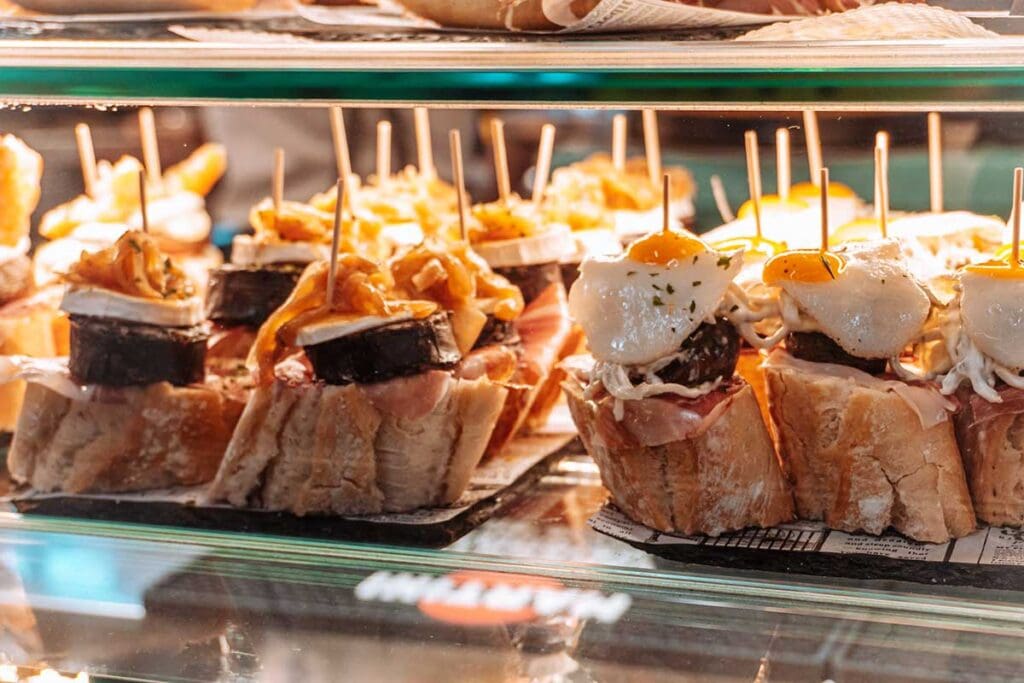
When visiting Northern Spain , you don’t eat tapas but pintxos. They’re extremely popular in Basque Country, La Rioja, Cantabria and Asturias, but San Sebastian is the best place to taste the most delicious pintxos.
These consist of small bites that often have meat, vegetables or fish that are put together with a toothpick on top of a slice of bread. You can find pintxos of tortilla (Spanish omelette), octopus, croquettes and much more.
If you go to any bar or market, you’ll be able to enjoy these tasty pintxos, which are a big part of Northern Spain’s culture. They’re synonyms for socialising with friends and others.
📌Check out this highly-rated pintxos and wine evening tour in San Sebastian
5. Visit San Juan de Gaztelugatxe
Have you ever watched season 7 of Games of Thrones? Then you’ll probably recognise this beautiful location.
San Juan de Gaztelugatxe is an islet located 40 minutes from Bilbao in Northern Spain.
The islet is connected with the mainland by a man-made stone bridge; then, it transitions into a path that has about 240 steps and zigzags all the way to the top.
A local legend says that when you reach the top church, you need to ring the bell three times to make a wish.
Visiting San Juan de Gaztelugatxe is a unique experience that you need to add to your list when you visit the Basque Country.

6. Explore the fishing village of Cudillero
Cudillero is one of the most beautiful hidden gems in Spain . This little fishing village which sits on the side of a mountain, is a must-see destination when visiting Asturias.
Its colourful houses, small but charming port and hanging buildings make it a picturesque and unique destination.
It isn’t a village with many sights, but it’s still worth visiting, exploring its streets and port as well as relaxing at its stunning beach, Playa del Silencio, on a warm spring or summer day.
7. Hike Camino de Santiago
Camino de Santiago , St James Old Way, is one of the most popular hiking trails in Spain.
However, there isn’t only one route to go on Camino de Santiago. For example, you can do the Camino del Norte route, which takes you through some of the lushest and greenest areas in Northern Spain or the Camino Portugués route, which starts in Portugal.
No matter which route you take, all of them take you to Santiago de Compostela Cathedral, home to the tomb of Saint James, one of the twelve apostles of Jesus Christ.
Walking Camino de Santiago is an unforgettable experience.
8. Take part in La Tomatina
Have you ever heard of a festival that consists of throwing tomatoes at other people? Well, that festival takes place in the town of Buñol in Valencia, Spain!
This food fight is held on the last Wednesday of August every year, and tons and tons of tomatoes are thrown in the streets.
It’s one of the most fun experiences in Spain, but you need to know that it has become so popular that it is very difficult to find accommodation in this town during those dates.
Therefore, if you want to attend La Tomatina, you can stay in Valencia and take the bus or train to Buñol.
9. Go inside Sagrada Familia

Seeing the Sagrada Familia is a top bucket list experience in Barcelona. This unfinished but emblematic work of art is one of the most beautiful and unique buildings in the world.
Not only will it amaze you from the outside, but the inside too. When you go inside, you’ll be mesmerised by the amount of detail and work Gaudí put into this building.
Gaudí was inspired by local natural elements, and this is seen in the columns, which look similar to trunks and rooftop details like sunflowers.
On top of this, it’s beautiful to admire the colourful stained glasses that are reflected on the floor.
📌 Get your Sagrada Familia fast-track access ticket here
10. Go on a day trip to Montserrat
When you plan a trip to Barcelona for longer than 3 days, you’ll want to check out all the incredible day trips you can do from the city.
One of the most popular day trips from Barcelona is Montserrat as it’s very accessible by public transport.
If you’re wondering if it’s worth visiting Montserrat , the answer is yes. It’s a lovely Mount home to a few beautiful attractions like Montserrat Monastery, an art gallery and a cable car that offers breathtaking views.
But Montserrat isn’t only for sightseeing but for going on hiking trails too. It’s the perfect day trip if you love a combination of nature and attractions.
11. Admire the views from Park Güell
Barcelona is home to many picturesque places , and Park Güell is one of them.
Not only is it a must-see natural space but an open gallery where you can see sculptures, monuments and some of the most beautiful views of Barcelona city.
Walking around the park and its gardens is a unique experience – beautiful palm trees, green parakeets flying over, colourful mosaic sculptures and interesting buildings like the Gaudi House Museum.

📌 TIP : The park gets very busy as it’s visited by travellers from around the world. This is why I recommend going to Park Guell before the monumental area opens and, if possible, on a weekday.
Experiences in Eastern Spain
12. watch las fallas in valencia.

Las Fallas is one of the most unique events in Spain and something you want to add to your Spain bucket list. It’s so special that it has been added to UNESCO’s Intangible Cultural Heritage of Humanity list .
This traditional festival lasts 5 days and consists of a street party with fireworks, light shows and fallas , and spectacular statues, that are burnt.
These statues are very impressive and tall, and they range from famous cartoons to politicians and celebrities.
Las Fallas are held between the 15th and 19th of March, so if you’re planning to visit Valencia in the future, definitely consider going during these dates.
13. Eat a traditional paella in Valencia

When someone asks you about Spanish food, paella is probably one of the first dishes that come to your mind.
This traditional dish from Valencia is the most popular one in Spain, but it doesn’t mean it’s cooked all the time. Some Spaniards follow the tradition of cooking paella on Sundays, but there isn’t a rule on when to eat paella really.
It’s a typical dish to prepare when you gather with friends and families as it’s cooked in a big paellera (specific paella pan) from which you mark your portion and eat from the paellera.
Although not everyone eats it this way, this is the authentic way to have paella!
No matter which area of Spain you visit, you need to try paella or take a paella cooking lesson to learn how to make one.
14. Explore the colourful town of Villajoyosa

Nestled between Benidorm and Alicante , Villajoyosa is a small town well-known for its colourful houses, stunning beaches and delicious chocolate.
Not only is it a great day trip from Alicante, but the perfect place for those who want to experience a more relaxed and less touristy place in the Costa Blanca.
Visiting the old town of Villajoyosa is one of the best and most free things to do in this charming town. Here you can explore its streets, have some tapas at the bar and visit the chocolate museum.
Also, there’s no visit to Villajoyosa without hitting the beach!
15. Visit a pink lake

Did you know that there is a pink lake in Spain? Yes, you heard right.
La Laguna de Torrevieja, located in Alicante, is one of the wonders of nature you wouldn’t expect to find in Spain but in far-away tropical destinations like Indonesia or Mexico.
The Pink Lake of Torrevieja is inside the Nature Park of Lagunas de la Mata and Torrevieja, and here you can see this eye-catching bubblegum pink lake, spot flamingos, and visit the interpretation centre to learn about this unique place which is also a big producer of salt in Spain.
16. Stay at La Muralla Roja
You’ve probably seen La Muralla Roja before, but if not, it’s a pink building with very unique architecture and stunning views of the sea in Calpe, on the Costa Blanca.
It’s a very picturesque building. However, you can just turn up there to take photos because it’s an apartment complex. You must book accommodation to access the inside of the building, which has interconnected patios, a roof and a pool.
The rooms aren’t out of this world, but wandering around the building and contemplating the sea views from the apartment makes your stay an unforgettable one.
📌 Check out rates and availability for La Muralla Roja Apartments here
17. Explore Cartagena

Cartagena is a hidden gem in Spain. This lesser-known city located in the region of Murcia takes you back to Roman times.
Its impressive Roman Theatre, archaeological museums and castle are some of the highlights of Cartagena. It’s a city to get immersed in history and learn about previous civilizations in Spain.
In addition to history and archaeology, Cartagena is also a place for foodies.
Experiences in Central Spain
18. walk in el retiro park.
A green oasis in the heart of Madrid, El Retiro is one of the most impressive parks in the country that was declared a UNESCO World Heritage Site too.
Not only will you be surrounded by pure nature but interesting monuments and sculptures, and there are many things you can do in El Retiro – from visiting La Rosaleda (the circular rose gardens) and seeing the Crystal Palace to renting a rowboat with friends.
Exploring this park is a must-do activity and needs to be on your Madrid bucket list.
19. Eat churros con chocolate

Churros con chocolate is the perfect breakfast for those with a sweet tooth. Delicious deep-fried churros (fried dough like doughnuts) dipped in thick hot chocolate, what’s not to like about them?
Regardless of the Spanish destination you plan to visit, you need to go to a breakfast bar where they serve churros. There’s nothing better than having a few churros with chocolate on a winter day.
However, if you aren’t a big fan of chocolate overload, there are many bars that serve other sauces to dip in churros, like dulce de leche (caramel sauce).
20. Eat the twelve grapes at Puerta del Sol in Madrid
Are you looking for new destinations to celebrate New Year’s Eve? You won’t regret choosing Madrid.
Spaniards have a different type of Christmas in comparison to other countries like the United Kingdom or Poland, as well as a unique way of celebrating the beginning of a new year.
To celebrate the New Year in Spain, you must eat 12 grapes at the rhythm of the 12 chimes just before midnight. By eating these, you’ll have good luck in the upcoming year.
Although most Spanish families celebrate this at home, experiencing this in Puerta del Sol is a unique experience as this is where you find the clock followed by the whole of Spain, and the atmosphere is amazing.
21. Visit Segovia, one of the oldest cities in Europe

An incredible day trip from Madrid is Segovia, one of the oldest cities in Europe.
If you love learning about Spanish history and culture whilst you travel around Spain, Segovia needs to be on your itinerary.
This World Heritage City is home to a beautiful cathedral, an impressive aqueduct and a Jewish Quarter that is worth wandering around. The city is also a great culinary spot to try some traditional dishes in the area, like roast suckling pig or lamb.
22. Visit the historical city of Salamanca
Spain is home to numerous historical cities, and Salamanca is on the top list.
Salamanca is the perfect getaway from the buzzing city of Madrid. This charming town is a UNESCO World Heritage Site with history and culture.
Explore its cobbled streets in the historic old quarter, go to the prestigious University of Salamanca and visit not only one but two beautiful cathedrals.
Although you can see the main attractions in one day, it’s worth staying overnight and wandering around the city in the evening when the buildings light up, and the place becomes even more magical.
23. Visit Toledo
Toledo is one of the best historical cities to visit in Spain, and exploring this charming city is a true experience.
Walk along Puente de Alcántara, visit the synagogue, explore Monasterio de San Juan de Los Reyes, wander around the old town and Jewish Quarter, and soak up all the history behind Toledo.
One of the best ways to explore Toledo is by taking a guided tour with a local guide who can take you to the must-see attractions and show you some hidden gems.
No matter how you explore the city, you can’t leave Toledo without trying marzipan. El Café de las Monjas is the best place to do so.
Experiences in Southern Spain
24. explore cabo de gata-níjar national park.

Some of the most beautiful landscapes in Spain are in Cabo de Gata-Níjar National Park.
This natural park is known for its unique rock formations (cliffs, caves, etc.) and crystal-clear water beaches that are difficult to find anywhere else in the country.
Exploring Cabo de Gata is an experience, and there are many activities you can do – from taking a fun kayaking tour and scuba diving to learning about the vegetation and fauna of this place and relaxing at virgin beaches.
There is no visit to Cabo de Gata without seeing Arrecife de las Sirenas, an outcrop of rocks sticking up out of the blue sea.
25. Ski at the Sierra Nevada

Most people have this misconception that Spain is sunny and warm, but the truth is that Spain is very diverse, and you can find cooler temperatures too.
One of the best places to see the snow in Spain is Sierra Nevada in Granada, the only ski resort in Southern Spain.
Sierra Nevada is the perfect place for snowboarding, skiing or having a spa break with scenic views. And in addition to this, here you’ll find the highest mountain on Spain’s mainland, Mount Mulhacen.
It’s the perfect winter getaway, but you can also visit Sierra Nevada off-season as you can experience this beautiful natural area differently, like going on hiking trails.
26. Visit a whitewashed town in Southern Spain

Southern Spain is home to beautiful whitewashed towns and villages, and there’s even a recognised route called “Ruta de los pueblos blancos”, which consists of the most beautiful white towns between the provinces of Malaga and Cadiz.
If you have enough time to visit beyond Andalusia’s main cities, explore some of these picturesque white towns.
Not only are these towns beautiful, but they’re perfect for immersing yourself in the Andalusian culture, as each one has food, traditions and unique views.
Some of the most popular white towns include Frigiliana and Ronda in Malaga and Setenil de las Bodegas and Olvera in Cadiz.
27. Admire the views of Balcon de Europa in Nerja
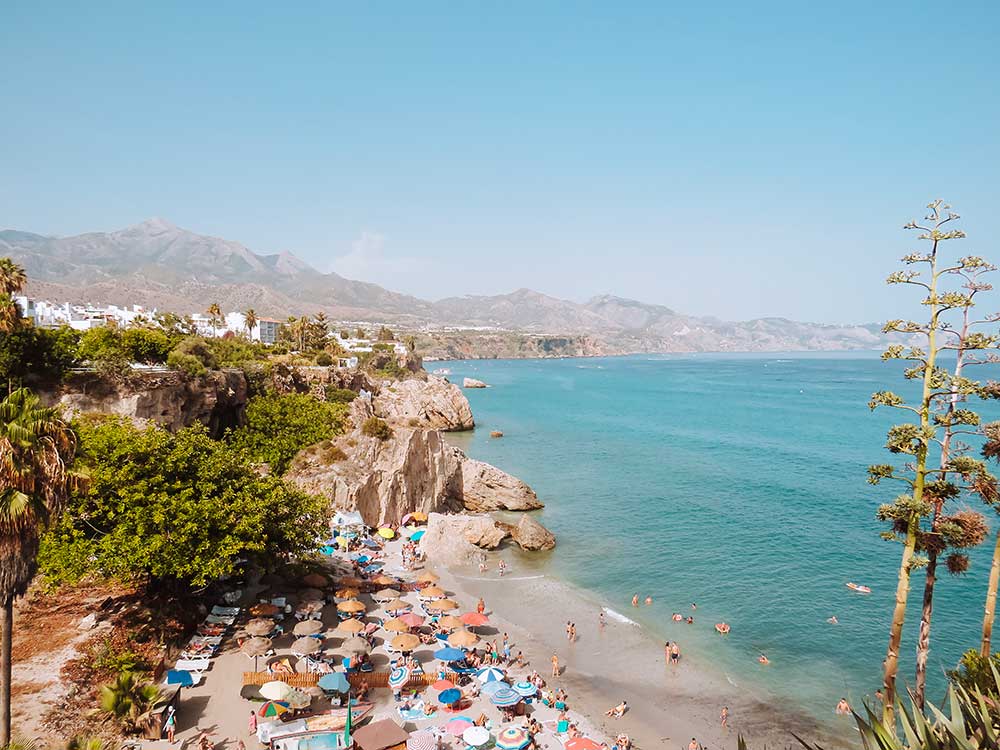
Whitewashed buildings, pristine beaches and stunning nature make Nerja a must-see destination on the Costa del Sol.
Nerja has many activities to offer – from kayaking and visiting its caves to eating delicious traditional fish dishes and relaxing at one of its crystal clear sea beaches .
However, one of the best things to do in Nerja is to admire the views of the famous Balcón de Europa, a viewpoint that offers a postcard view of Costa del Sol – the contrast of beautiful whitewashed buildings, the sea and mountains.
The best times to admire the views of this incredible viewpoint are sunrise and sunset. The colours of the sky make it even more magical.
28. Hike El Caminito del Rey
Caminito del Rey is one of the most incredible hiking trails in Southern Spain.
This path used to be the most dangerous hiking trail in Europe for a long time, but you don’t need to worry now as it has been restored and adapted for the public, so it’s safe to do it.
However, you still need to feel brave to walk through this 8-kilometre path hanging over 100 metres up on a sheer cliff face.
It’s a unique experience in which you’ll contemplate stunning cliffs, canyons and a large valley.
📌 TIP : It’s important to book your tickets well in advance as this hiking trail has become very popular, and travellers from all around the world visit Malaga just for this trail.
29. Visit the Alhambra

This UNESCO World Heritage Site is the most beautiful Moorish masterpiece in Spain.
The Alhambra is a complex with numerous palaces, sculptures, monuments, gardens and courtyards that will take you back to those times when Spain was conquered by the Muslims.
Although a few parts of the Alhambra were built before the Muslims arrived in Spain, it was rebuilt by Mohammed ben Al-Ahamar, the Emirate of Granada, during the middle of the 13th century.
The palace went from being a military base to a royal residence and nowadays is one of the most visited palaces in Spain.
30. See Seville Cathedral, one of the largest cathedrals in Spain

Seville Cathedral is one of the largest Gothic cathedrals in Spain and has been a UNESCO World Heritage Site since 1987.
This Roman Catholic cathedral located next to the Santa Cruz neighbourhood and the Alcazar palace complex is a true gem.
Walking through the different parts of the cathedral is an experience as each place has a story behind it, and it’s from here that you can access its tower, La Giralda.
From La Giralda Tower, you’ll enjoy some of the best views of Seville’s city centre.
31. Watch a flamenco show

One of the top cultural experiences to add to your bucket list is watching a flamenco show, and the best place to do so is Seville, the birthplace of this traditional music and dance.
If you don’t have the opportunity to visit Seville , you can also watch a flamenco show in other Andalusian cities like Malaga and Granada.
Flamenco is part of the culture of Andalusia, and it’s a very technical dance to learn, so you’ll be hundred per cent impressed by the steps and rhythm of the music.
Watching a live show is an entirely different experience than seeing it on TV.
32. Attend Feria de Abril
If you’re looking for authentic cultural experiences in Spain, you’ll want to attend Feria de Abril in Seville. As its name suggests, this event takes place in April, and it’s one of the most famous events in Andalusia.
Be ready for colourful traditional flamenco dresses, fireworks, attractions and delicious food and wine (including rebujito , Seville’s traditional wine) for a week.
Eat and drink at the many beautifully decorated booths, attempt to dance flamenco or watch the passionate flamenco dancers, go on a ride or simply walk through the event complex while enjoying the lively atmosphere.
You’ll realise that Andalusian people know how to celebrate things at a different level.
33. Explore Cordoba’s mosque-cathedral

The Mosque-Cathedral of Cordoba , known as La Mezquita, has been a UNESCO World Heritage Site since 1984 and is one of the most famous churches in Europe.
Its impressive architecture, composed of Islamic with Hellenistic, Roman and Byzantine touches, makes it a very special place to see.
Wandering around La Mezquita is an experience for those who love architecture, religion and culture. There are lots of features to contemplate and learn about, so make sure not to rush your visit.
Another thing not to miss during your visit to La Mezquita is exploring its beautiful courtyard surrounded by orange trees, palm trees and cypress.
📌 Book your skip-the-line ticket here
34. See the most impressive bridge in Spain

One of the most emblematic bridges in Spain is Puente Nuevo in Ronda, Southern Spain.
This bridge connects the newer built part of Ronda with the old town of Ronda, and the views of the bridge are spectacular regardless of where you look at it.
There are different viewpoints, but the best views are from below, and you can access the lower part of the bridge by following a small path from one of the sides of María de la Auxiladora square.
The best times to see this impressive bridge are at sunrise and sunset. The stunning views of the bridge and town, with the contrast of the colours of the sky, will make you fall in love with Ronda.
35. Taste Andalusian tapas

Are you a foodie? You’ll fall in love with tapas.
If you don’t know what a tapa is, it consists of a small hot or cold appetiser.
Some common tapas are tortilla de patatas (Spanish omelette), gambas al ajillo (garlic prawns), aceitunas (olives), and jamón (Iberian ham), but the options are endless.
Granada is the best Andalusian city to go on a tapas tour . Go from bar to bar, tasting delicious tapas without spending a fortune.
When you buy a drink, it comes with a tapa, so you aren’t paying for the tapa but for the drink. The more drinks you have, the more tapas you eat.
But it’s important to clarify that you don’t need to have an alcoholic drink, like a beer or wine, to receive a tapa. You can order a soft drink or water too.
36. See the Semana Santa processions
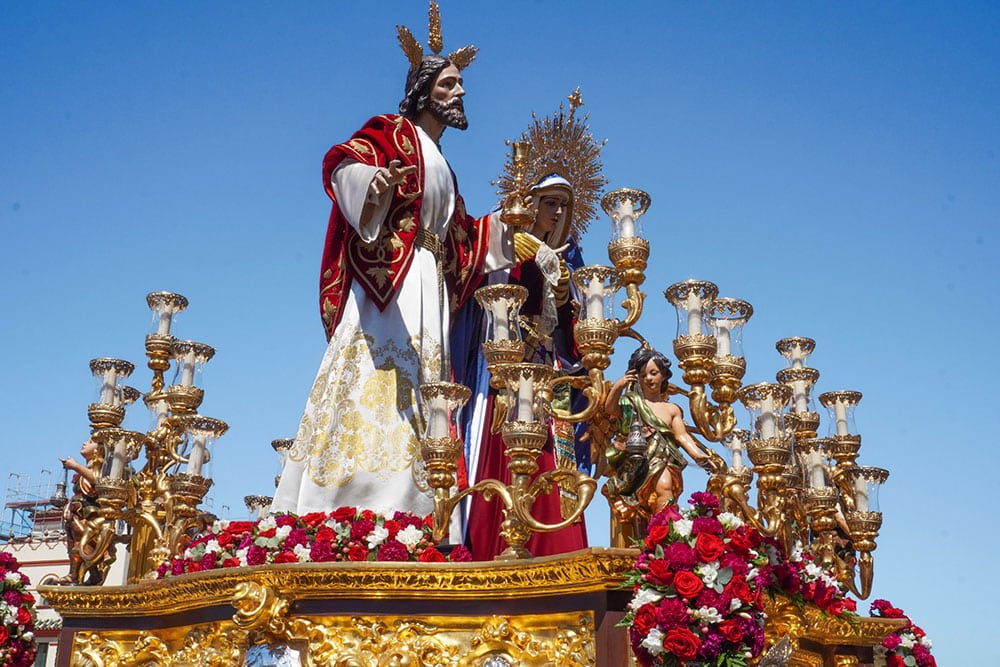
Holy Week, Semana Santa, in Spain, is another world, so it isn’t surprising to hear how impressed travellers are.
During the Semana Santa, religious processions take place in the main streets of city centres. These processions include scenes from the Bible, like the last dinner and Jesus’ Resurrection.
Men, who belong to the religious brotherhoods, are the ones who carry these heavy processions for hours, and then you’ll also see nazarenos that follow the processions.
Although Semana Santa is celebrated in the whole country, Andalusia is one of the best places to experience it.
Regardless of your beliefs, it’s a unique event to see once in your life!
37. Soak up the sun in Costa del Sol

If you’re a sun seeker, you must add Costa del Sol to your Spain bucket list.
Costa del Sol, translated as Coast of the Sun, is the area that comprises all the coastal towns alongside Malaga. Although it’s a popular summer destination, you can enjoy the sun almost year-round as it’s said that it’s sunny for approximately 320 days.
In the summer months, you’ll enjoy its buzzing and lively atmosphere at the beach and restaurants, whereas the winter offers a different experience that is perfect for sightseeing and going on hikes.
Some coastal towns you need to check out are Benalmadena , Fuengirola and Marbella .
38. Visit Setenil de las Bodegas

Setenil de las Bodegas, located on the border between Malaga and Cadiz, has become one of the most visited small towns in Southern Spain .
Its houses and bars built under cliffs, created by the local river, make this place unique and worth seeing.
However, that’s not all; Setenil is characterised by its whitewashed buildings and numerous viewpoints from which you can admire the contrast of houses and mountains.
If you love picturesque small towns and villages, Setenil de las Bodegas is a must-see! Plus you can combine this town with Ronda, another incredible white town with one of the most beautiful bridges in Spain.
39. Kitesurf in Tarifa

If you love kitesurfing or would love to learn how to kitesurf, there’s no better place than Tarifa, known as the kitesurfing mecca of Europe.
The wind conditions are perfect for kitesurfing all year round, but the laid-back vibes and lifestyle attract more than those who want to practice this watersport.
Tarifa is a charming town that is worth visiting – there are plenty of lovely restaurants to eat some tapas and fresh fish and non-water activities like yoga, mountain biking, etc.
40. Explore La Alcazaba de Malaga

When visiting Andalucia, you must spend some days in Malaga. Most people come to Malaga for one day , but the city has much more to offer.
Regardless of how long you’re staying in Malaga, visiting La Alcazaba de Malaga is a bucket list experience. This beautiful Moorish fortress-palace is the most emblematic building in the city.
As you make your way to La Alcazaba, you can expect hills that give access to beautiful viewpoints across the building, charming courtyards with fountains and small gardens filled with scented jasmines and other flowers.
The views from this fortress-palace couldn’t be better – the sea, the port, Malaga’s bullring and the contrasting greens from Malaga’s Park.
41. Horseriding in Andalusia
Horseriding is a very common activity to do in Andalusia, and if you’ve ever wanted to ride a horse or you already know how to do it but want to experience it in Spain, then add this one to your bucket list.
Cadiz is one of the best places to do horseriding, but you can find lessons and tours in other Andalusian cities as well.
One of the most unique experiences in Spain is horseriding on the beach, and you can do this on the Playa Mangueta coastline in Cadiz.
📌Check out this highly-rated horse ride on the beach at sunset
42. Wander one of the most luxurious ports in Spain
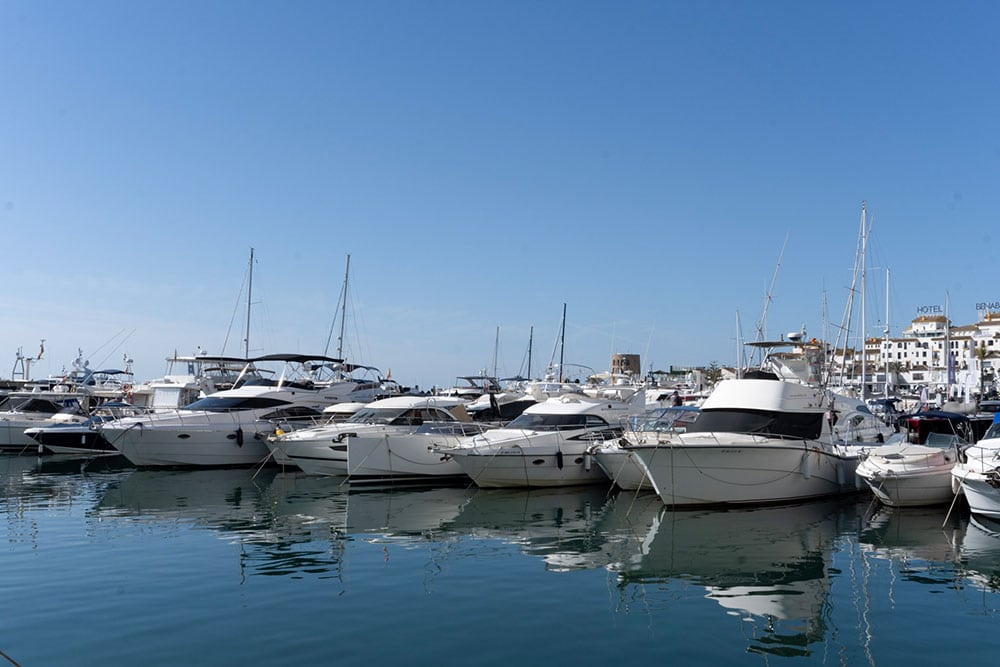
Puerto Banus is a synonym for glamour and exclusive shops where you can treat yourself to luxurious jewellery and clothes.
Even if you aren’t after shopping, you can experience the atmosphere, see impressive yachts and cars or have a meal.
Experiences in the Spanish Islands
43. hike mount teide.

Who said there aren’t volcanos in Spain? El Teide is a volcano in Tenerife, in the Canary Islands.
It’s the highest point in Spain and the third-largest volcano in the world, so you definitely don’t want to miss the opportunity to hike Mount Teide.
There are many different paths to get to the summit of the volcano, but the most challenging trail is the most rewarding.
It starts at Montaña Blanca, and it takes about 6 hours to reach the Altavista Refuge, the best accommodation in Spain for a view where you can stay overnight to rest and finish the climb early in the morning to watch the magical sunrise.
Hiking Mount Teide is one of the most unique things to do in Spain.
44. Spend a day at Siam Park
If you’re up for some adrenaline and love water parks, you need to visit Siam Park, the largest water park in Europe.
Siam Park is located in Tenerife, in the Costa Adeje, so you can’t leave without spending a day in this incredible water park.
One of its most popular and bravest attractions is the Tower of Power, where you plunge down a 28-metre drop and travel through an aquarium.
However, it’s also a great place to visit with family and children as there are attractions for all ages.
📌 Book your Siam Park tickets here
45. Try banana wine at Museo del plátano

I didn’t know there was a museum all about bananas in Tenerife, but it does make sense since Tenerife and the rest of the Canary Islands are the biggest producers of bananas.
The museum is excellent for learning about bananas but also for trying the best bananas, banana liqueur and even wine.
46. Explore the magical village of Masca

Masca is one of the most magical places in Tenerife. This village, located on the mountainside, seems to come straight from a postcard. It also resembles Machu Pichu in Peru.
Wander this lovely town and stop for lunch at La Terraza restaurant for traditional Canarian food with a view. If you’re into hiking, there are also some scenic hiking trails in the area.
It’s good to know that the road to Masca isn’t the easiest to drive, so booking an excursion to Masca is always a good idea. I’m glad a local guide took me there.
47. Experience the carnival

Santa Cruz de Tenerife has the second-best carnival in the world. Undoubtedly, the atmosphere and impressive customs make it worth experiencing. Within Tenerife, you can also enjoy the carnival at Puerto de la Cruz .
Another great place to enjoy the carnival is Cadiz. Apart from the lively parades, they host chirigotas competitions. Chirigotas are sarcastic songs about political and current life issues.
48. Admire Palma de Mallorca Cathedral

Palma Cathedral, also referred to as La Seu, is a must-see attraction in Spain.
This 14th-century Roman Catholic cathedral was built on the site of a former Moorish-era mosque, and the Catalan Gothic style highly influenced its architecture. Even the famous Gaudí had some input on this incredible building.
Seeing the cathedral from the outside is spectacular as it’s located in the heart of the city, and its surroundings are beautiful.
During the spring and summer months, you can visit the cathedral rooftop, where you’ll enjoy the stunning panoramic views of the city.
It’s a hundred per cent worth adding La Seu to your Spanish bucket list!
49. Party in Ibiza
If you’re looking for a girls’ getaway in Spain and you love the nightlife, then Ibiza is perfect for you.
Ibiza is well-known for its luxurious beach clubs, amazing concerts and lively atmosphere, and if you’re after that, you’ll be happy to choose Ibiza as your next destination.
Although nightlife in Ibiza is on another level, it’s important to know that Ibiza is much more than a party destination. There are beautiful natural places to explore and see.
Extra experience: Spend Christmas in Spain

Christmas in Spain is different from other European countries. If you’re up for a unique Christmas full of traditions and food, consider spending Christmas in Spain.
Depending on where you stay, you’ll hear traditions from a specific region. However, the whole country celebrates Christmas from the 22nd of December to the 6th of January and shares many of the traditions and events.
During this period, go to see beautiful nativity scenes, called belenes , (some of them are made of chocolate!), see the Christmas lights, indulge yourself in delicious Christmas food and sweets, and go to the Three Kings parade on the 5th of January.
One of my favourite places to see the Christmas lights is my hometown, Malaga . There’s a lovely Christmas light show with music that happens every year.
Frequently asked questions about Spain experiences
What is the most fun activity to do in spain.
There are a lot of fun activities to do in Spain. These are some of the best ones: – Attending La Tomatina festival (Tomato Festival) in Buñol – Watching a live flamenco show – Going to a waterpark like Siam Park in Tenerife – Surfing in Tarifa
What are the best unique experiences in Spain?
Some of the must-do experiences in Spain include: – Visiting La Sagrada Familia in Barcelona – Wandering around El Retiro Park in Madrid – Seeing Seville Cathedral – Visiting La Alhambra palace in Granada – Walk El Camino de Santiago – Eating a traditional paella in Valencia
Wrap up of Spain bucket list experiences
There are plenty of unique experiences you can do in Spain – from going on scenic hiking trails and relaxing at paradisaic beaches to discovering hidden gems in Spain like Setenil de las Bodegas and other small towns.
Which experiences are you adding to your Spain bucket list? Let me know in the comments below!
If you have any questions about travelling to Spain, email me or send me a DM on Instagram. I’d be very happy to help you.
Safe adventures!
Cristina xx
P.S. Did you like this post? Share it with others.
Save this Spain bucket list on Pinterest for later

Top things to check before visiting Spain
- Check cheap flights to Spain with Skyscanner .
- Are you looking for the best accommodation for you? Book your accommodation with Booking.com
- Discover all the amazing activities you can do in Spain with Get Your Guide .
- Check out my guide for travelling to Spain for the first time .
- Book travel insurance for your trip. This is a must for any trip!
Other Spain travel guides
- Best City Breaks in Spain
- Top Tips for Travelling in Spain
- 35 Hidden Gems in Spain You Need to See
- Beautiful Landscapes in Spain
- The Most Romantic Places in Spain
- Incredible Reasons To Visit Andalucia
- Great Reasons to Visit the North of Spain
- What to Wear in Spain in Winter (Packing list included!)
- Does It Snow in Spain?
Sharing is caring!
Hola, I’m Cristina, the founder and writer of My Little World of Travelling. I was born and raised in Malaga (Costa del Sol), and I’m passionate about showing you my hometown and other beautiful Andalusian destinations. I help other travellers plan their trips to Spain by providing local advice and unique insights.
Your list has made me want to travel to other parts of Spain other than the south! Hopefully I’ll be driving around the north later this year so I’ll make a note of some of these things to do.
What a fantastic compilation of Spanish gems you have here! I have a lot of catching up to do, so thank you for the inspiration. I’d love to see San Juan de Gaztelugatxe.
La Tomatina is high on my bucket list. It must be so much if fun 😍.
Omg, this truly is the ultimate list! 😍 I mean I L-O-V-E Spain anyway, but this post has just filled me with a massive urge to book a flight and visit different parts of it… like NOW – thank you so much for sharing!
Comments are closed.

- Privacy Overview
- Strictly Necessary Cookies
- 3rd Party Cookies
- Cookie Policy
This website uses cookies so that we can provide you with the best user experience possible. Cookie information is stored in your browser and performs functions such as recognising you when you return to our website and helping our team to understand which sections of the website you find most interesting and useful.
Strictly Necessary Cookie should be enabled at all times so that we can save your preferences for cookie settings.
If you disable this cookie, we will not be able to save your preferences. This means that every time you visit this website you will need to enable or disable cookies again.
This website uses Google Analytics to collect anonymous information such as the number of visitors to the site, and the most popular pages.
Keeping this cookie enabled helps us to improve our website.
Please enable Strictly Necessary Cookies first so that we can save your preferences!
More information about our Cookie Policy
Tourism Conferences in Spain 2024
- |
- Conference by Spain
Top Categories in spain

Engineering and Technology

Business and Economics

Engineering

Health and Medicine

Interdisciplinary

Mathematics and Statistics

Physical and Life Sciences

Regional Studies

Social Sciences and Humanities
International tourism conferences in spain 2024.
Book your slot in advance for the upcoming Tourism conference in Spain. Subscribe to the conference alert page to get the notification about the latest updates.Attend the Tourism Conference in Spain 2024, an exceptional gathering of leading minds in the Tourism industry. This year's conference is dedicated to "Unlocking Innovation in Tourism. Immerse yourself in stimulating discussions, cutting-edge research presentations, and dynamic workshops that showcase the latest breakthroughs of Tourism in Spain. Also, the keynote speakers from renowned institutions will shed light on emerging technologies and evidence-based practices, inspiring you to push the boundaries of Tourism innovation.
If you wish to attend the Tourism conference in the Spain in 2024, subscribe to our conference alert page. You can get every information about conferences on the Tourism in the Spain as per your choice of venue and date. Also, you can book your slot in advance to not miss the opportunity to attend the desired conference in Spain on Tourism.
Book your slot in advance for the upcoming Tourism conference in Spain. Subscribe to the conference alert page to get the notification about the latest updates. ... Attend the Tourism Conference in Spain 2024, an exceptional gathering of leading minds in the Tourism industry. This year's conference is dedicated to "Unlocking Innovation in Tourism. Immerse yourself in stimulating discussions, cutting-edge research presentations, and dynamic workshops that showcase the latest breakthroughs of Tourism in Spain. Also, the keynote speakers from renowned institutions will shed light on emerging technologies and evidence-based practices, inspiring you to push the boundaries of Tourism innovation.If you wish to attend the Tourism conference in the Spain in 2024, subscribe to our conference alert page. You can get every information about conferences on the Tourism in the Spain as per your choice of venue and date. Also, you can book your slot in advance to not miss the opportunity to attend the desired conference in Spain on Tourism. Read More
List of Upcoming Tourism Conferences in Spain 2024
Conference by month.

Popular Countries
- Brunei Darussalam
- Czech Republic
- Dominican Republic
- El Salvador
- Myanmar (Burma)
- Netherlands
- New Zealand
- Palestinian Territories
- Papua New Guinea
- Philippines
- Puerto Rico
- Sao Tome and Principe
- Saudi Arabia
- Sierra Leone
- South Africa
- South Korea
- Switzerland
- Vatican City
Popular Cities in Spain
- GEMNNP-Barcelona
- Jerez de la Frontera
- Las Palmas de Gran Canaria
Popular Topics in Spain
Business & economics.
- Banking and finance
- Business Ethics
- Human Resources
- Architechture
- Artificial Intelligence
- Bioinformatics
- Biomedical Engineering
- Biotechnology
- Computer Software and Applications
- Computer Vision
- Data Mining
- Electronics and Electrical
- Image processing
- Information Technology
- Internet and World Wide Web
- Manufacturing
- Nanotechnology
- Nano Technology and Smart Materials
- Polymers and Plastics
- Renewable Energy
- Space Environment and aviation
- Systems Engineering
SHOW MORE »
- Distance Education
- Higher Education
- Lifelong Learning
- Teaching and Learning
Health & Medicine
- Alternative Health
- Dermatology
- Disability and Rehabilitation
- Family Medicine
- Food Safety
- Gastroenterology
- Gerontology
- Infectious diseases
- Medical ethics
- Medicine and Medical Science
- Nutrition and Diabetes
- Public Health
- Palliative Care
- Children and Youth
- Communications and Media
- Complex Systems
- Conflict resolution
- Disaster Management
- Film studies
- Gender studies
- GLBT Studies
- Globalization
- Human Rights
- Public Policy
- Sexuality and eroticism
- Spirituality
- Sport science
- Urban studies
Mathematics & Statistics
- Mathematics
Physical & Life Sciences
- Agriculture
- Aquaculture
- Archaeology
- Biodiversity
- Earth Sciences
- Environment
- Meteorology
- Oceanography
- Waste Management
- African Studies
- American Studies
- Asian Studies
- European Studies
- Anthropology
- Art History
- Information science
- Interdisciplinary studies
- Islamic Studies
- Linguistics
- Local Government
- Multidisciplinary Studies
- Museums and heritage
- Occupational Science
- Religious studies
- Social Sciences
- Social Work
Engineering & Technology
- Computer Software & applications
- Civil Engineering
- Computer Science Engineering
- Electrical & Electronics Engineering
- Engineering Chemistry
- Electronics and Communication Engineering
- Life Science Engineering
- Marine Engineering
- Mechanical Engineering
- Paint Technology
- Software Engineering
International Conference on Ethnic Tourism Activities and Management Applications (ICETAMA)

International Conference on E-Tourism Technologies (ICETT)
International conference on sport tourism activities and local organizations (icstalo), international conference on religious tourism (icrt), international conference on domestic tourism and growth (icdtg), international conference on extreme, adventure and entertainment tourism (iceaet), international conference on drug tourism and research (icdtr), international conference on cultural and educational tourism (iccaet), international conference on knowledge management in tourism and hospitality (ickmth), international conference on tourism statistics and tourism industries (ictsti), international conference on domestic tourism and hospitality (icdth), international conference on domestic tourism and economic growth (icdteg), international conference on virtual tourism and tourism technology (icvttt), international conference on indigenous tourism and development (icitd), international conference on tourism and hospitality (icth), international conference on drug tourism and destinations (icdtd), international conference on advances in tourism economics (icate), international conference on food tourism and sustainability (icftas), international conference on business tourism and events industry (icbtei), international conference on tourism sciences and sustainable tourism (ictsst), international conference on domestic tourism and economy (icdte), international conference on drug tourism and common destinations (icdtcd), international conference on domestic tourism, hospitality and sustainability (icdths), international conference on agricultural tourism and farming (icatf), international conference on tourism markets and marketing strategies (ictmms), international conference on tourism social science (icotss), international conference on domestic tourism, political and social aspects (icdtpsa), international conference on business tourism and tourism management (icbttm), international conference on domestic tourism and hospitality management (icdthm), international conference on rural tourism and sustainable applications (icrtsa), international conference on religious tourism activities (icrta), international conference on virtual tourism activities and technology (icvtat), international conference on recreational tourism and hospitality management (icrthm), international conference on tourism for peace (ictp), international conference on food and tourism (icft), international conference on extreme tourism activities (iceta), international conference on cultural tourism and museum management (icctmm), international conference on health and medical tourism (ichmt), event starts on.

Important Dates
Select month.
- Russian Federation
Popular Cities in spain
Popular topics, engineering & technology, international conference on advanced materials for energy science and technology (icamest), objective of the conference.
World Conference on Medical Image Computing and Computer Assisted Intervention welcomes professionals, experts, and students from the world to discuss trending topics and indulge in high-level discussions. These conferences will help you create networks, meet professionals and present your ideas. So, gear up as this is a golden opportunity to attend conference, which will be very interesting and boost your career.

- Organiser Details
Add to Calendar

Google Calendar
Yahoo calendar, search for conference.
Spain Tourism Summit 2024 4+
Teknowledge software, designed for iphone, iphone screenshots, description.
Welcome to the Spain Tourism Summit 2024, a captivating event set against the backdrop of Monterey, California. This event app will provide you with all of the ins and outs of this exciting gathering of Spain Hospitality Professionals. Features: - Break the ice with networking feature: The ideal matchmaking tool to maximise event networking. - Schedules - Speakers - Sponsors - Maps - Social - Event Guide and many more
App Privacy
The developer, Teknowledge Software , indicated that the app’s privacy practices may include handling of data as described below. For more information, see the developer’s privacy policy .
Data Not Linked to You
The following data may be collected but it is not linked to your identity:
- Contact Info
- Diagnostics
Privacy practices may vary based on, for example, the features you use or your age. Learn More
Information
- Developer Website
- App Support
- Privacy Policy
More By This Developer
Baby Sitter - Find a nanny near you!
WomenLift Health Conference
FlyPal - Aviation Softwares
Amrita Spotlight
Q-Summit 2024
You Might Also Like
Madrid Travel Guide Offline
Spain Travel Guide Offline
Airport Hopper: Book Tickets
Lisbon Travel Guide Offline
Barcelona Travel Guide and Map
Here’s How the 2024 Solar Eclipse Will Impact Air Travel
Meghna Maharishi and Elizabeth Casolo, Skift
April 4th, 2024 at 8:51 AM EDT
The solar eclipse will have a minimal impact on air travel, but airlines are operating a slew of flights that will give flyers a special view of the once-in-a-lifetime event.
Leading up to April 8, cities in the eclipse’s path of totality prepare for an influx of tourists. But, even with some extra traffic for airports and airlines, operations likely won’t look too different.
Skift named April’s eclipse “this year’s top travel phenomenon,” with cities such as Buffalo, Indianapolis, and Dallas gearing up for the big day. Some airlines offered specialized experiences for eclipse travel, and tourism bureaus coordinated events to celebrate the evening.
With these plans in place, those flying in may wonder about what to expect in the air.
Will There Be Any Travel Disruptions?
It’s possible. The Federal Aviation Administration warned of potentially higher traffic at airports in the eclipse’s path.
“Traffic should anticipate delays during peak traffic periods,” the FAA said in a statement .
Some airports did not express concern about incoming travelers but still plan to take precautions. The Niagara Frontier Transportation Authority operates the Niagara Falls International Airport and Buffalo Niagara International Airport, two airports on the eclipse path. NFTA Aviation Deputy Director Russell Stark said air traffic control is preparing for more traffic, but the airport itself has not observed more traffic than usual.
“We have not seen any increase in the traveling public coming via airplane,” Stark said. He expressed concern about the roadways beyond the airport and does not have enough information to know if air traffic from other airports would impact arrivals or departures.
A spokesperson from Dallas Fort Worth International Airport also did not have clarity on the airport traffic, but “the airport’s rental car partners… expect to have the busiest days on record for car rentals around the time of the eclipse.”
Other than the special eclipse flights run by certain airlines, Indianapolis International Airport does not foresee a big change in operations. The airport estimates the highest traffic period will be April 9, as people leave the morning after the eclipse.
“Nearly 20% of our traffic on Tuesday, April 9, will be departing by 7 a.m.” said Megan Carrico, director of public affairs for the Indianapolis Airport Authority.
So, while there may be more air traffic congestion in the hours after the eclipse, expect busier roads in cities along the eclipse’s path, as well.
What Are Airports Doing to Prepare for the Eclipse?
The FAA advised airports to minimize procedures that could take attention away from potential traffic. The agency said pilot training operations at airports may either be “extremely limited” or “possibly prohibited” during the eclipse.
“The bottom line is it’s ‘operations normal’ around here with a few minor changes on our part,” Stark said. Stark emphasized that contractors working on projects around the airport need to prioritize eclipse safety, something that’s been incorporated into their daily briefings. NFTA employees also have access to eclipse glasses in case they work outside during that time.
Carrico said Indianapolis International Airport will apply its experience handling traffic from major sporting events during the eclipse. The airport also partnered with art students and Visit Indy to make decorative posters commemorating the event.

Is It Safe to Fly in the Middle of a Solar Eclipse?
Yes. Whenever a plane is in the path of a solar eclipse, the sky will look dark for a few minutes. A solar eclipse doesn’t interfere with an airline’s operations — it’s almost no different than flying in the night, said Dr. Frederic Bertley, the CEO of the Center of Science and Industry, a museum in Columbus, Ohio.
“It shouldn’t impact how the aircraft itself will fly in terms of solar radiation or flares or darkening of the skies,” Bertley said.
A solar eclipse wouldn’t impact a pilot’s ability to fly an aircraft, either.
“It’s really from an aircraft and a pilot’s viewpoint,” Bertley said. “It’s just a matter of light versus less light. That’s all it is.”
The Air Line Pilots Association said pilots could expect to see skies as dark as night if they are flying in the path of totality. Otherwise, travelers on flights further away from the path may see a dusky sky.
Can I Experience the Eclipse From a Plane?
Yes. While many may purchase solar eclipse sunglasses to view the event from the ground up, witnessing it on a plane can also have its benefits.
The main advantage of viewing an eclipse from a plane is that it’s above cloud cover, which could offer the clearest view. Bertley said around 40% to 60% of the country that’s in the path of totality will most likely have some cloud cover.
And while someone on the ground might see an eclipse for a mere two to three minutes, a passenger on a plane in the path of totality could possibly view the eclipse for as long as six-and-a-half minutes.
This is because a plane flies at around 500 miles per hour while the eclipse moves at 1,000 miles per hour, which essentially gives passengers the ability to see 50% more of the eclipse, Bertley said.
However, for passengers on flights that are in the path of the eclipse, where you sit on the plane to view the eclipse matters. For example, if a traveler is on a flight leaving from Texas that goes along the path of totality from west to east, that traveler would need to sit on the right side of the plane to view the eclipse. Passengers sitting on the left side in this instance won’t see the eclipse. According to a spokesperson at Delta Air Lines, though, the airline is working with the FAA to approve S-turns on its special path-of-totality flights, ensuring both sides of the plane can view the eclipse.
American Airlines also said it was working with the FAA to ensure smooth operations and was anticipating increased air traffic at locations in or near the path of totality.
Delta offered a special flight from Austin to Detroit that covers the path of totality. After this flight sold out in under 24 hours, Delta started offering a flight from Dallas Fort Worth to Detroit . United Airlines is offering a slew of flights from Chicago and Houston that will allow travelers to catch a glimpse of the event. And Southwest Airlines has flights departing from Dallas Love Field, Austin, and St. Louis in the eclipse’s path.
The Daily Newsletter
Our daily coverage of the global travel industry. Written by editors and analysts from across Skift’s brands.
Have a confidential tip for Skift? Get in touch
Tags: ALPA , austin , dallas/fort worth international airport , delta air lines , faa , solar eclipse , southwest airlines , united airlines

Cruise ship stuck in Spain to finally leave after 69 passengers removed
A cruise ship stuck in Barcelona will be able to resume its route after a group of Bolivian passengers with visa problems were taken off the vessel on Thursday, authorities have said.
The Spanish government said in a statement it had reached an agreement with MSC Cruises in which 69 Bolivian passengers were removed from the boat and taken to a transit zone in the port, but were not granted permission to enter Spanish territory.
The ship got stranded in Barcelona this week after the Bolivian passengers were not allowed to disembark because they lacked valid documents to enter the European border-free Schengen area, an ID-check-free travel zone comprising 29 European countries that Spain is part of.
Barcelona was meant to be the final destination for the Bolivian passengers, but the boat was scheduled to travel onward to other countries.
The cruise company agreed to provide another boat from Livorno, Italy , for the Bolivian passengers later Thursday, the government statement said. It was not clear if that boat would remain in Barcelona until the situation is resolved or take the Bolivian passengers elsewhere.
Under the agreement, MSC Cruises will also provide food and health care for the impacted Bolivians and immigration officials will work to resolve the passengers' visa problems as quickly as possible, it added.
MSC Armonia, with more than 1,000 passengers reportedly on board, plans to sail to Italy on Thursday, the cruise company said.
Solange Duarte, a Bolivian diplomat in Barcelona, told The Associated Press on Wednesday she had received reports that some of the stranded Bolivians had been duped into obtaining fake visas but had no further information.
“We have asked the families to indicate who has processed this visa and we have not gotten answers,” she said.
Spain ’s national police were looking into the possibility of a fake visa scam, Duarte said.
MSC Cruises said in a statement Wednesday the Bolivian “passengers appeared to have proper documentation upon boarding in Brazil ” but Spanish authorities later said the visas were not valid for entry into the Schengen area.
The Independent is the world’s most free-thinking news brand, providing global news, commentary and analysis for the independently-minded. We have grown a huge, global readership of independently minded individuals, who value our trusted voice and commitment to positive change. Our mission, making change happen, has never been as important as it is today.


IMAGES
VIDEO
COMMENTS
Information on events and festivals in Spain. Discover Spain's traditions through its calendar. Music festivals, cultural events, etc… | spain.info. Spain's official tourism website ... Art and culture Coasts and beaches Urban tourism Nature Food and wine Sport and adventure Shopping Routes. Plan your trip. Book your trip to Spain. About ...
The UNWTO, the Government of La Rioja, and the Ministry of Industry, Commerce, and Tourism of Spain will hold the annual UNWTO Global Conference on Wine Tourism in La Rioja, Spain. Experts will collaborate... ConferenceTravel & Tourism Investment. Interested 1. Thu, 23 - Sat, 25 Nov 2023.
Damian Corrigan is a travel writer who has traveled extensively throughout Spain since moving there in 2003. He has written about the country full time since 2006. ... Top 15 Events in Spain in August Spain's Events and Festivals in September The Best Time to Visit Spain Famous Bull Runs in Spain The Very Best of Spain's Cities, Regions, Food ...
Tourist information about Spain: art, culture, museums, monuments, beaches, cities, fiestas, routes, cuisine, natural spaces in Spain | spain.info ... Choose the travel plan you like the most to make your stay in Spain unforgettable. Routes. ... Enjoy the best events. Exhibitions, festivals, festivities... Don't miss a thing! 16 Mar.
This annual event is a wonderful way to celebrate and support tolerance and diversity (28 Jun-7 Jul 2024). August Fiestas August is a fantastic month to experience a Madrid at its most traditional, as it celebrates the San Cayetano, San Lorenzo and Virgen de la Paloma festivities (2-15 August 2024).
The running of the bulls is not for the faint-hearted. 9. Sanfermines - Pamplona. Perhaps you know this famous festival by a different name, the Running of the Bulls. Sanfermines is one of the most famous festivals in Spain. Held in Pamplona, the Festival of San Fermín is held in honor of the patron, Saint Fermin.
Bilbao Tourism: Visit Bilbao. San Sebastián Tourism: San Sebastián Tourism. 9. Feria Del Caballo (Horse Fair) Location: Jerez de la Frontera, a city in the Andalusia region of southern Spain, is known for its wines and equestrian tradition. Dates: Typically held in May, with the dates varying yearly.
Have an unforgettable summer with the most famous traditional fiestas of the season. | spain.info. They're fun and very popular. Have an unforgettable summer with the most famous traditional fiestas of the season. | spain.info ... Travel plans for inspiring you. Calendar. Easter Week in Spain: destinations to live it intensely. Calendar ...
In Caravaca de la Cruz (Murcia), 1-3 May. Thousands of visitors come to Caravaca every year to celebrate the Festivals of the Santísima and Vera Cruz, which include two unique shows in the world: the Festival of Moors and Christians and the Wine Horses. This last event has been declared Intangible Cultural Heritage.
For more information about these and other events, visit the official tourism site for Spain. This list includes major festivals in major cities, plus national holidays observed throughout Spain. ... February 2: La Candelaria (Candlemas), across Spain but particularly big in Madrid (processions, pageantry, mock bull fights) February-March: ...
Fiesta del Patios is one of the most unique events in Spain, and probably the most beautiful event in Spain. The colorful Festival of Courtyards is held in the historic center of Cordoba in Andalusia at the beginning of May every year. During the event which lasts for 12 days, the courtyards (called patios) are decorated with an abundance of ...
San Jorge: This is a cultural festival that takes place on April 23rd in various regions of Spain, such as Aragon, Catalonia and Valencia. It celebrates Saint George, the patron saint of these regions, as well as World Book Day. The festival features book fairs, rose stalls, parades and concerts. In Catalonia, it is customary to exchange books ...
Travel & Tourism - Spain trade shows, find and compare 51 expos, trade fairs and exhibitions to go - Reviews, Ratings, Timings, Entry Ticket Fees, Schedule, Calendar, Venue, Editions, Visitors Profile, Exhibitor Information etc. List of 18 upcoming Travel & Tourism - Spain expos in Spain 2024-2025 1. Provincial Caravaning and Free Time Exhibition, 2. Fima Agricola, 3. Enomag, 4. Navartur
This article will unveil 11 of the most amazing outdoor experiences you can do in Spain and the best places to accompany these incredible, unforgettable adventures. 1. Walk the St James Trail (Camino de Santiago) Embark on the pilgrimage of a lifetime! The revered Camino de Santiago, replete with a network of trails, is an ancient route that ...
By Javier Picazo Feliu Madrid, Mar 14 (EFE).- Music festivals are a huge attraction for international tourism in Spain, with more than 5 million foreign visitors coming to the country in 2023 to attend nearly 1,000 festivals and cultural events. "Live music, attending festivals and concerts, is all about emotions and experiences. Spain is a …
Upcoming Tourism Events in Spain 2024. Find List of Event, Exhibitions, Conferences to attend in Spain. Events like 1. Global Congress on Advanced Satellite Communications 2023 Add, Search, Rate, Comment, Share Events only on Event Always
Rick Steves, a renowned travel writer, aptly said, " When in Spain, do as the Spaniards do…. " Spain's culture is a rich tapestry of history, art, and passion. Whether it's participating in the local fiesta, savoring a paella in Valencia, or simply greeting locals with a cheerful "¡Hola!", every gesture that shows your ...
Palacio de la Magdalena is a beautiful fairytale palace in the city of Santander in Northern Spain.. The palace is in the Magdalena Peninsula, surrounded by the sea and is a popular spot among locals and tourists. Initially, the purpose of this palace was to provide a seasonal residence for the Spanish royal family, and although it served as a residence, it was declared a historical monument ...
That has a big impact on Spain's service and tourism industry, particularly late-night dining. On a recent Thursday at Valencia's popular El Carmen neighborhood at 8:30 p.m., less than a third ...
Attend the Tourism Conference in Spain 2024, an exceptional gathering of leading minds in the Tourism industry. This year's conference is dedicated to "Unlocking Innovation in Tourism. Immerse yourself in stimulating discussions, cutting-edge research presentations, and dynamic workshops that showcase the latest breakthroughs of Tourism in Spain.
Welcome to the Spain Tourism Summit 2024, a captivating event set against the backdrop of Monterey, California. This event app will provide you with all of the ins and outs of this exciting gathering of Spain Hospitality Professionals. Features: - Break the ice with networking feature: The ideal matchmaking tool to maximise event networking.
Skift Take. The solar eclipse will have a minimal impact on air travel, but airlines are operating a slew of flights that will give flyers a special view of the once-in-a-lifetime event.
Barcelona was meant to be the final destination for the Bolivian passengers, but the boat was scheduled to travel onward to other countries. The cruise company agreed to provide another boat from ...
He has witnessed 10 total solar eclipses, gives lectures on the events and has led several umbraphile expeditions to remote locations. "Once people get captured by this, they'll travel ...